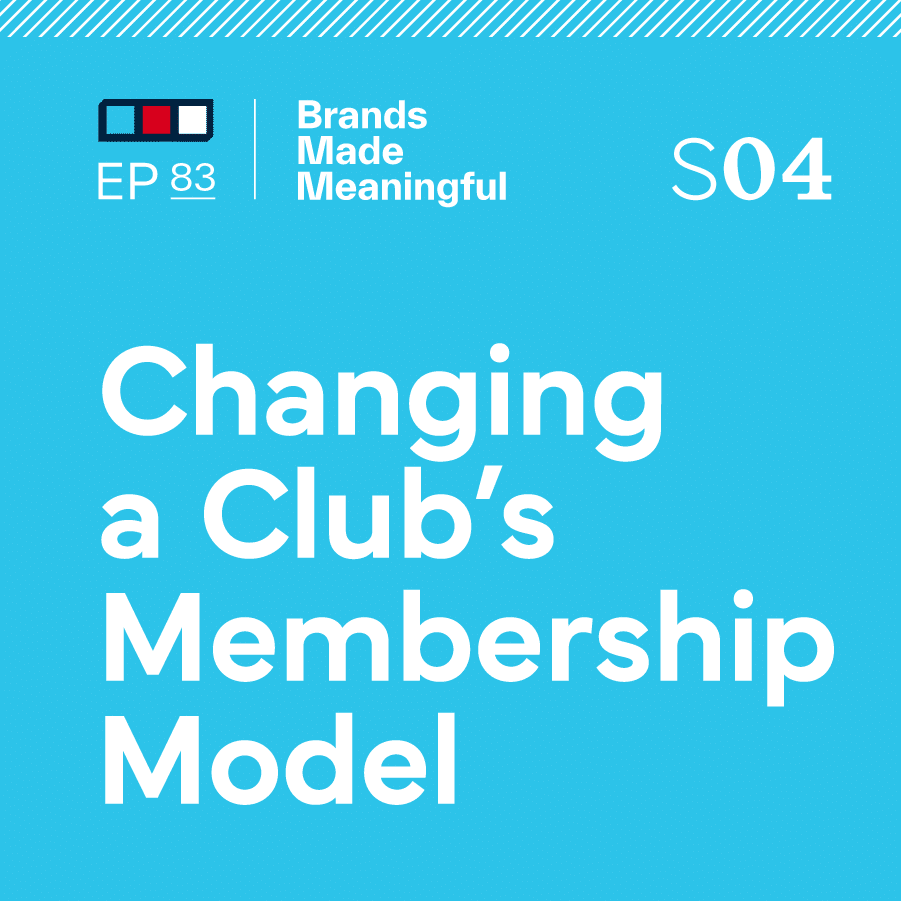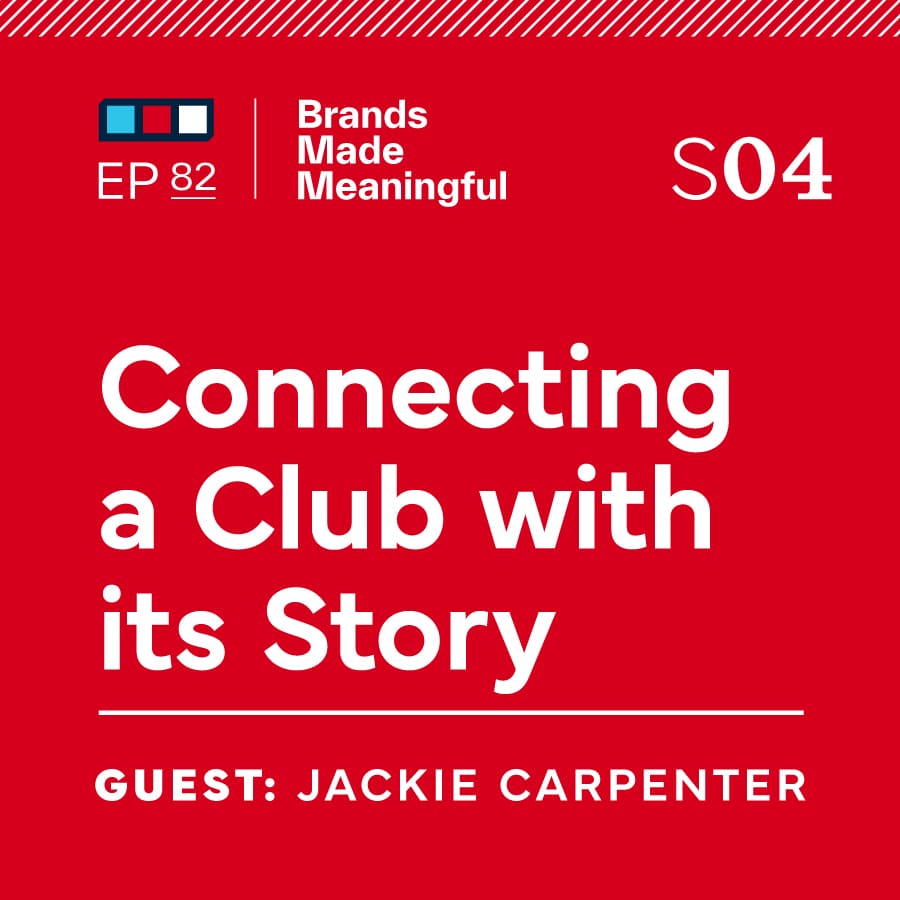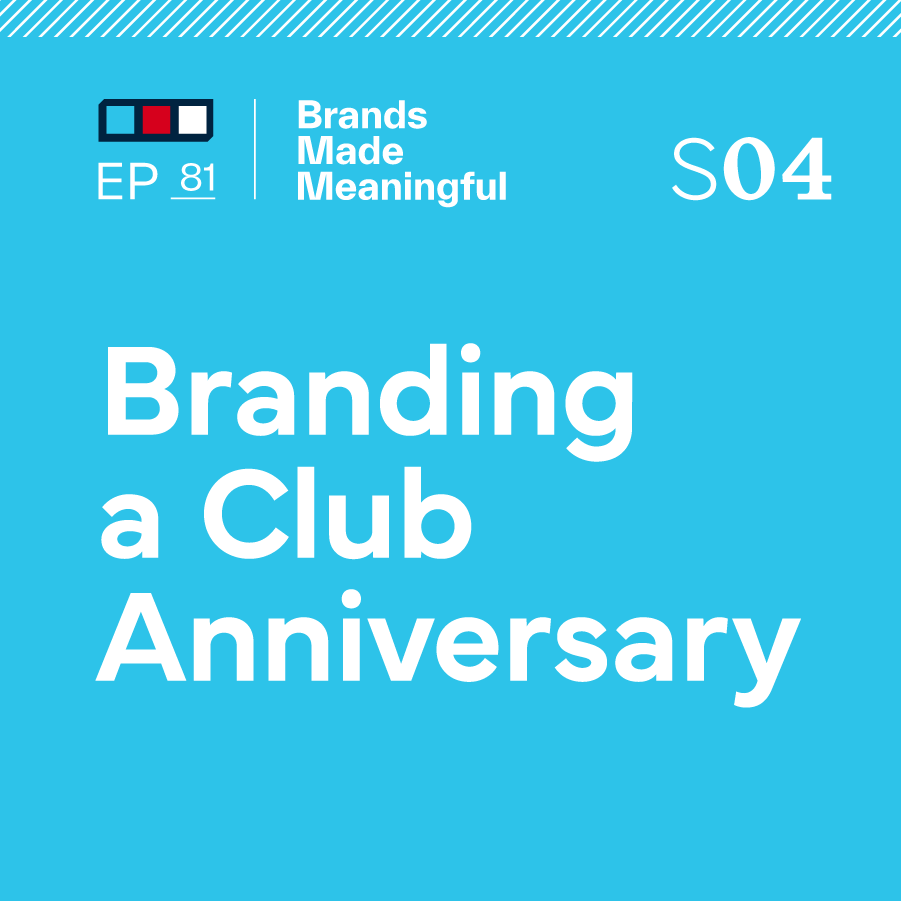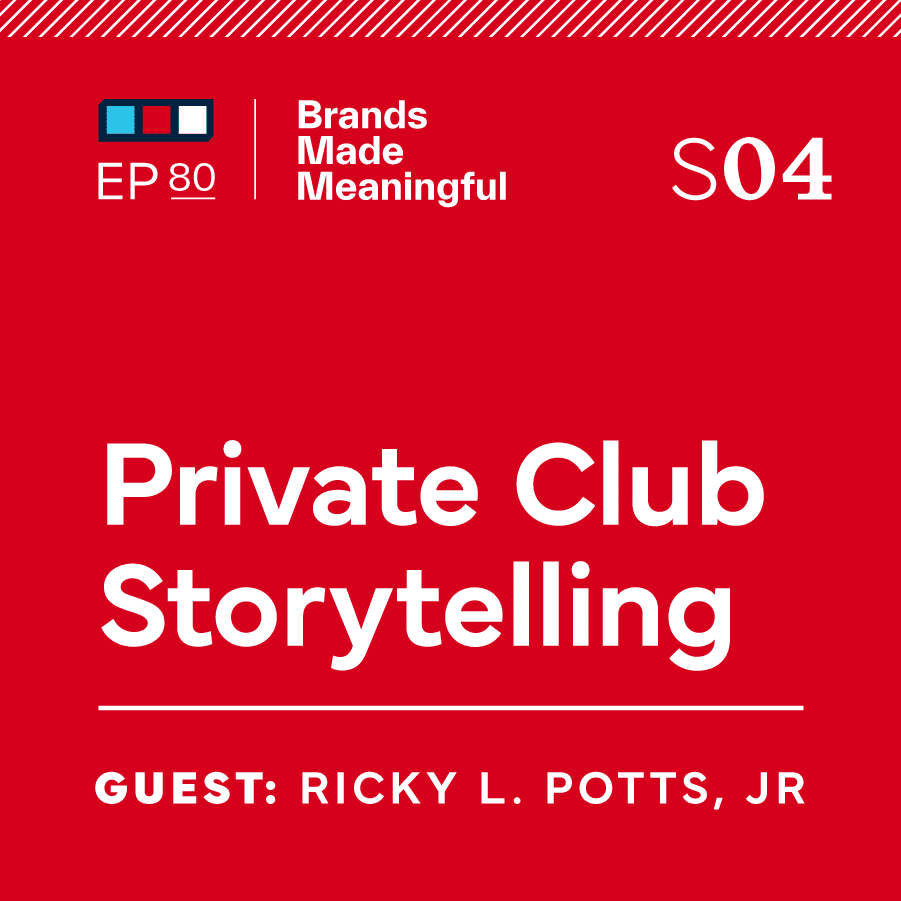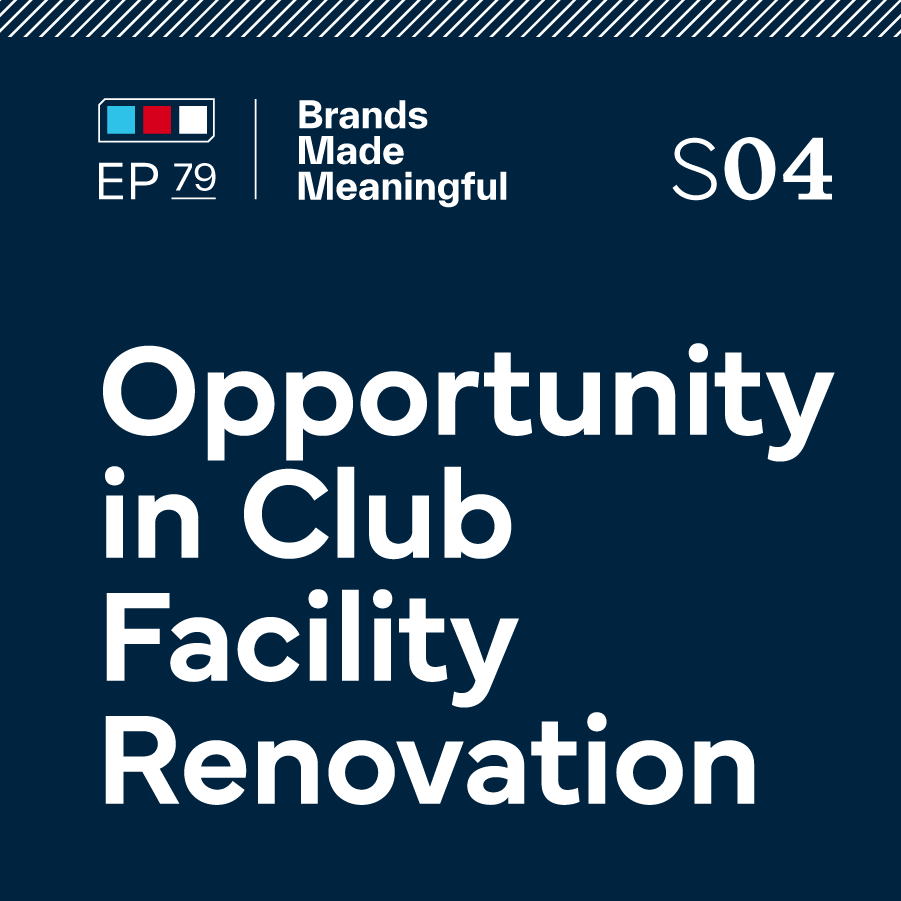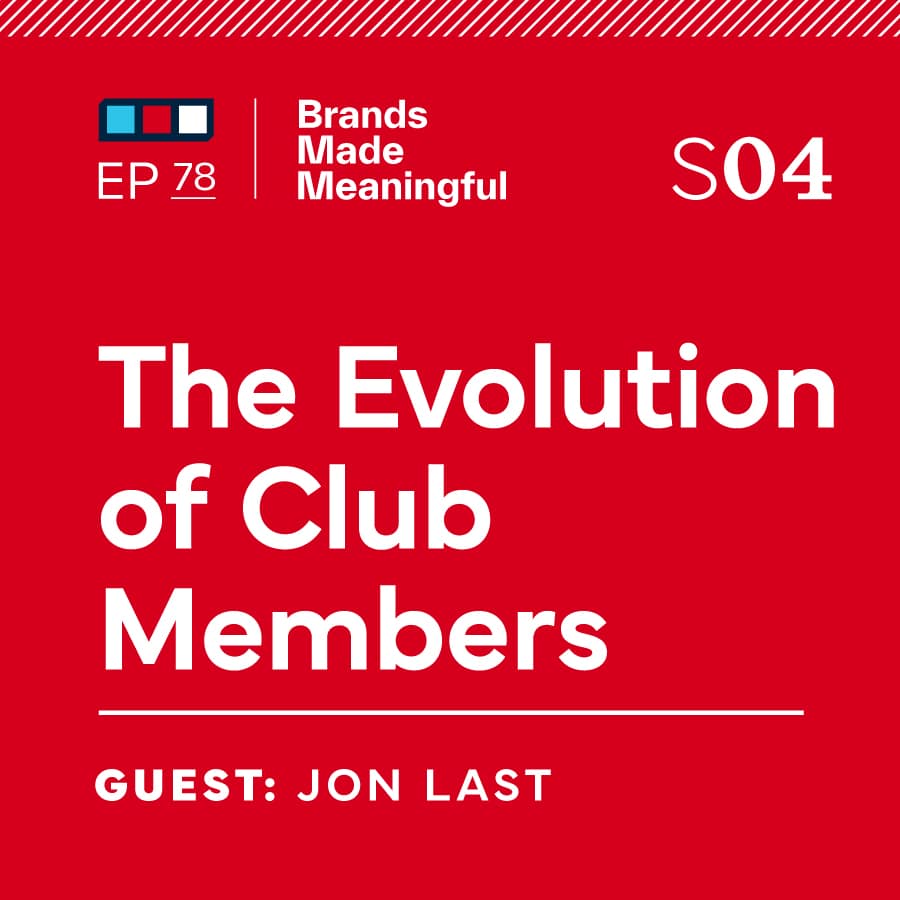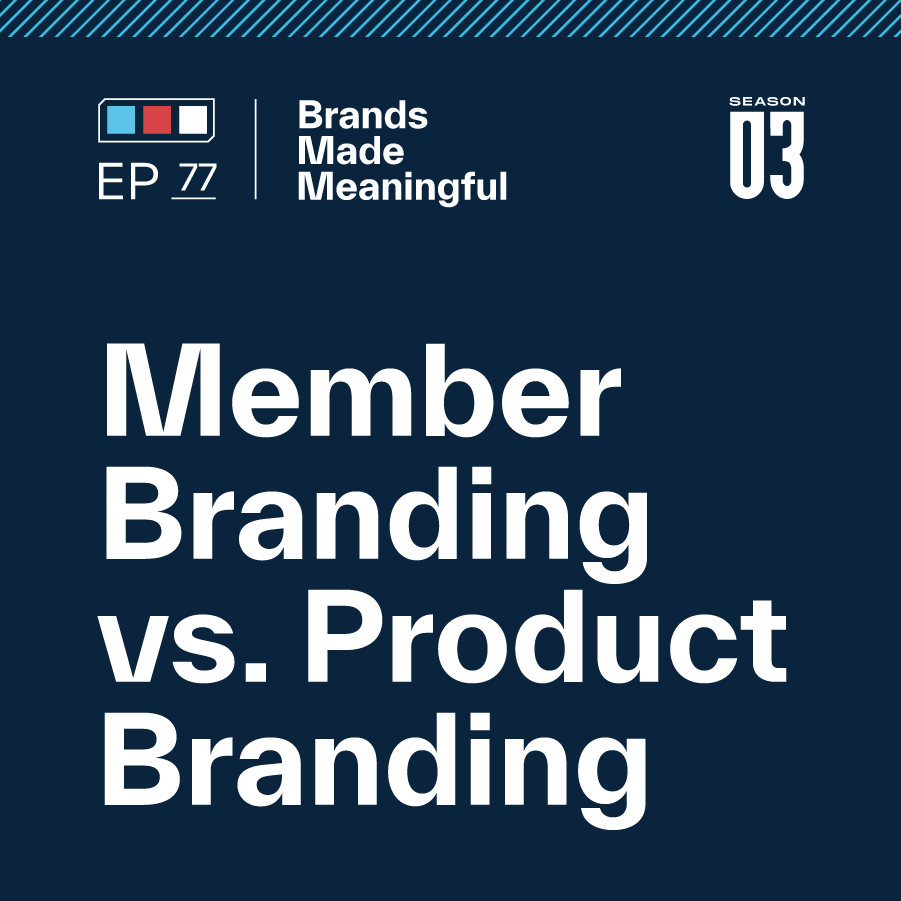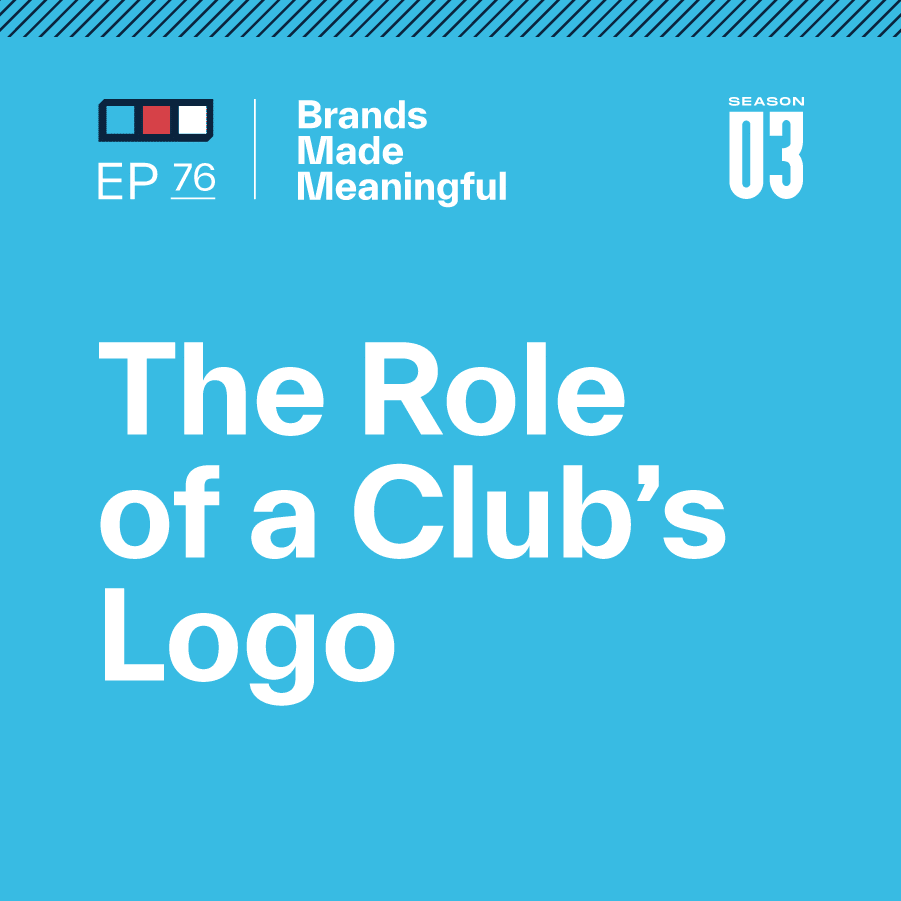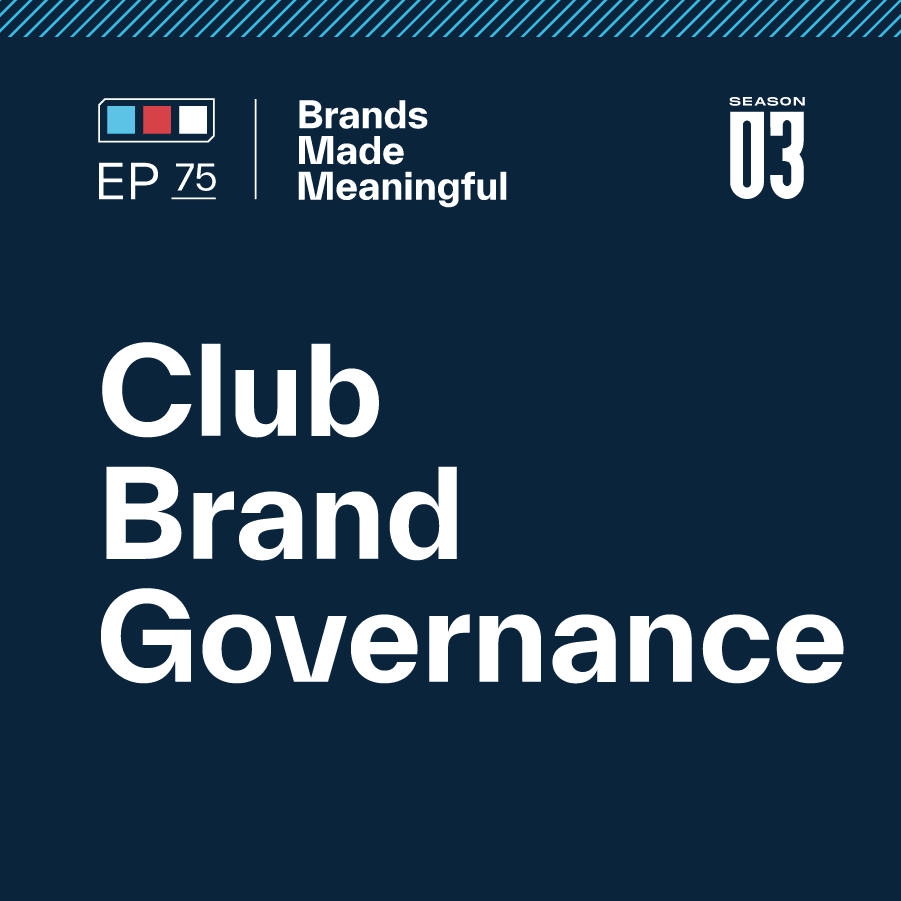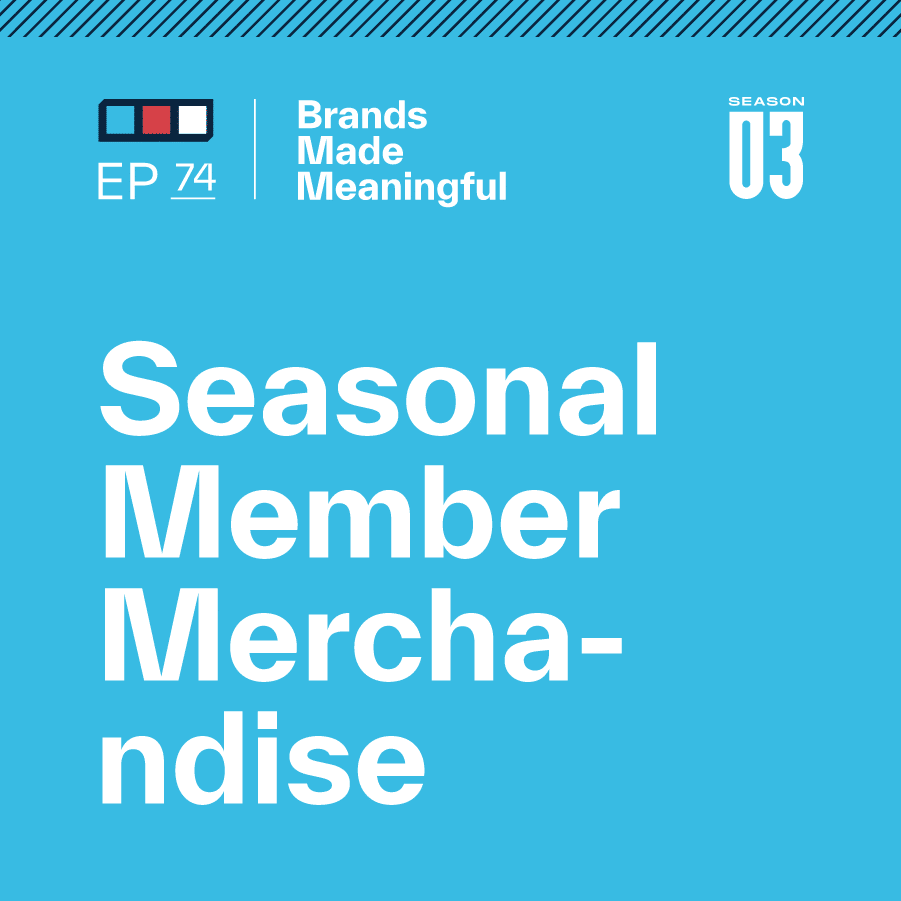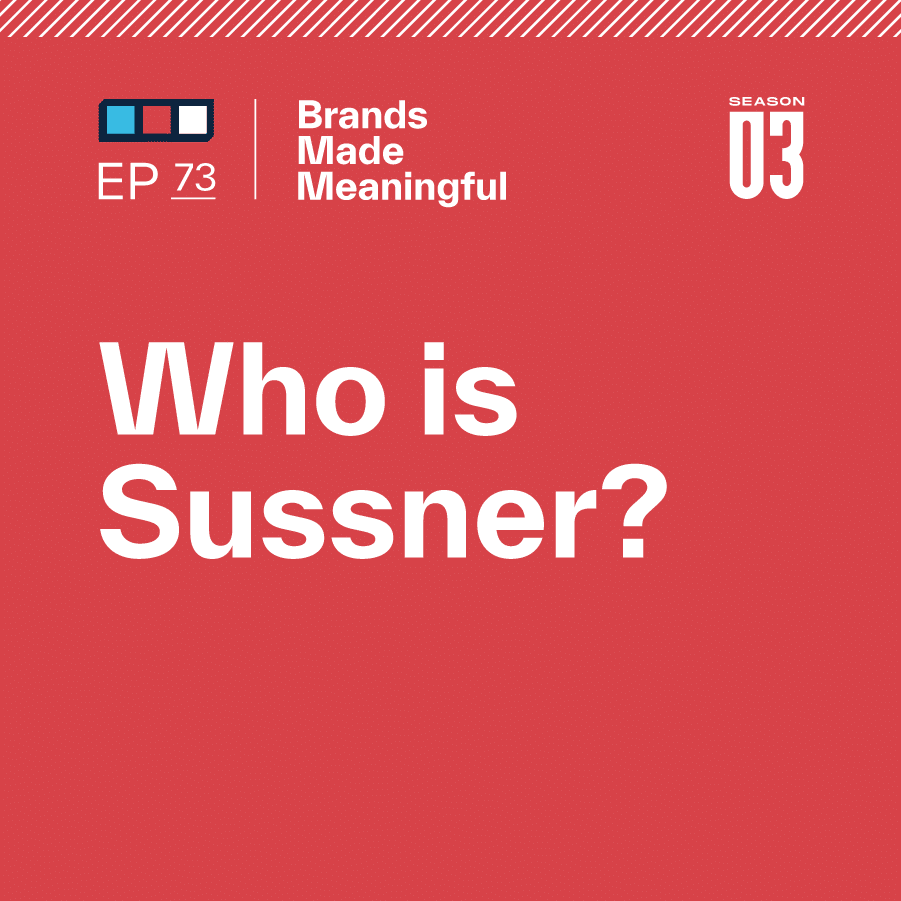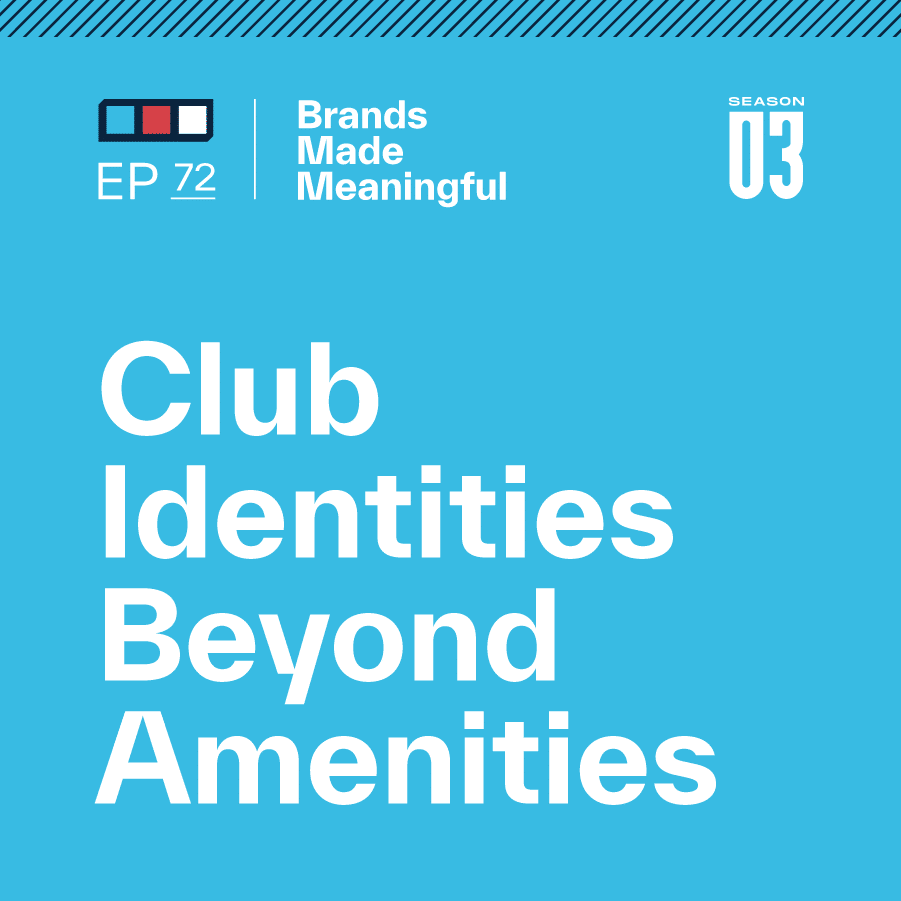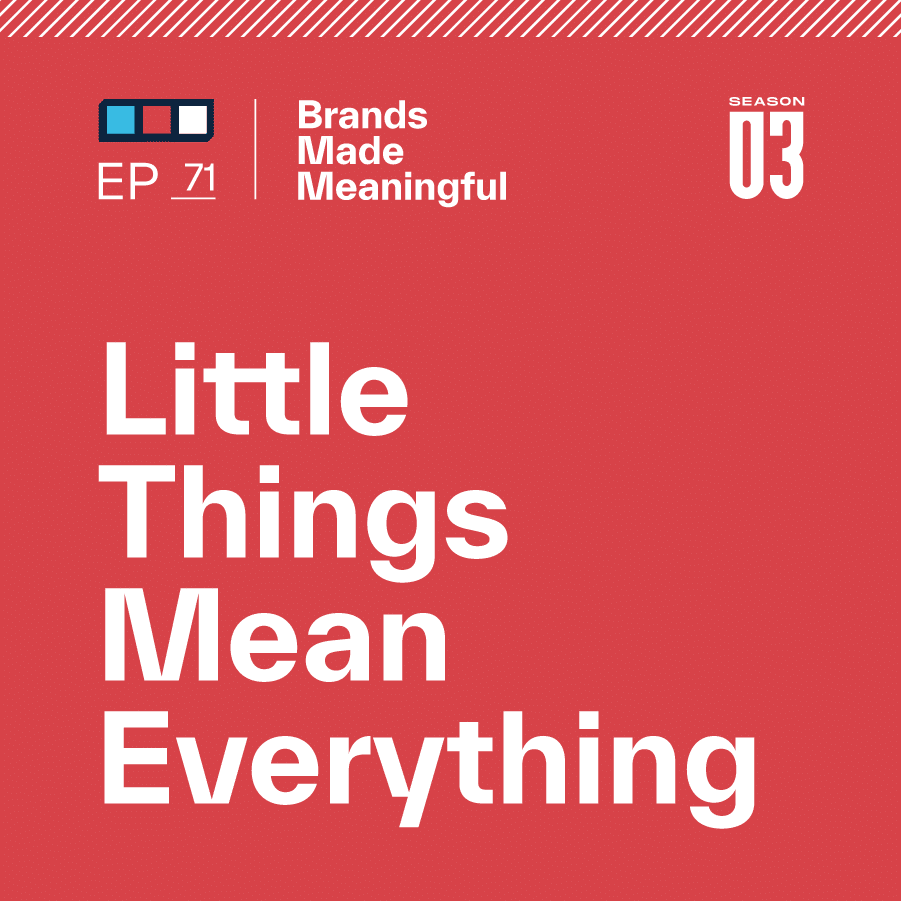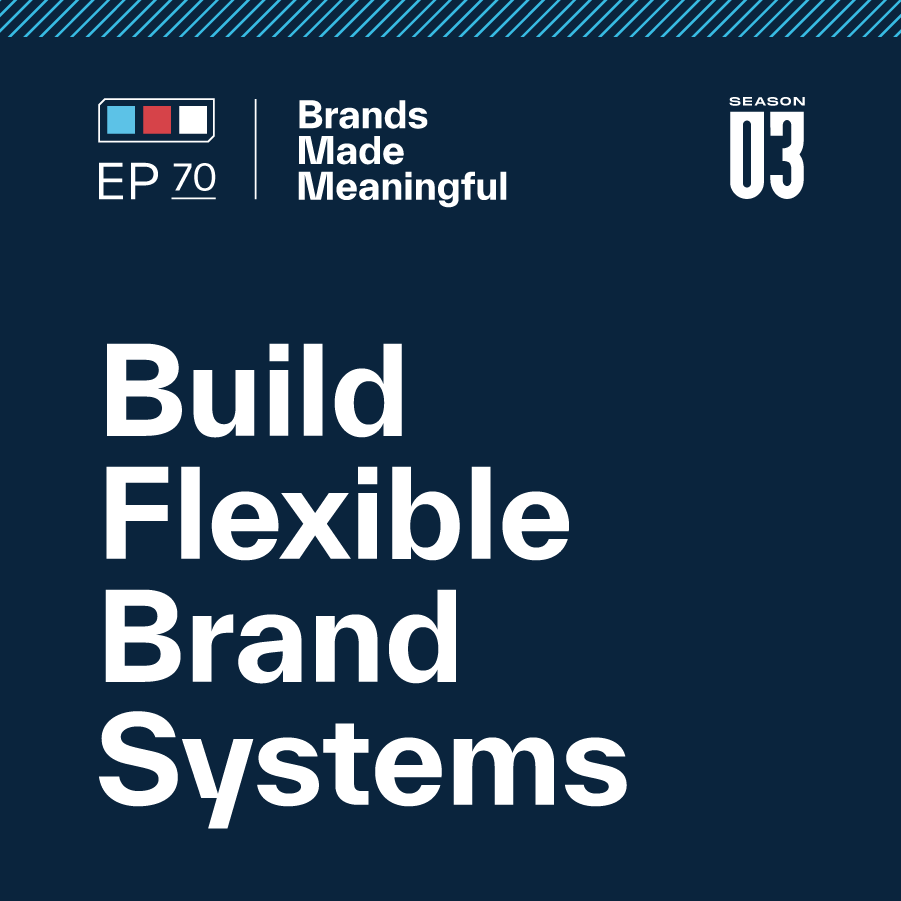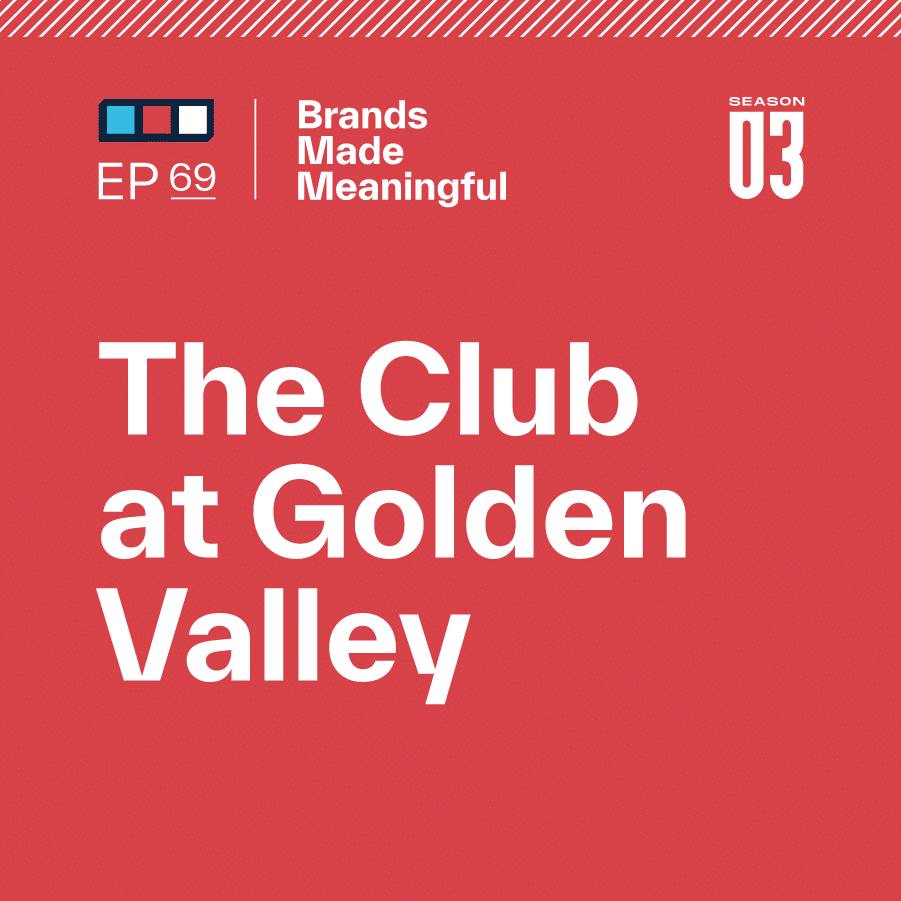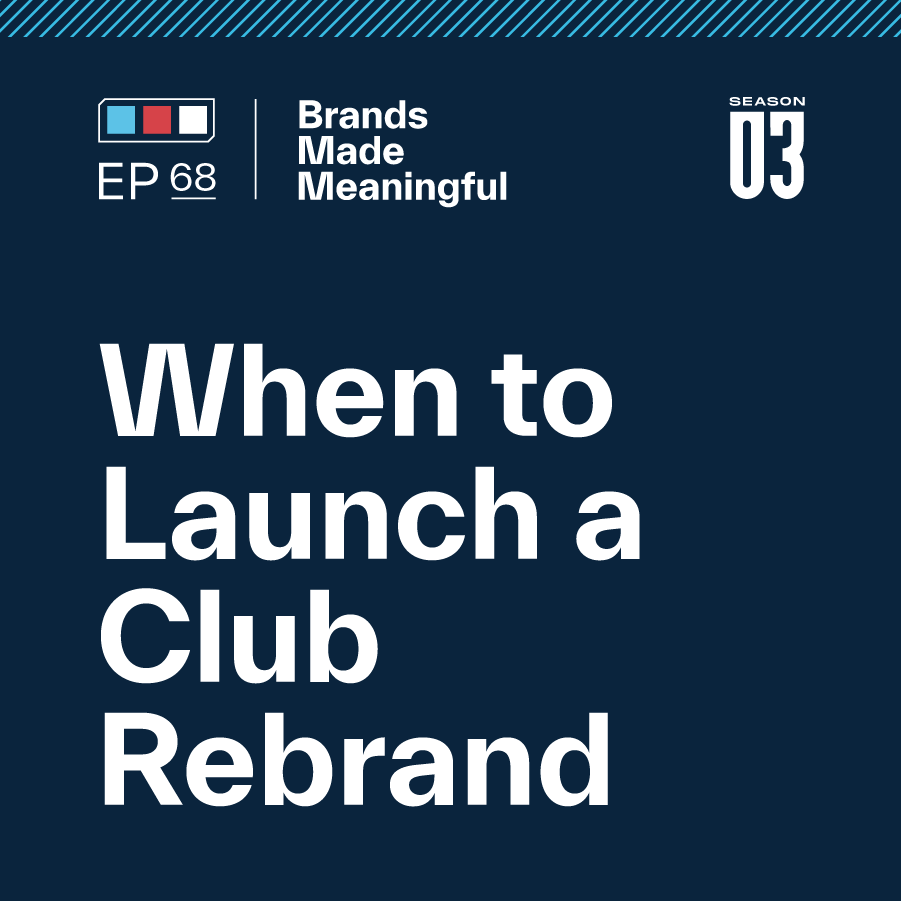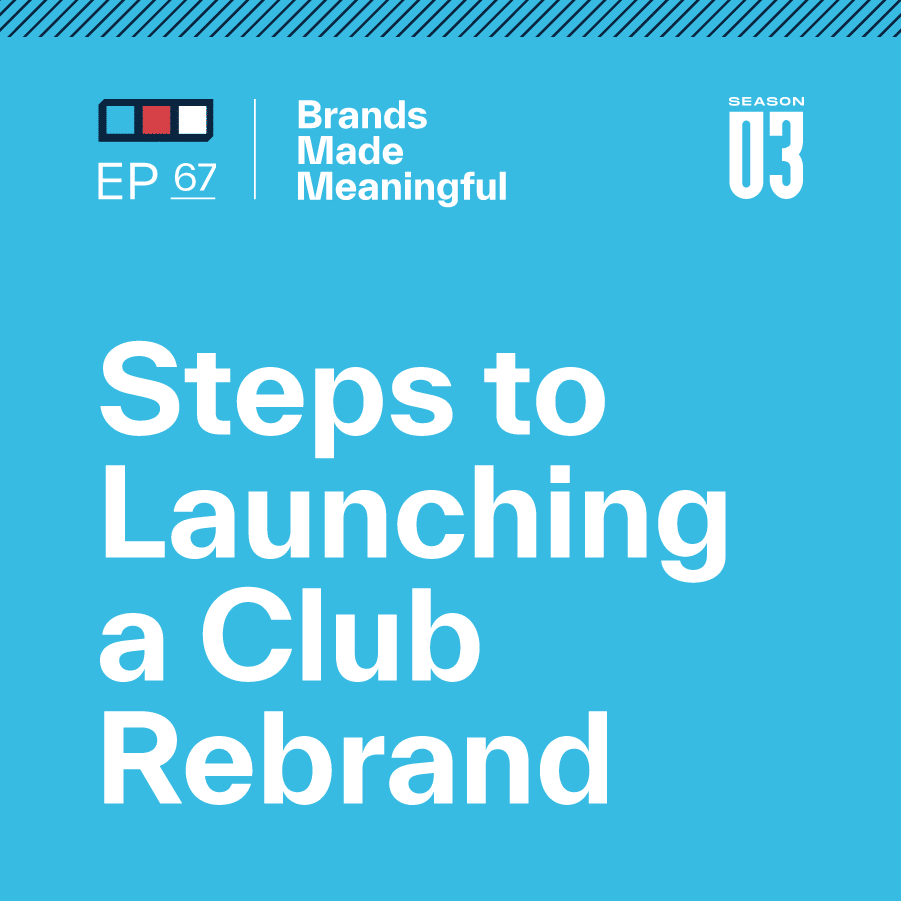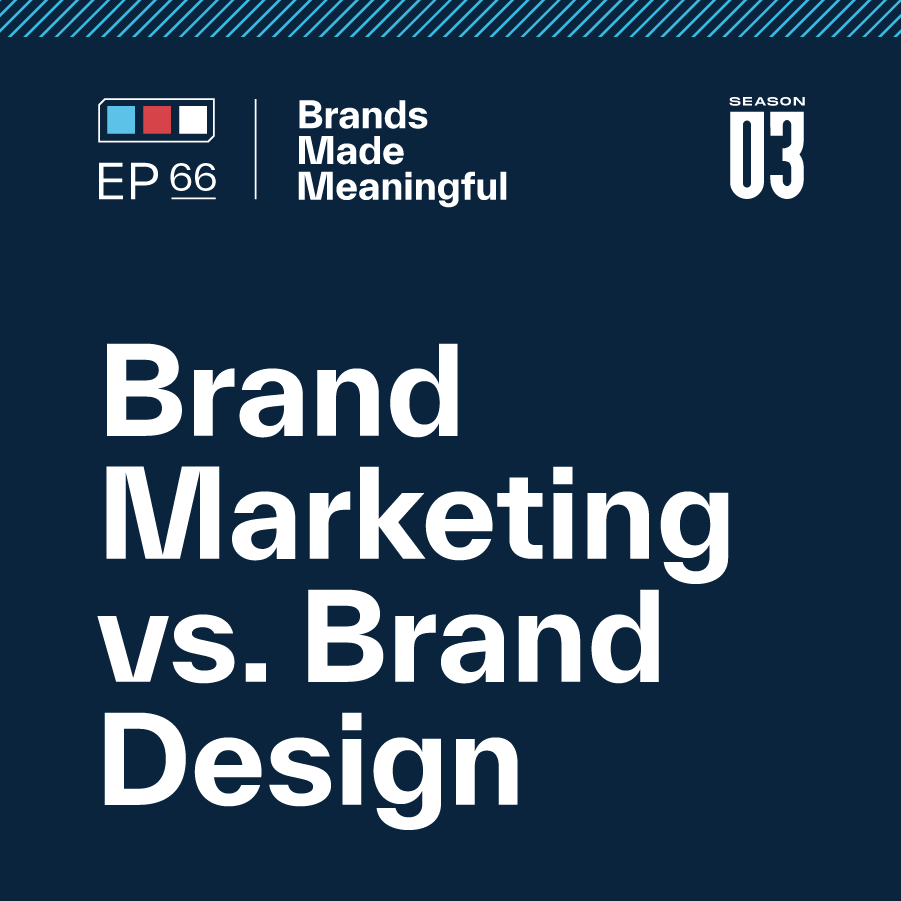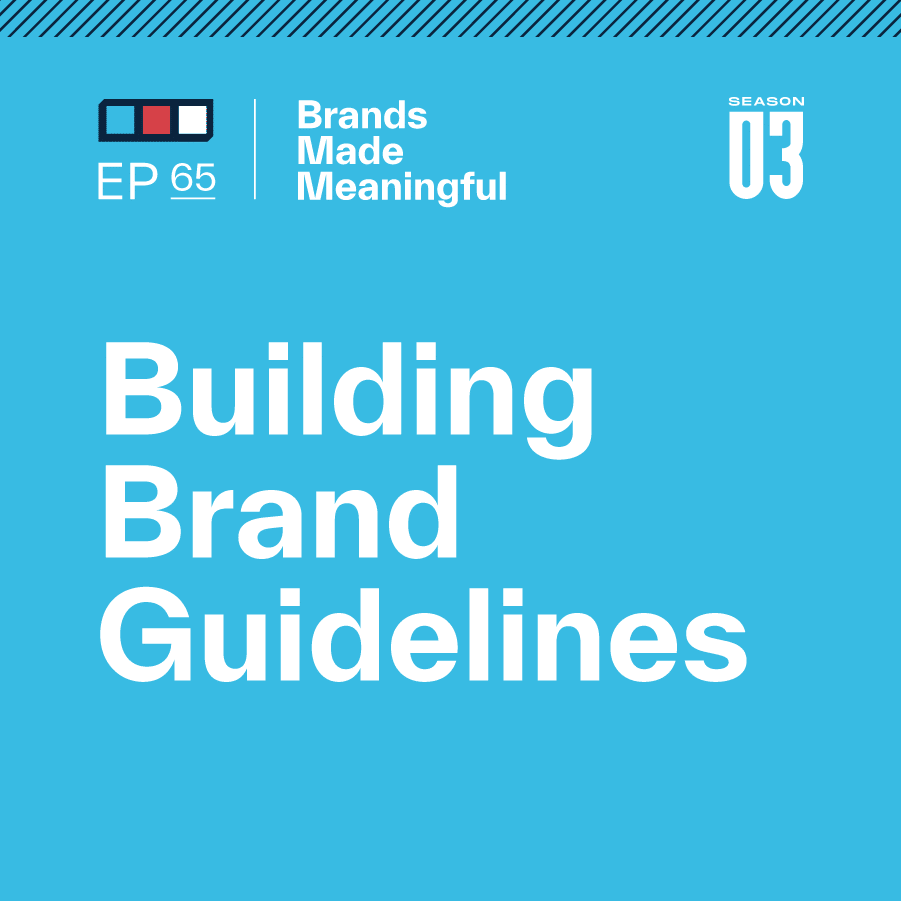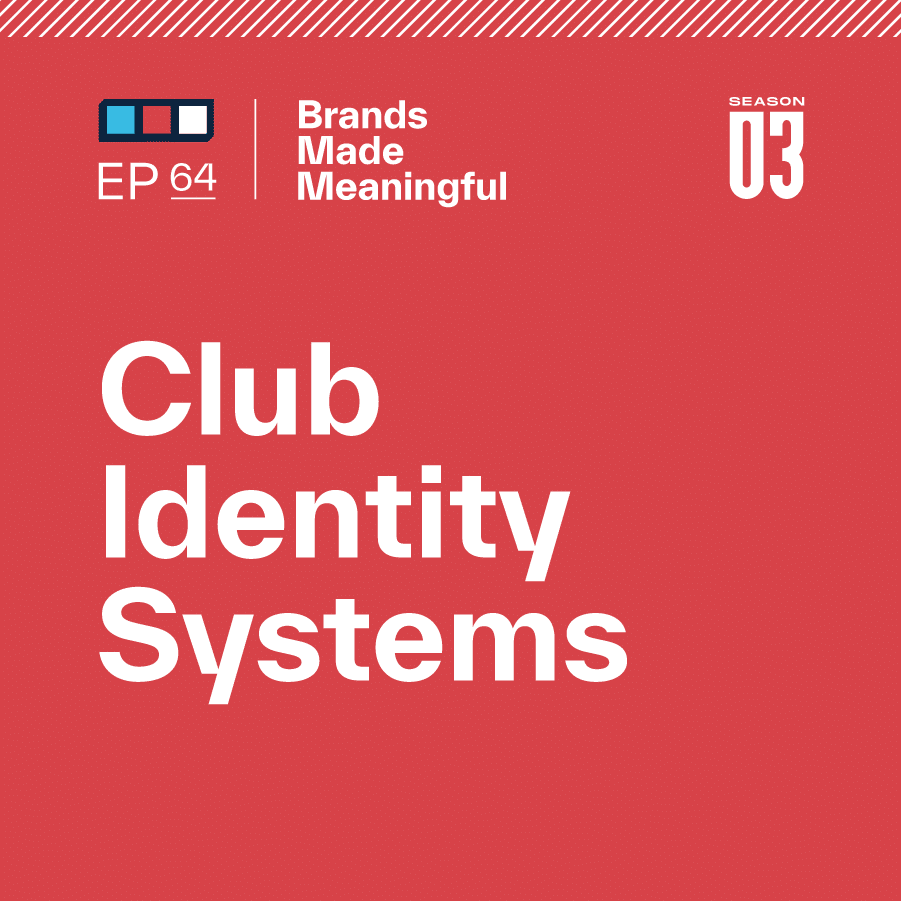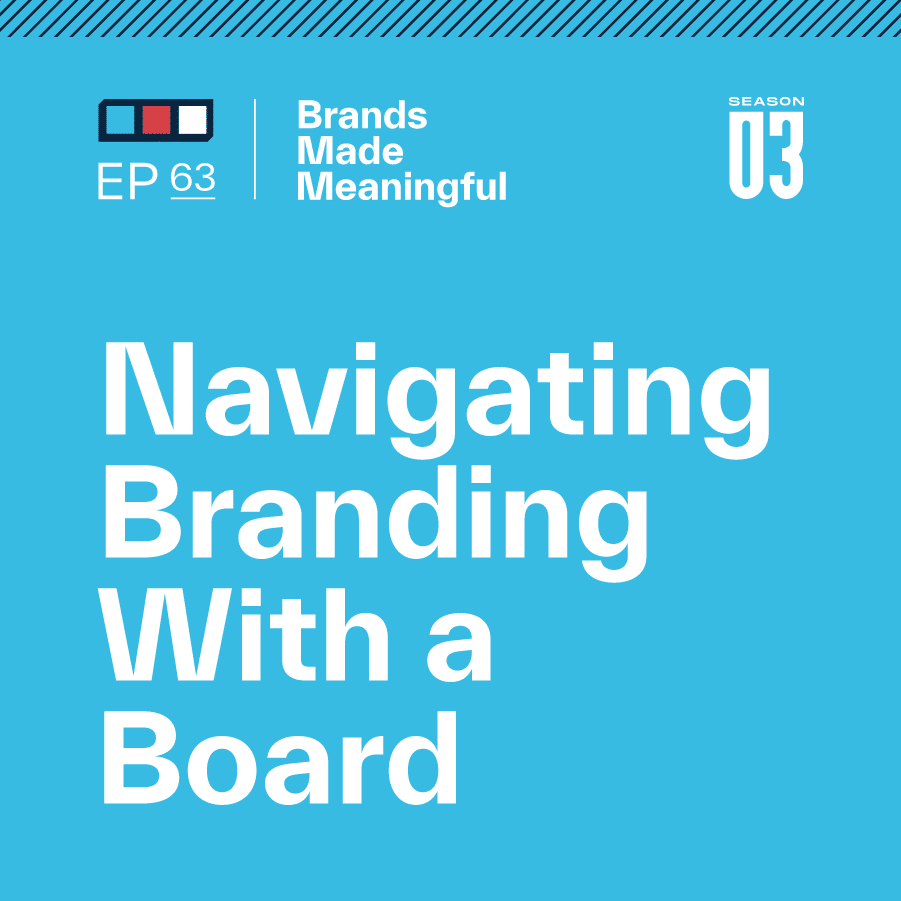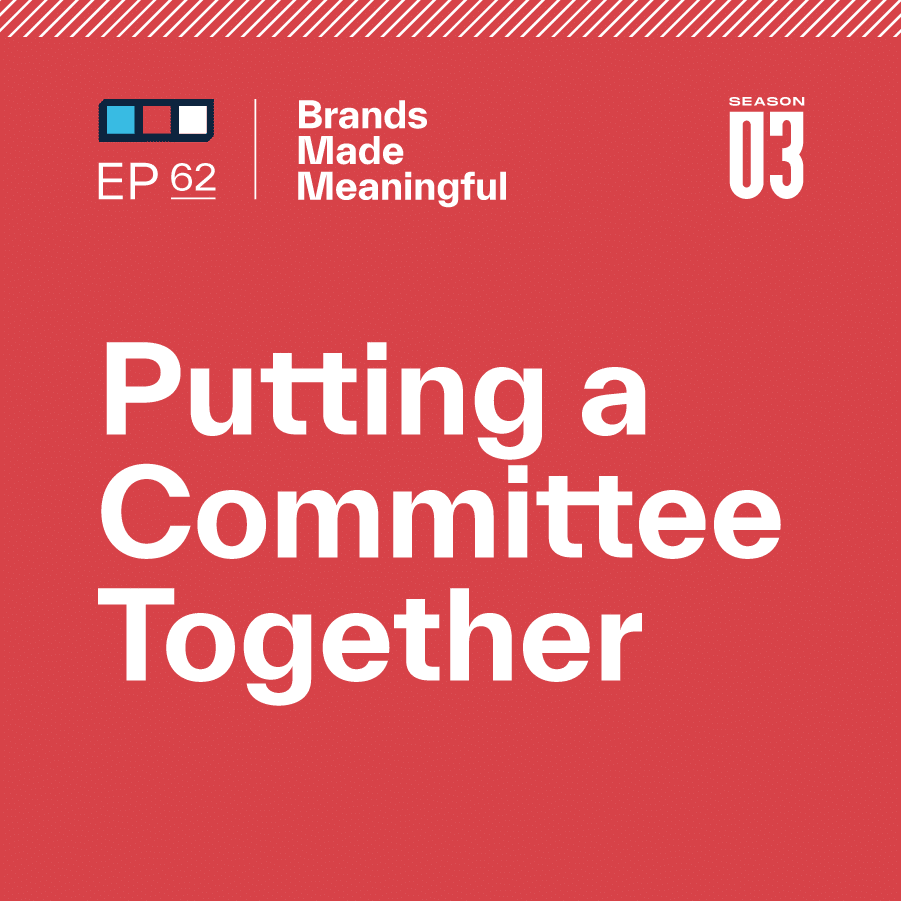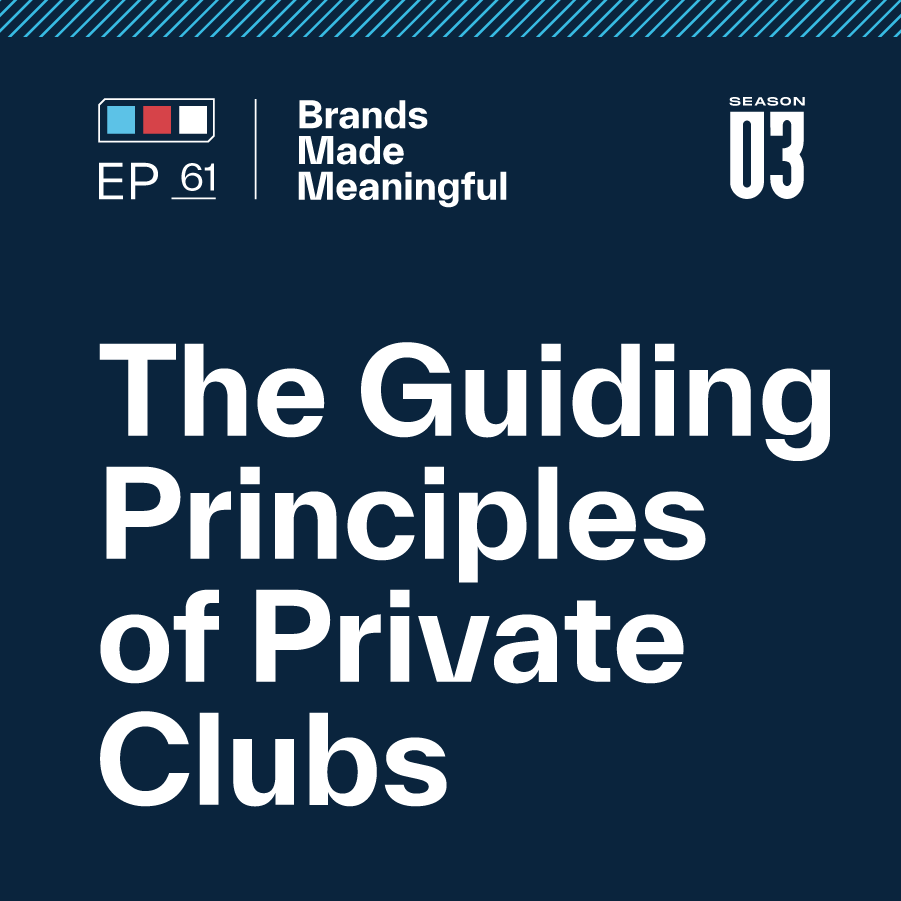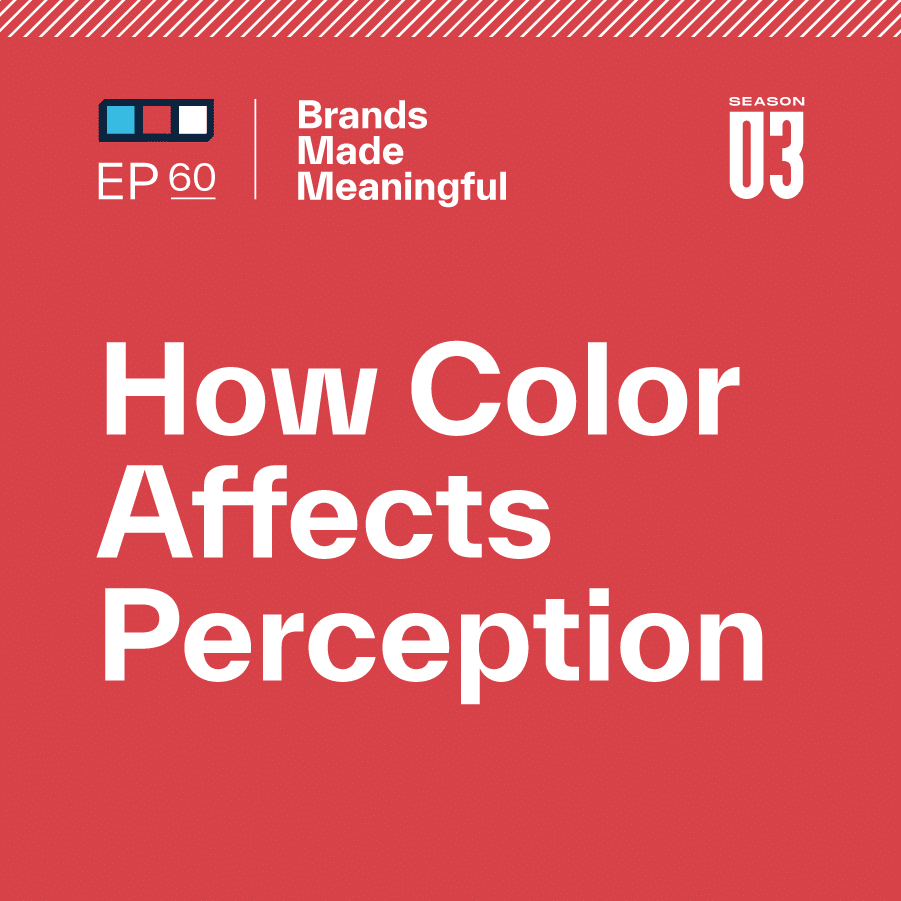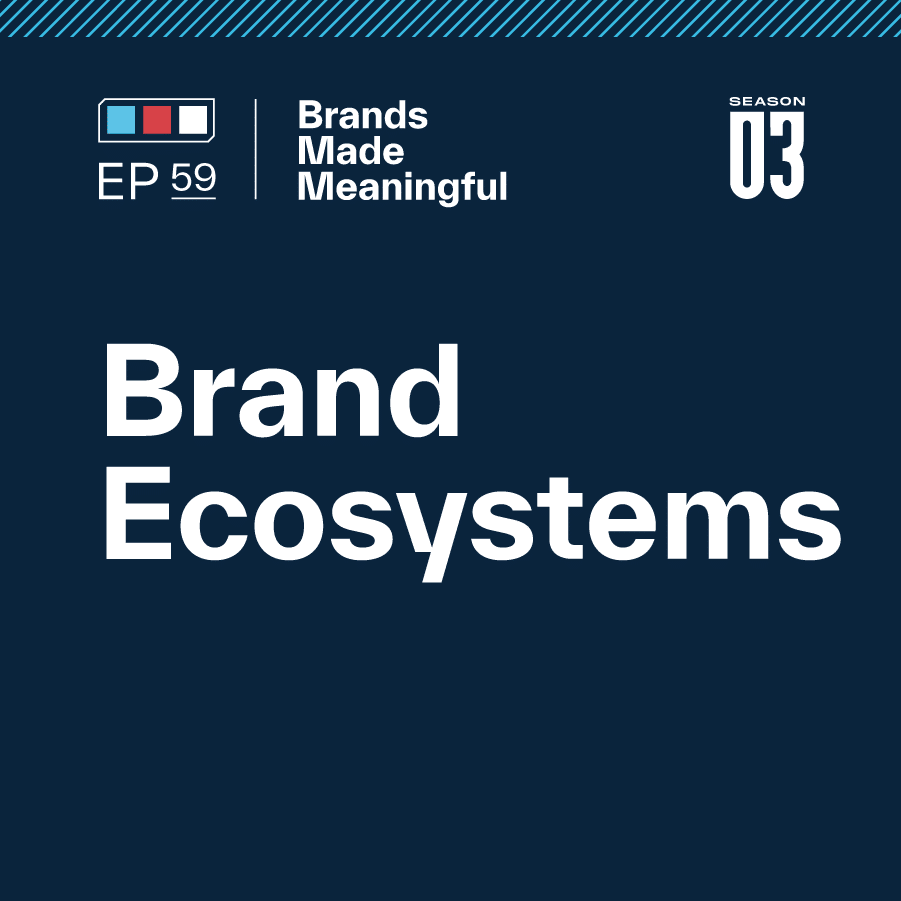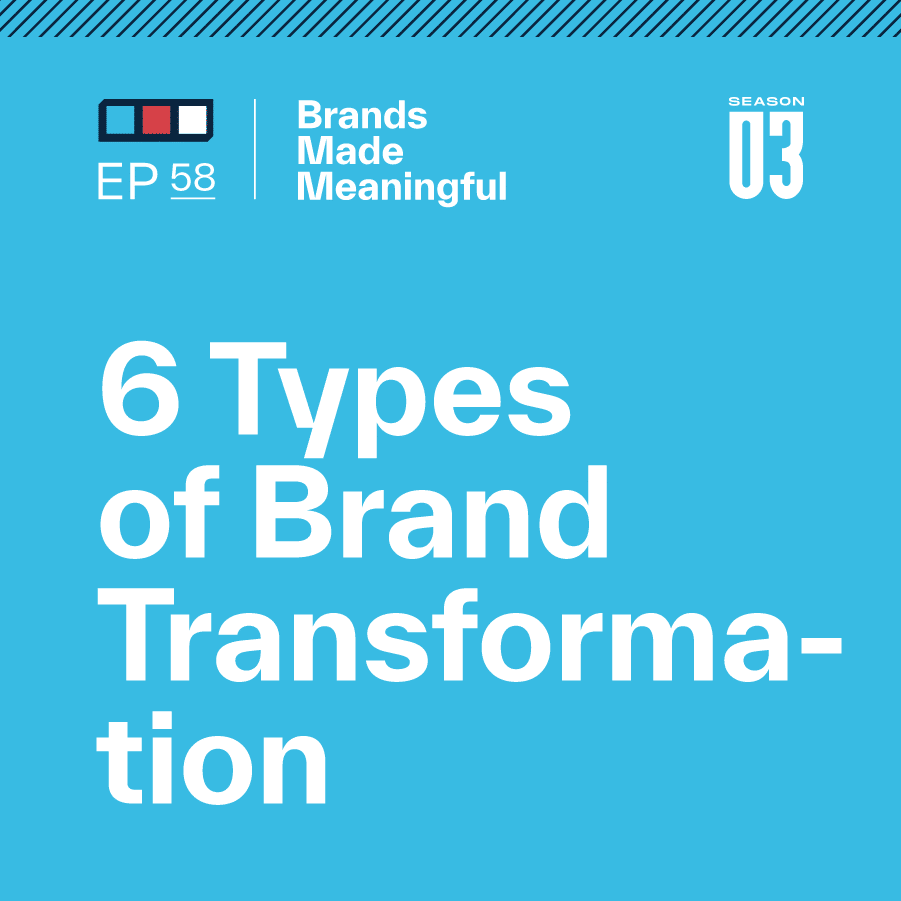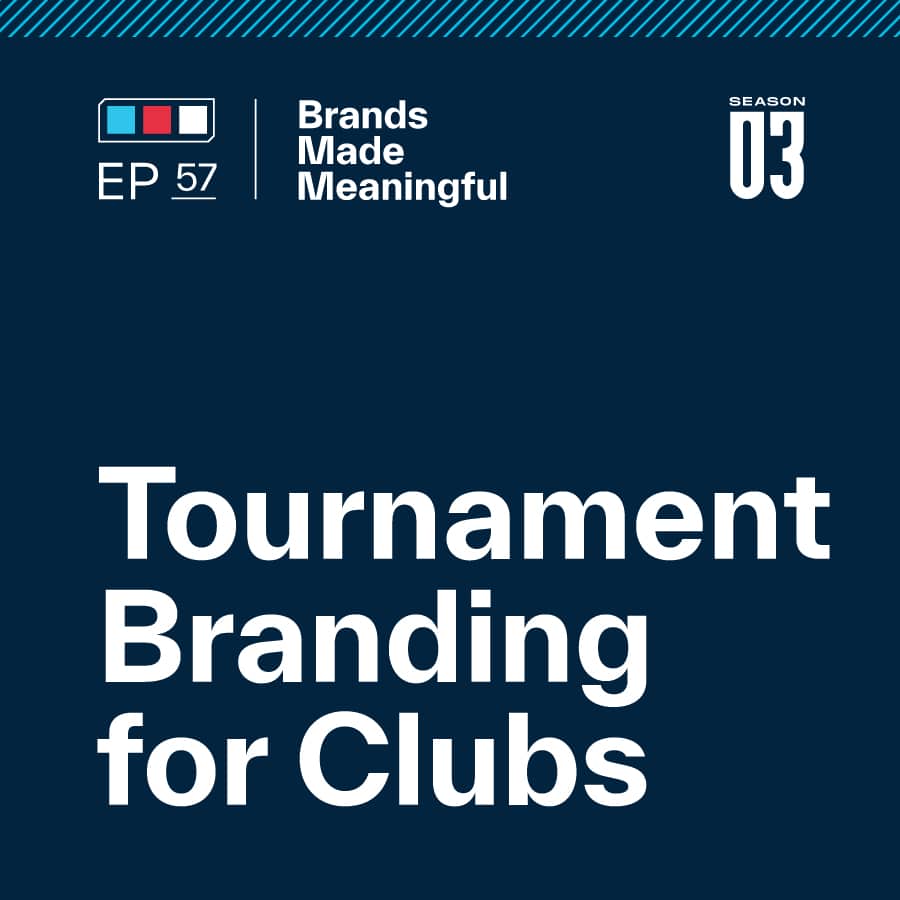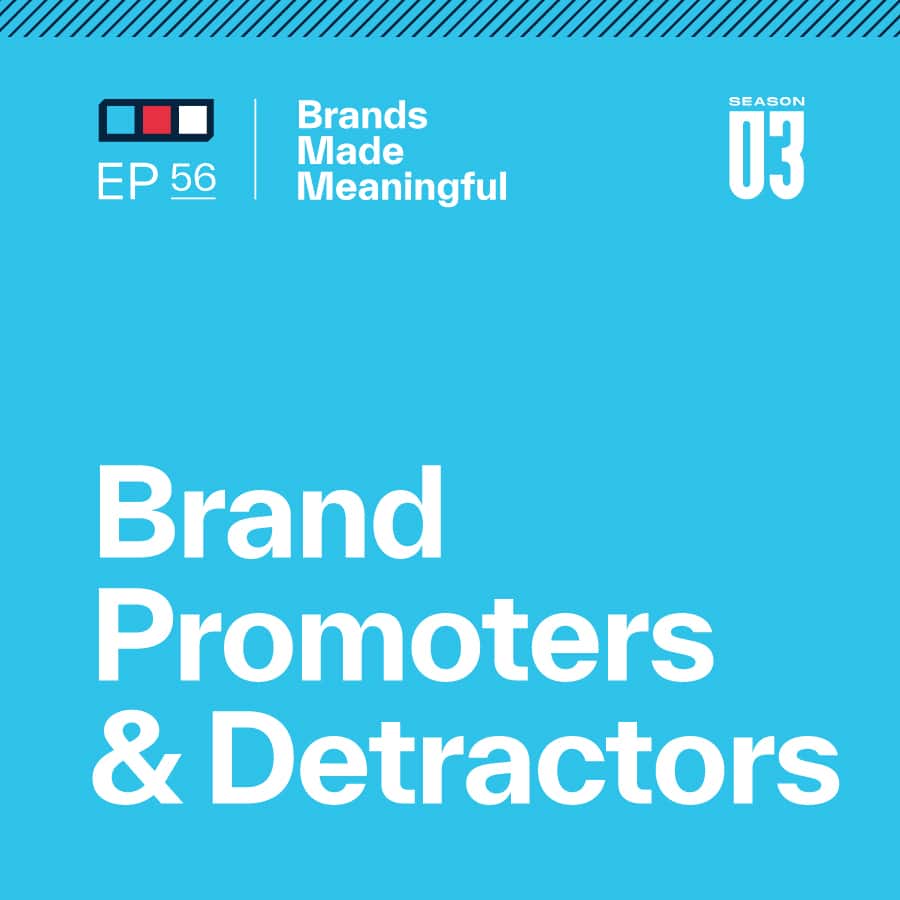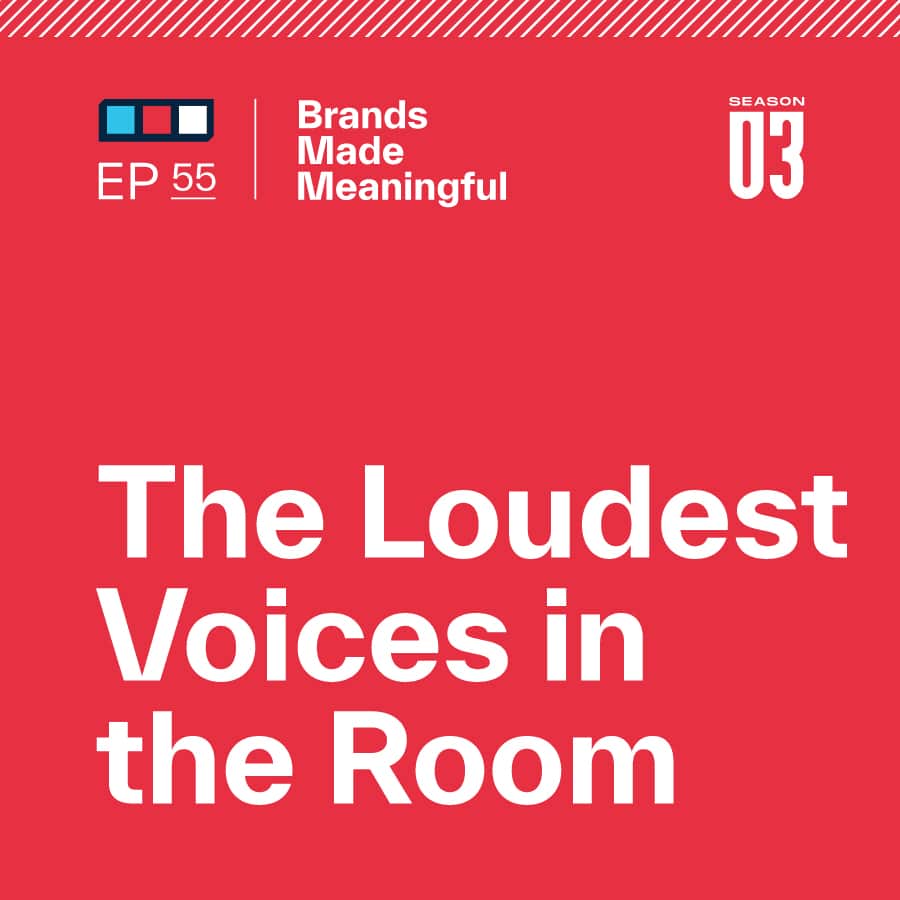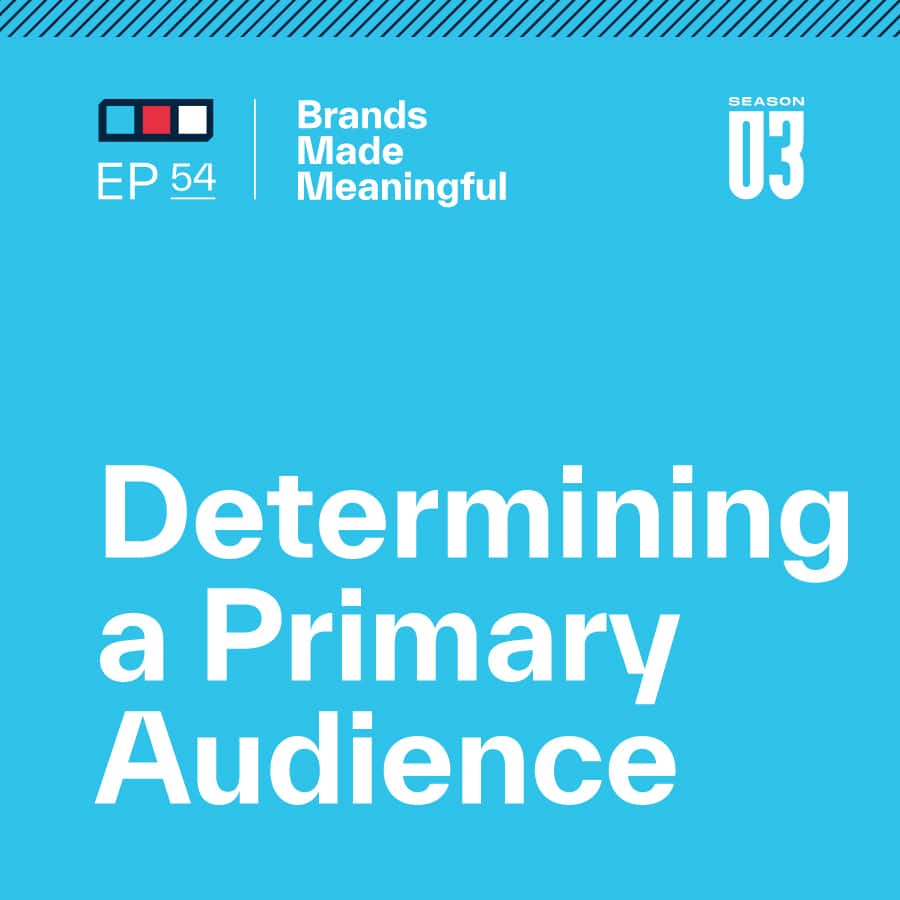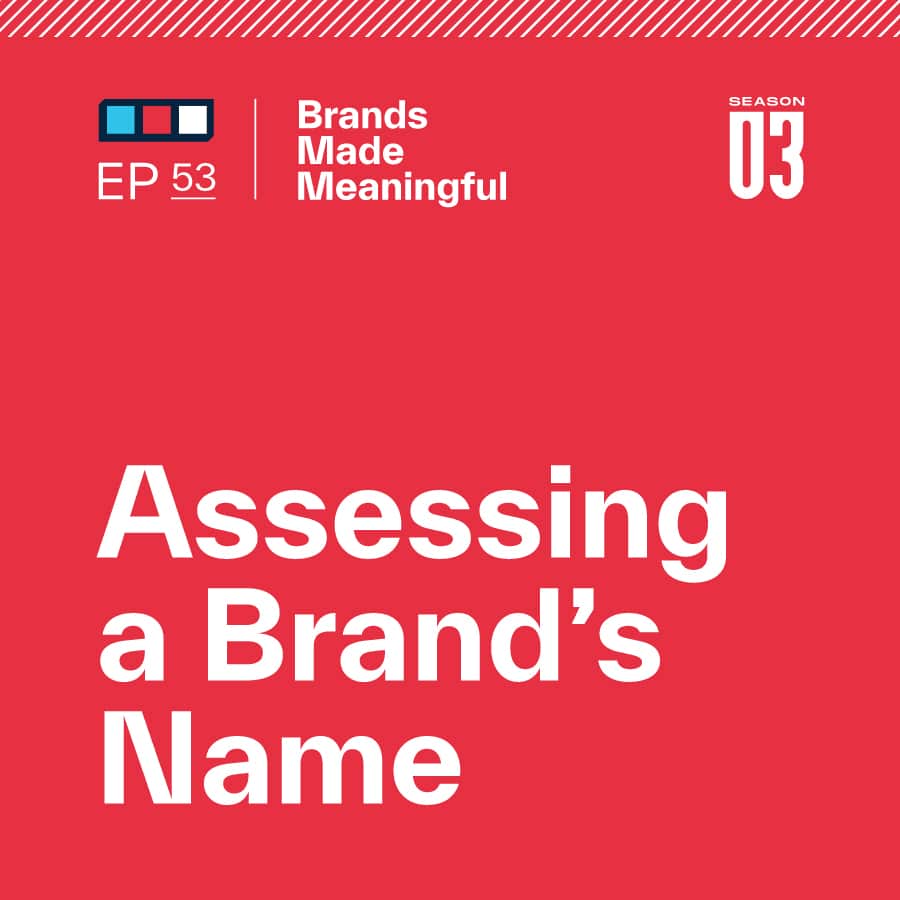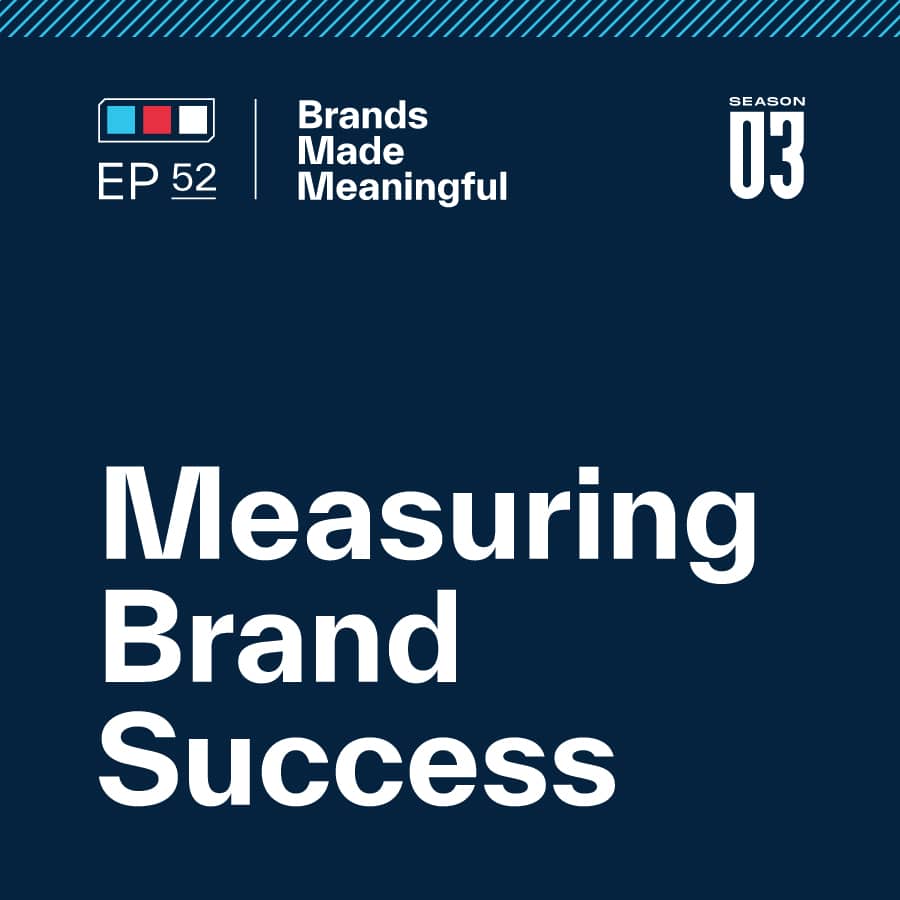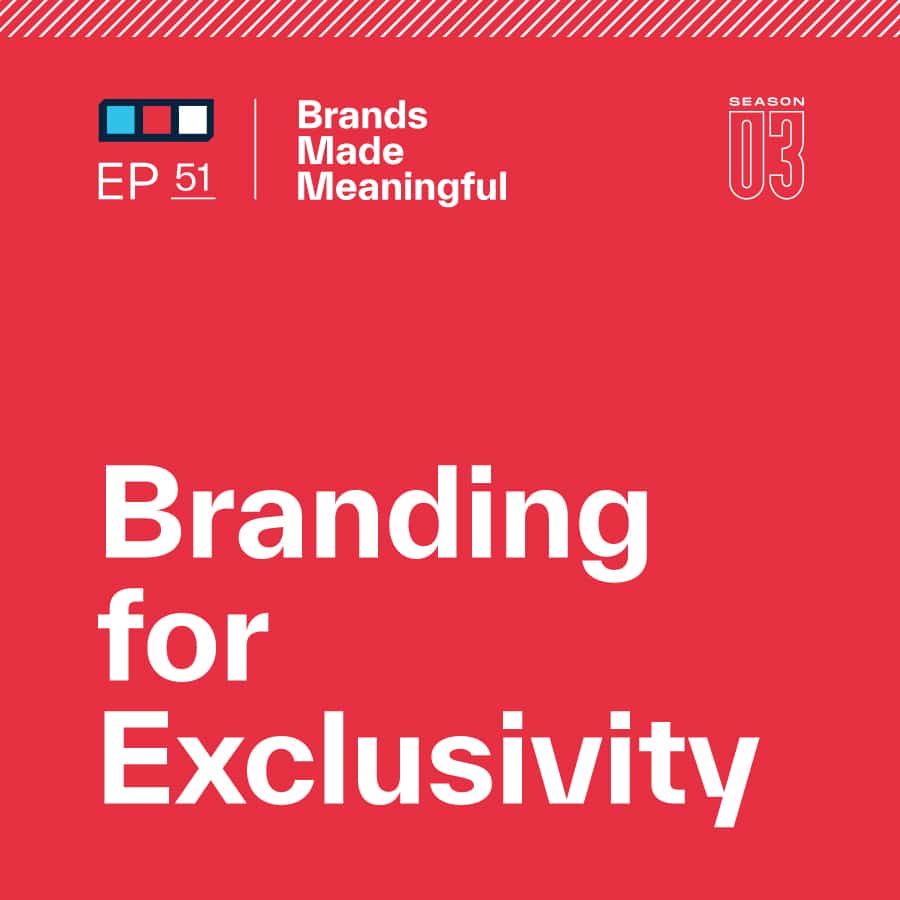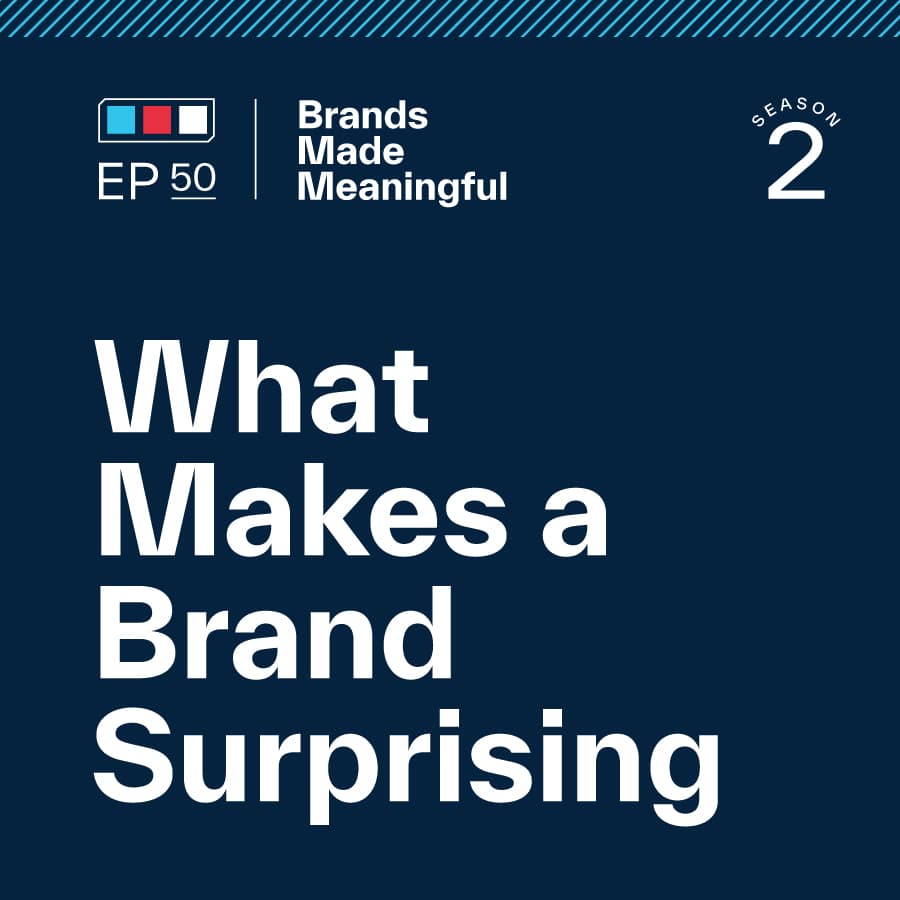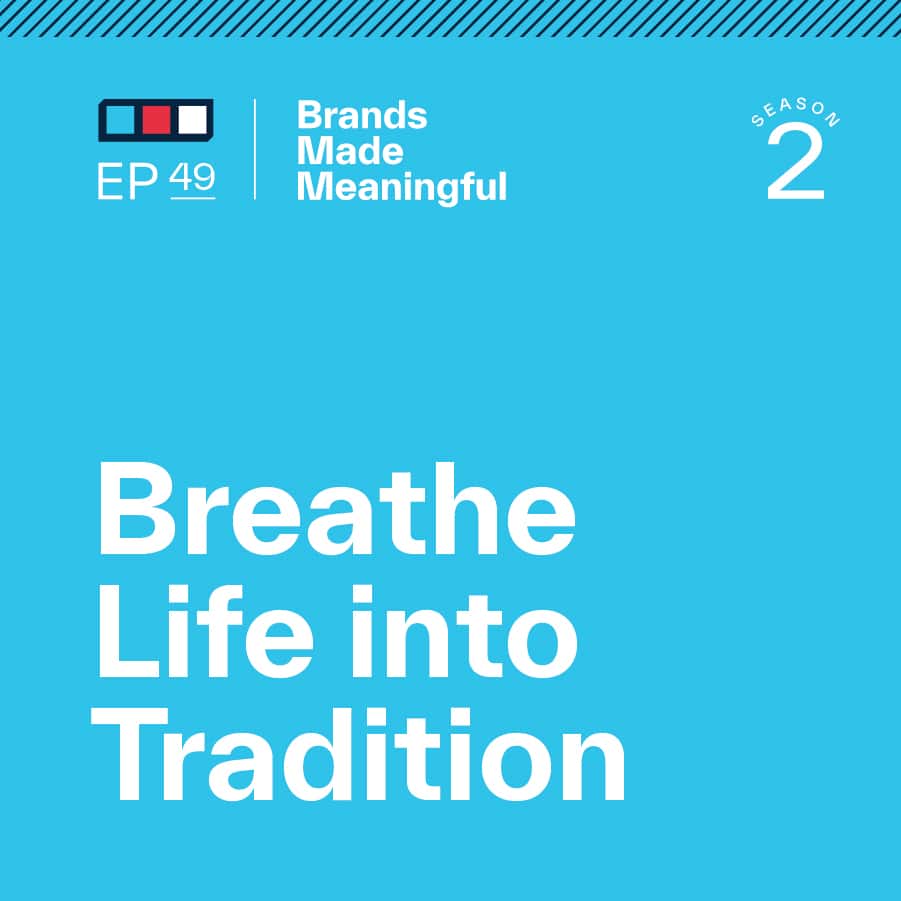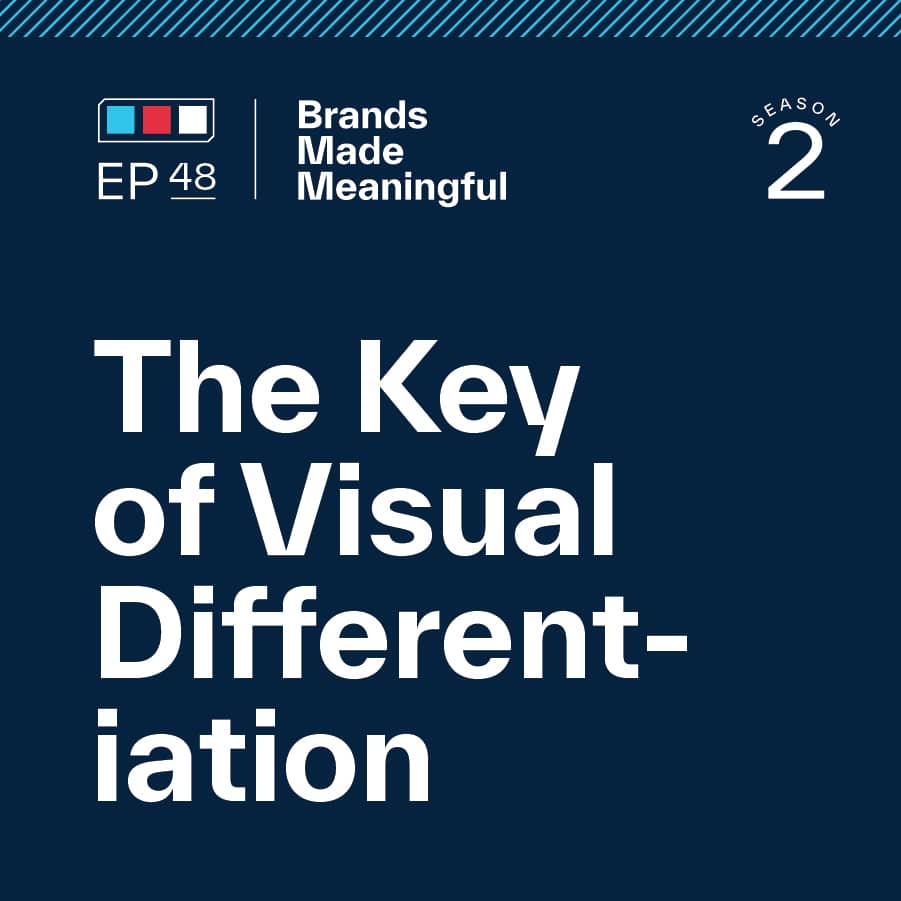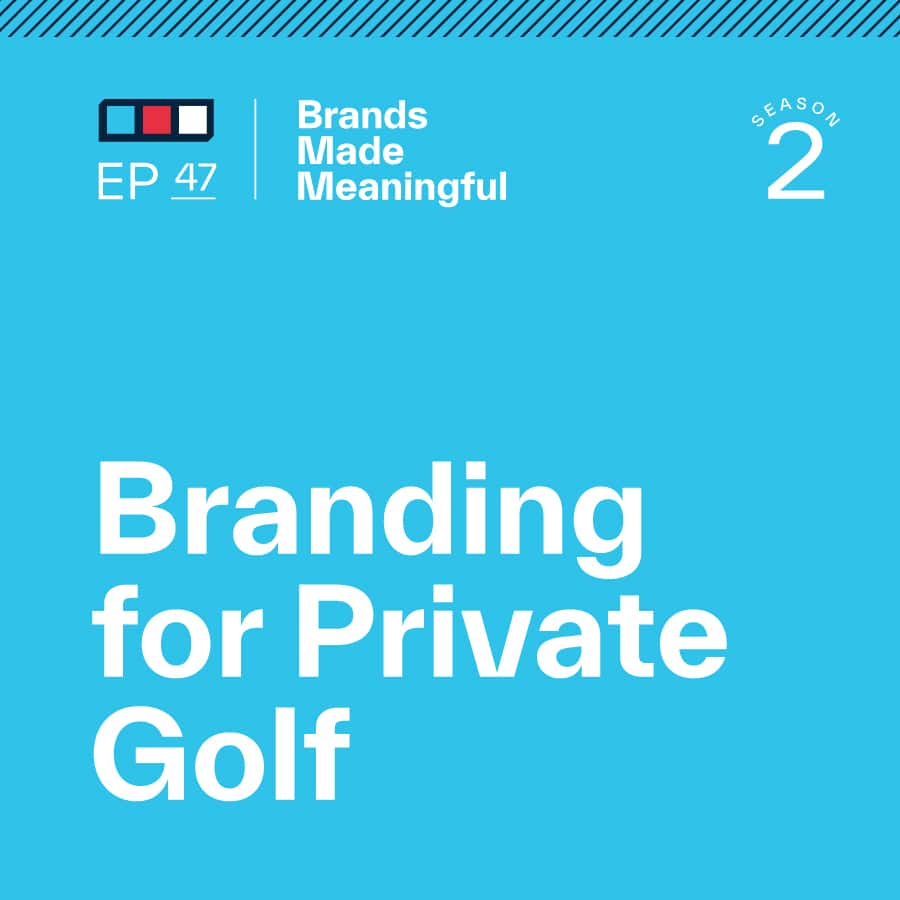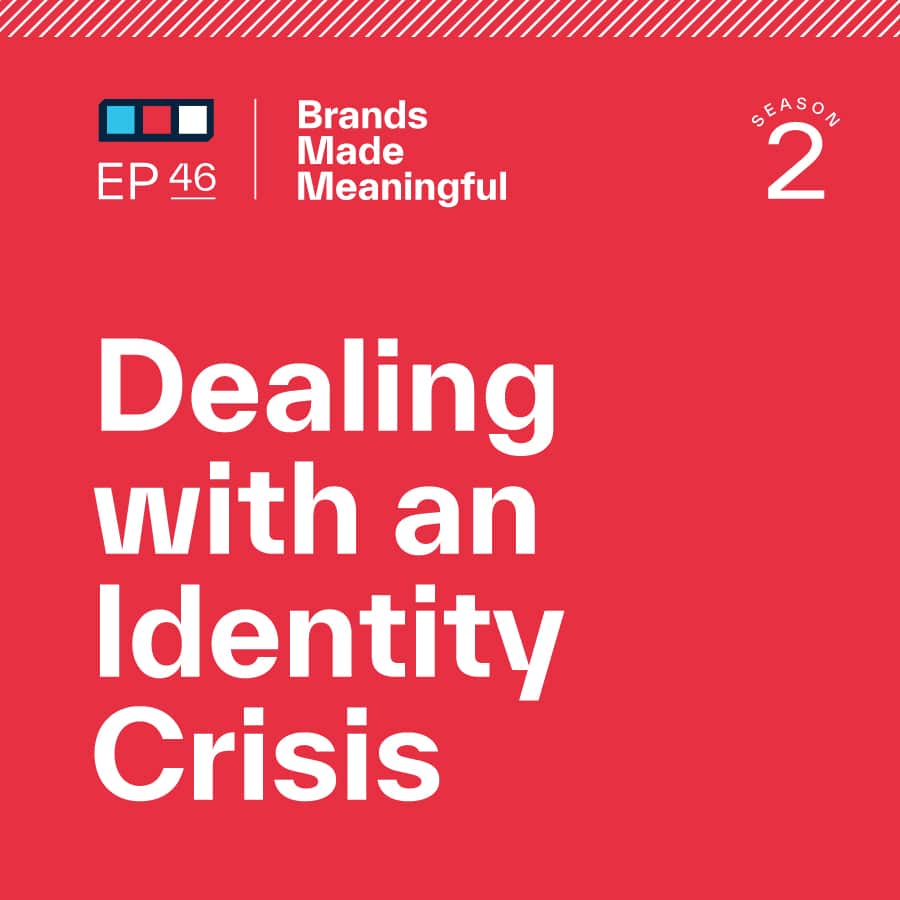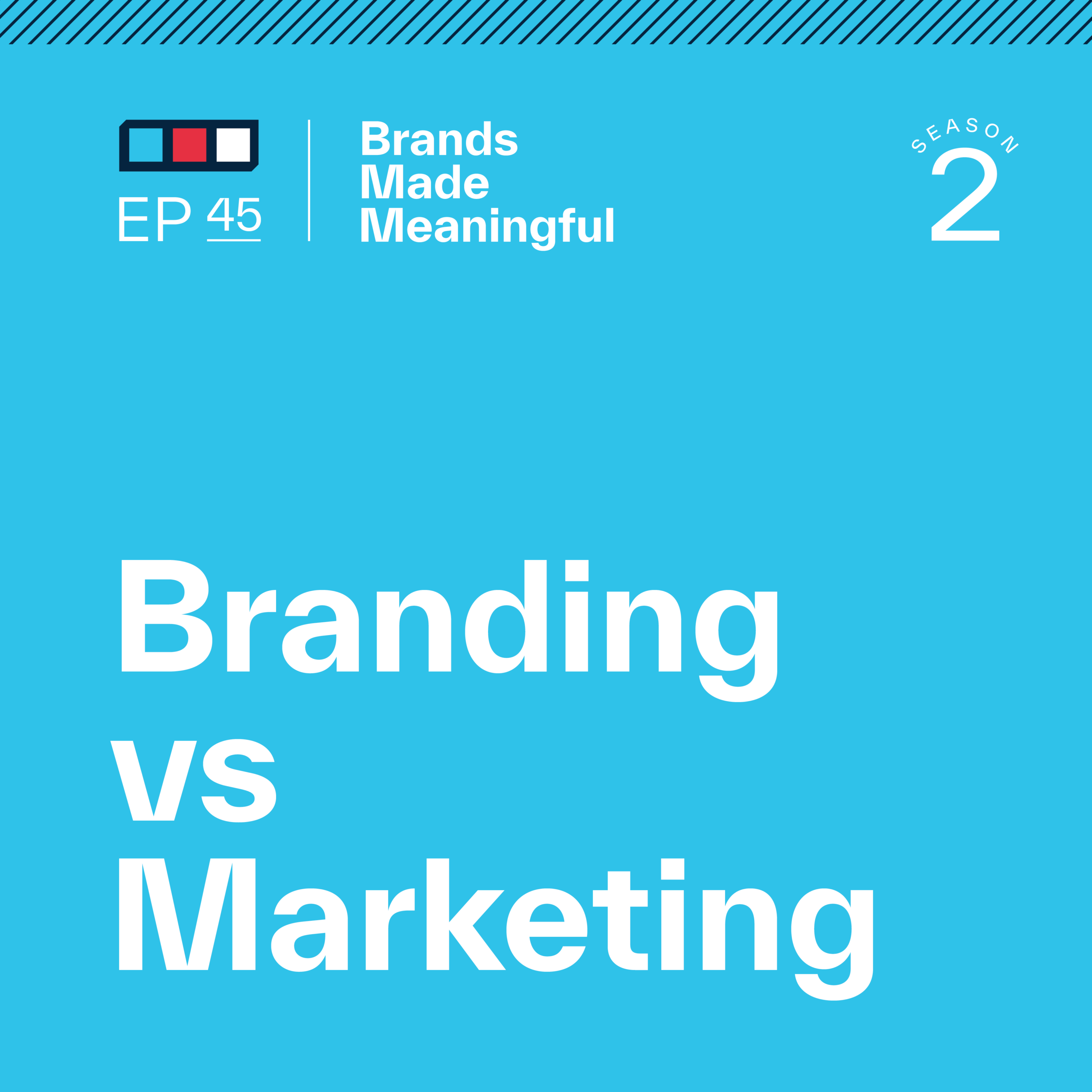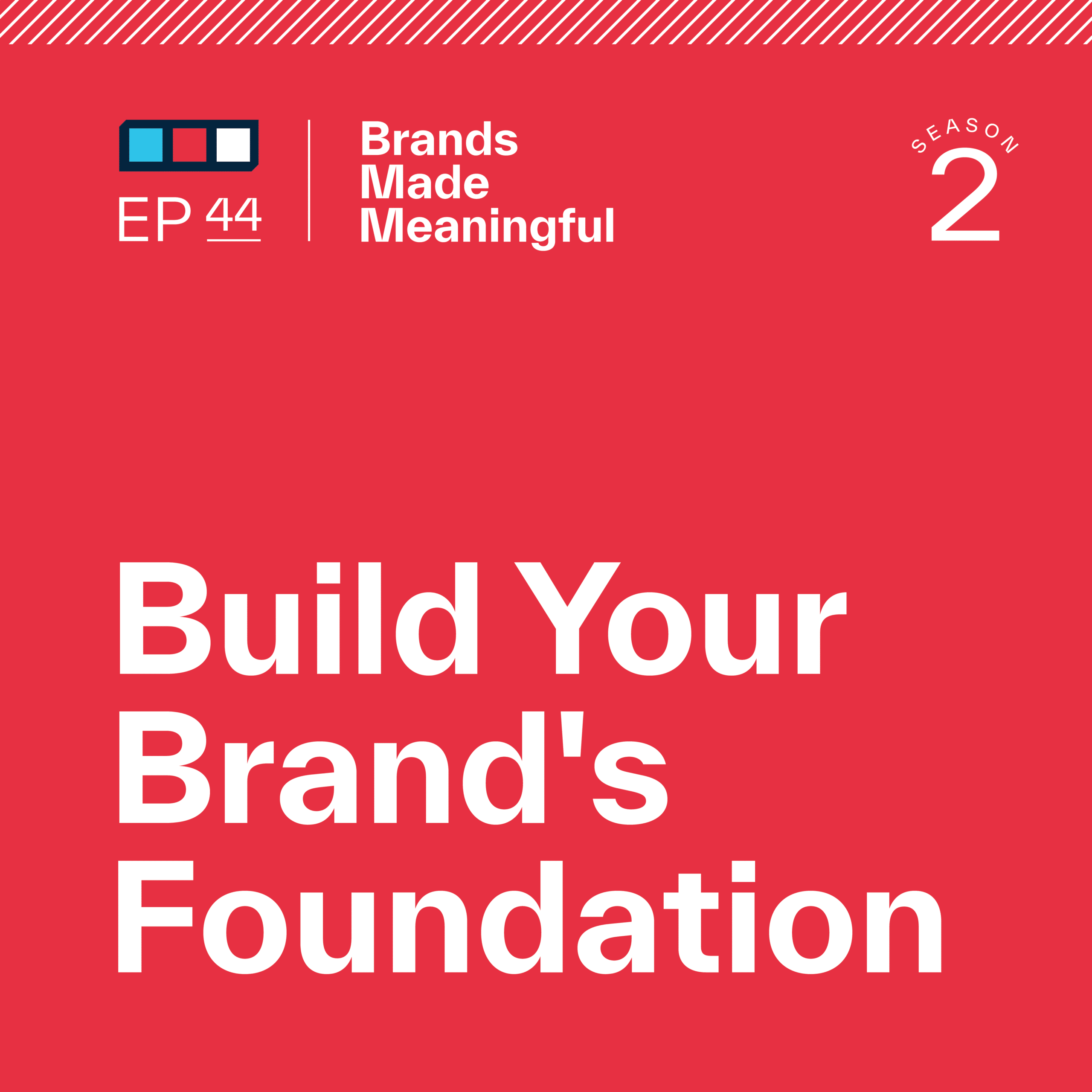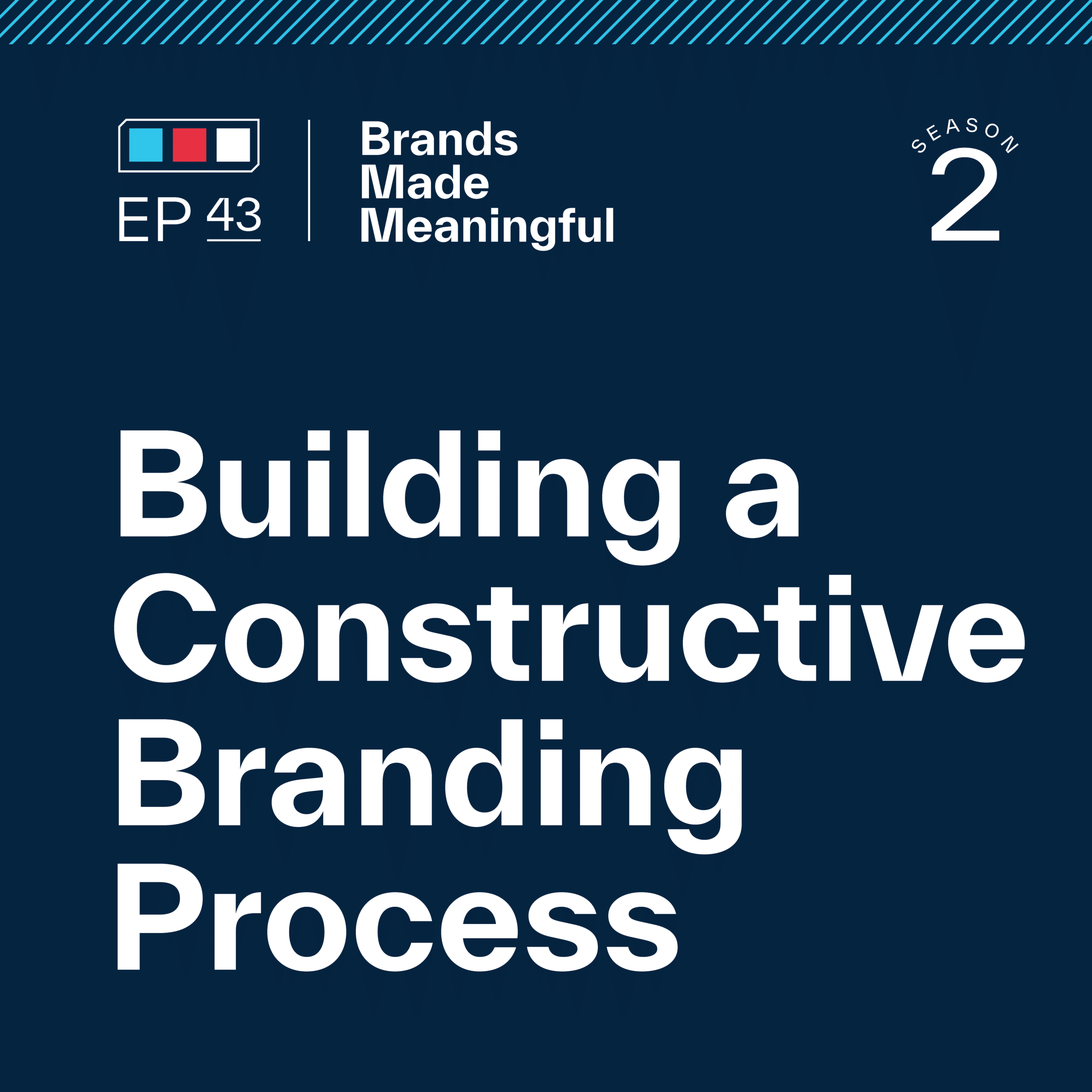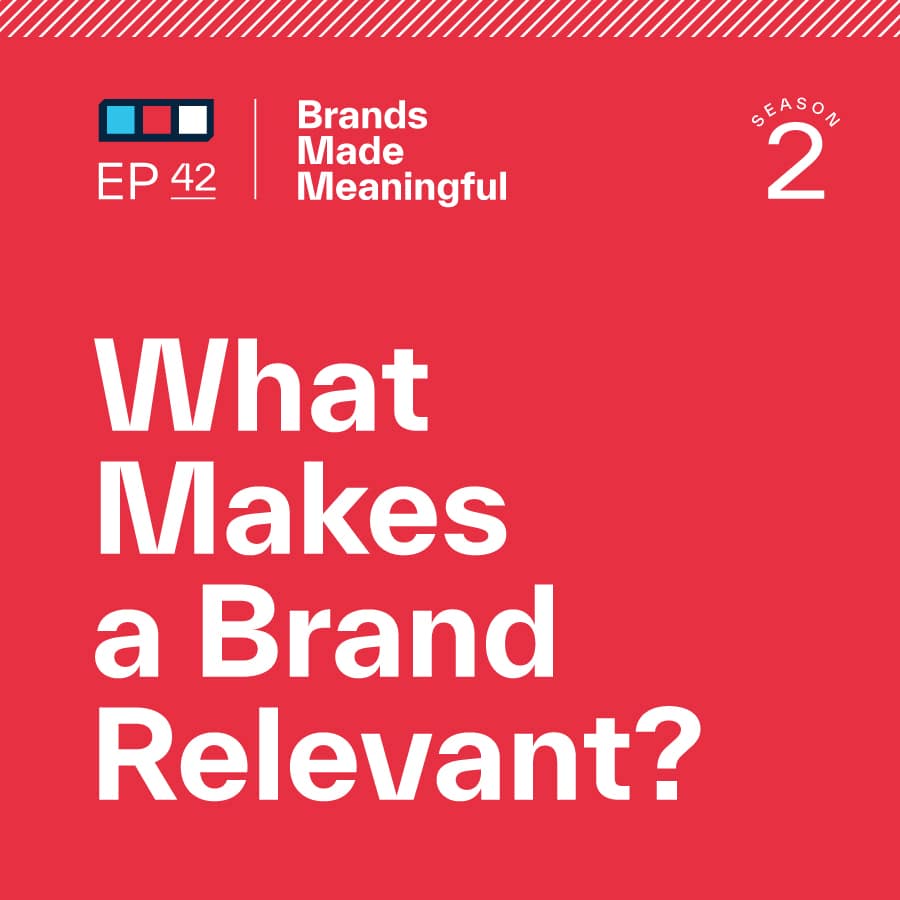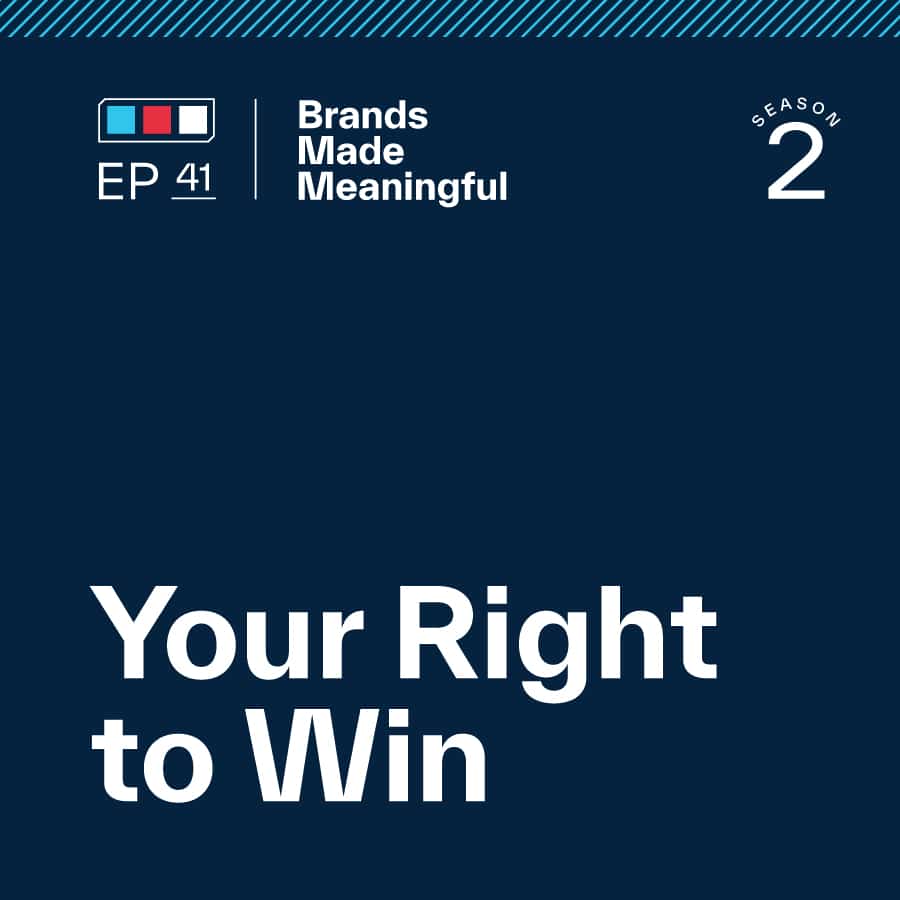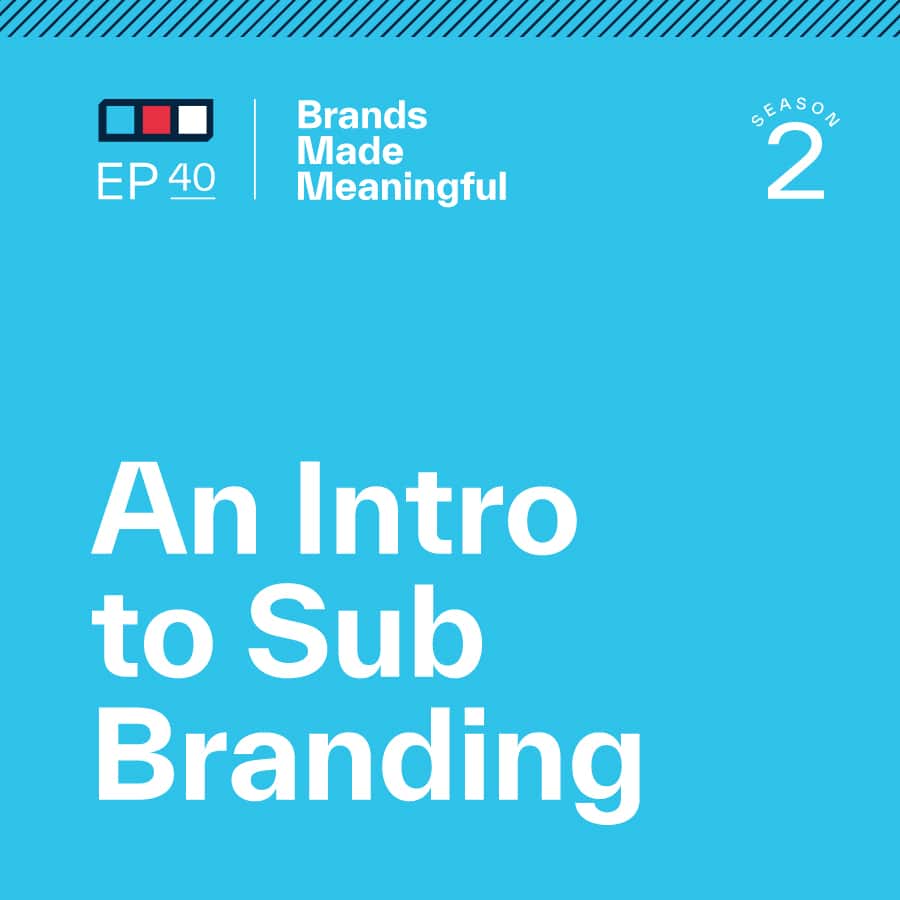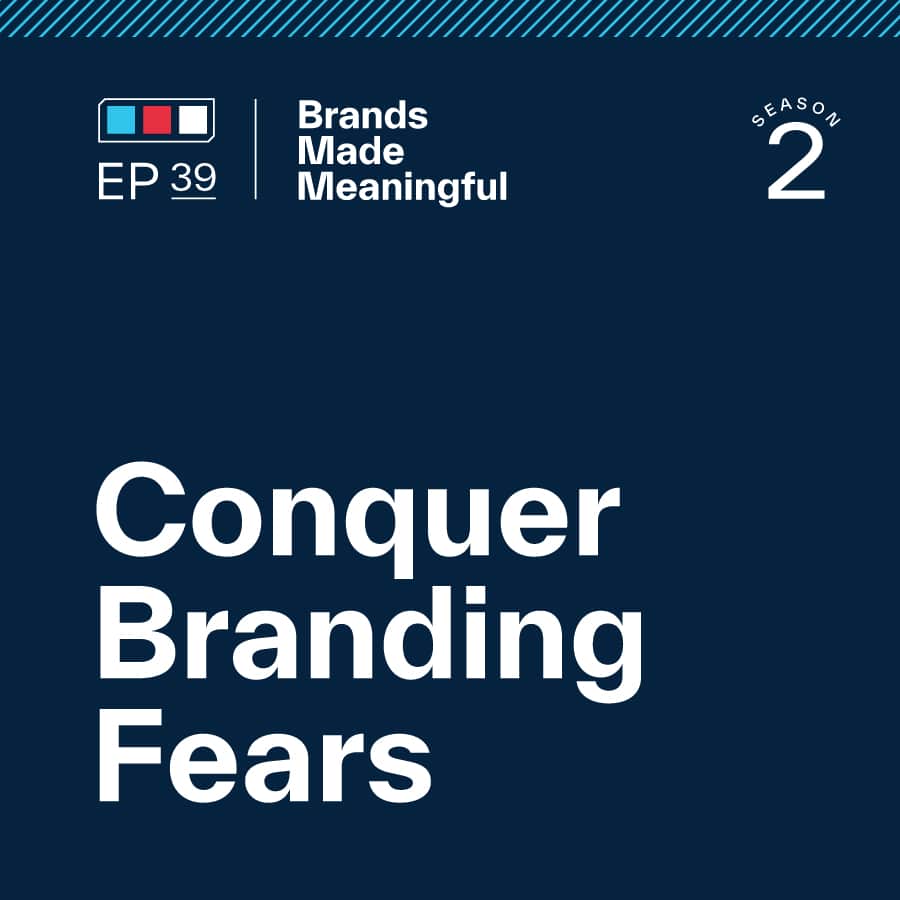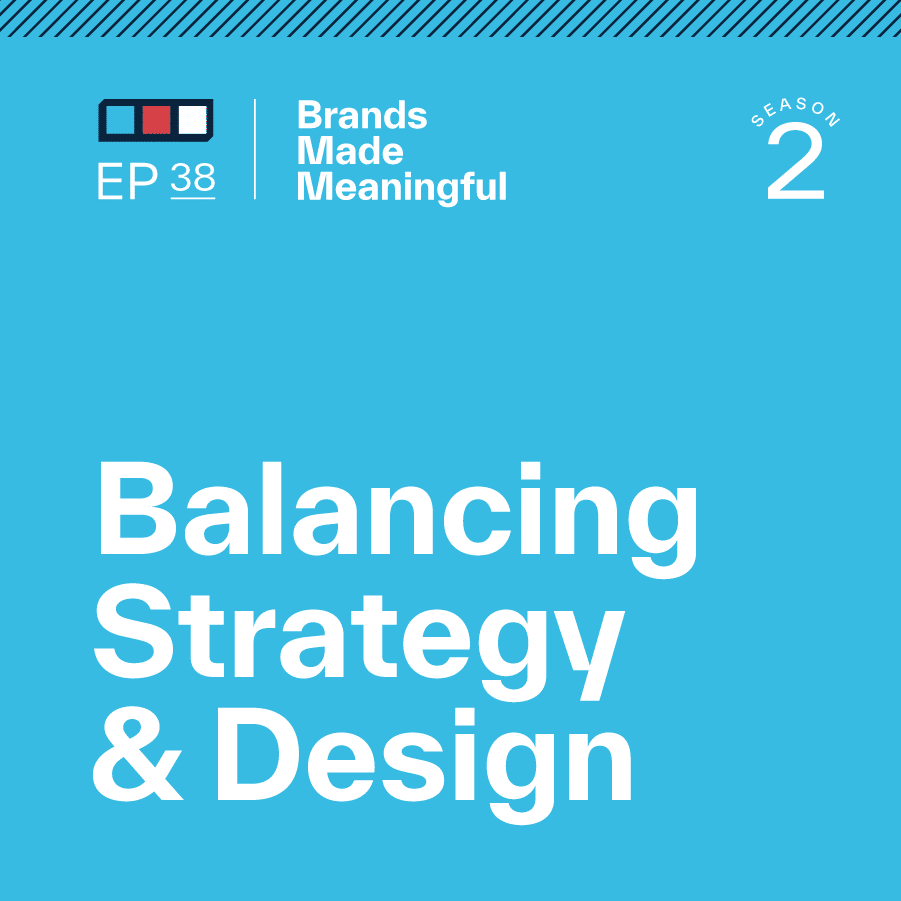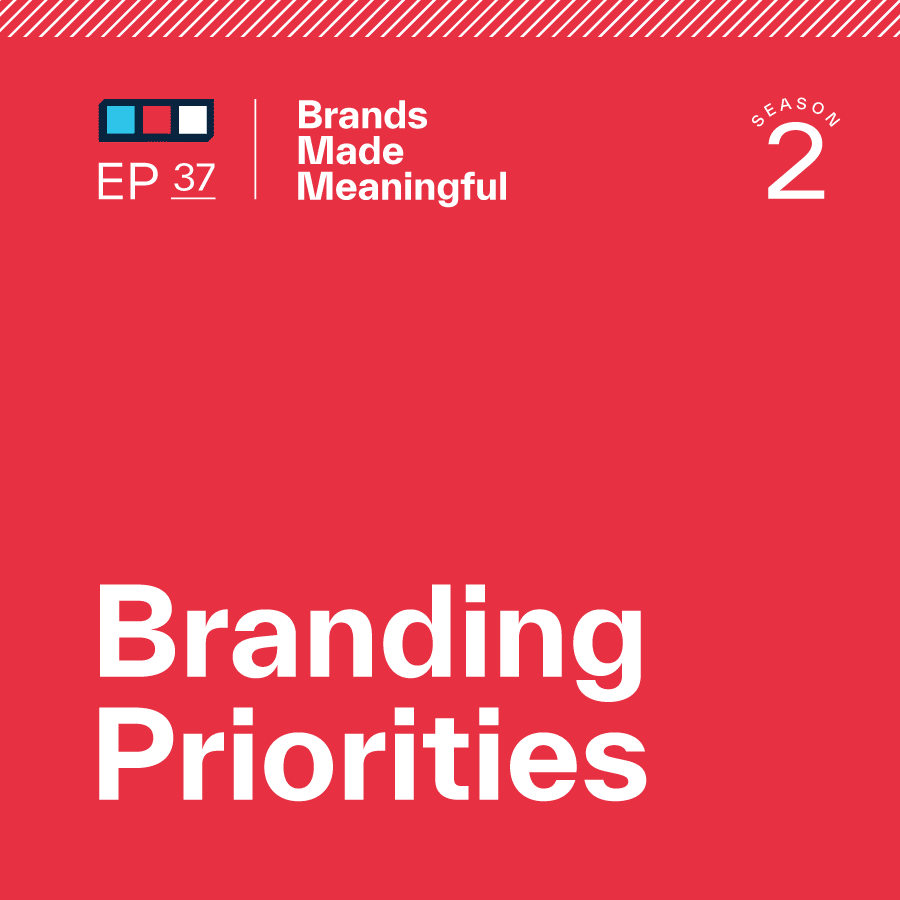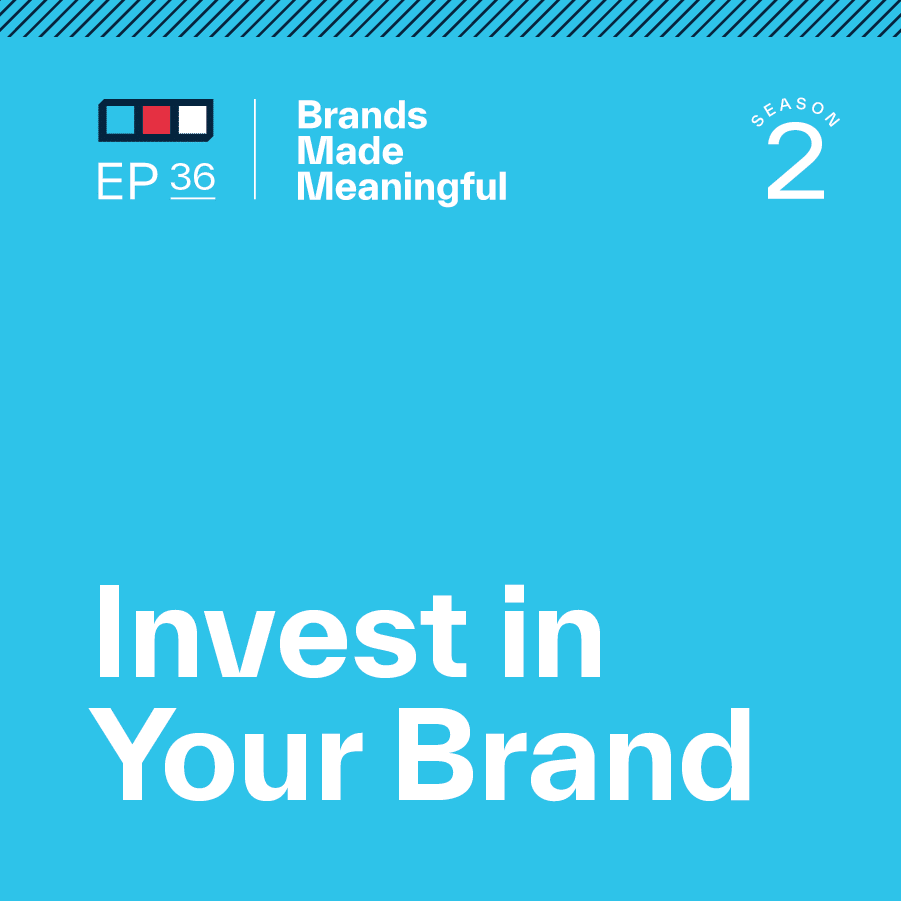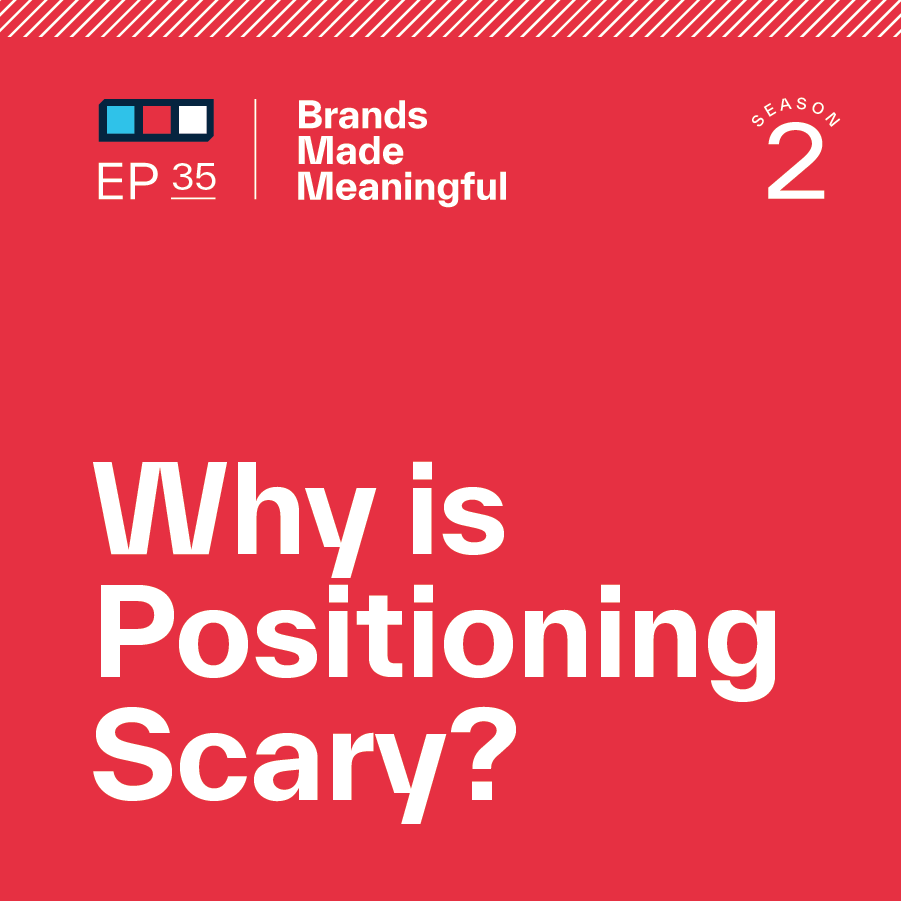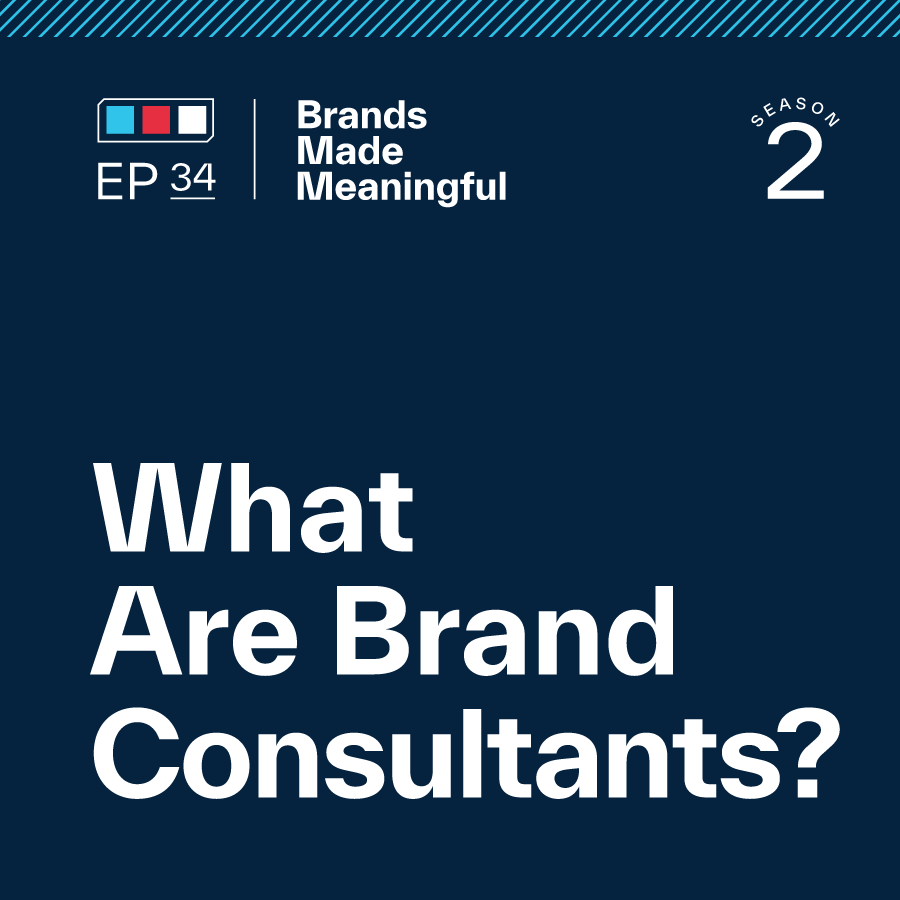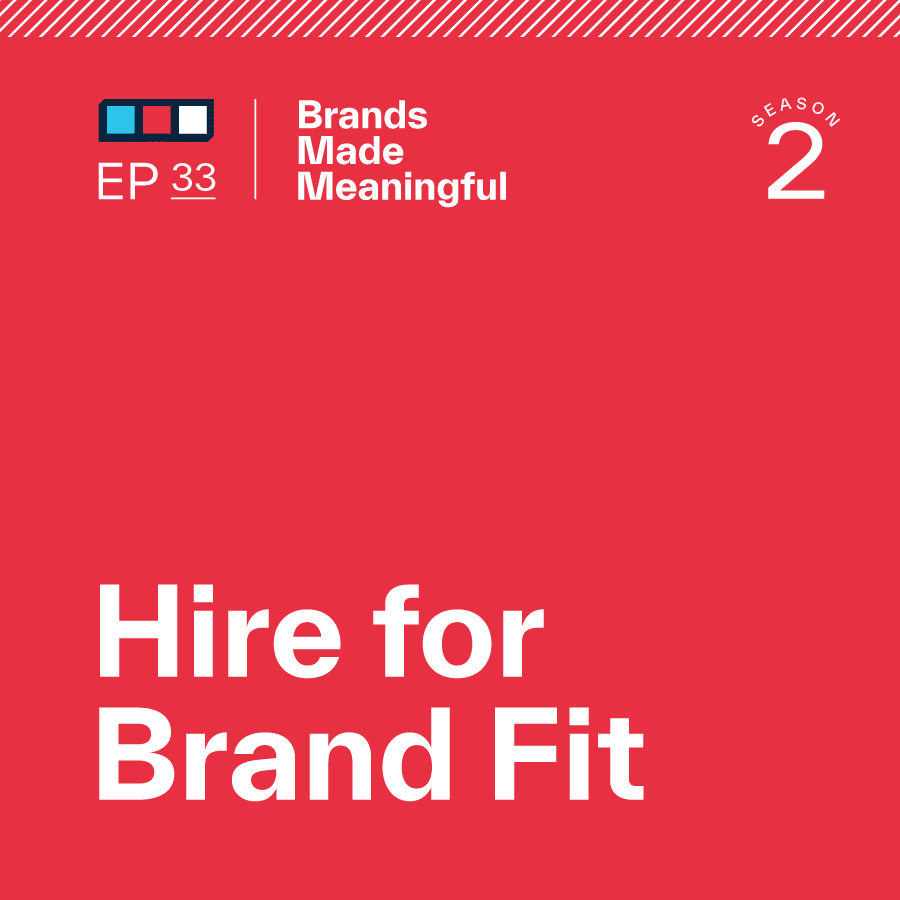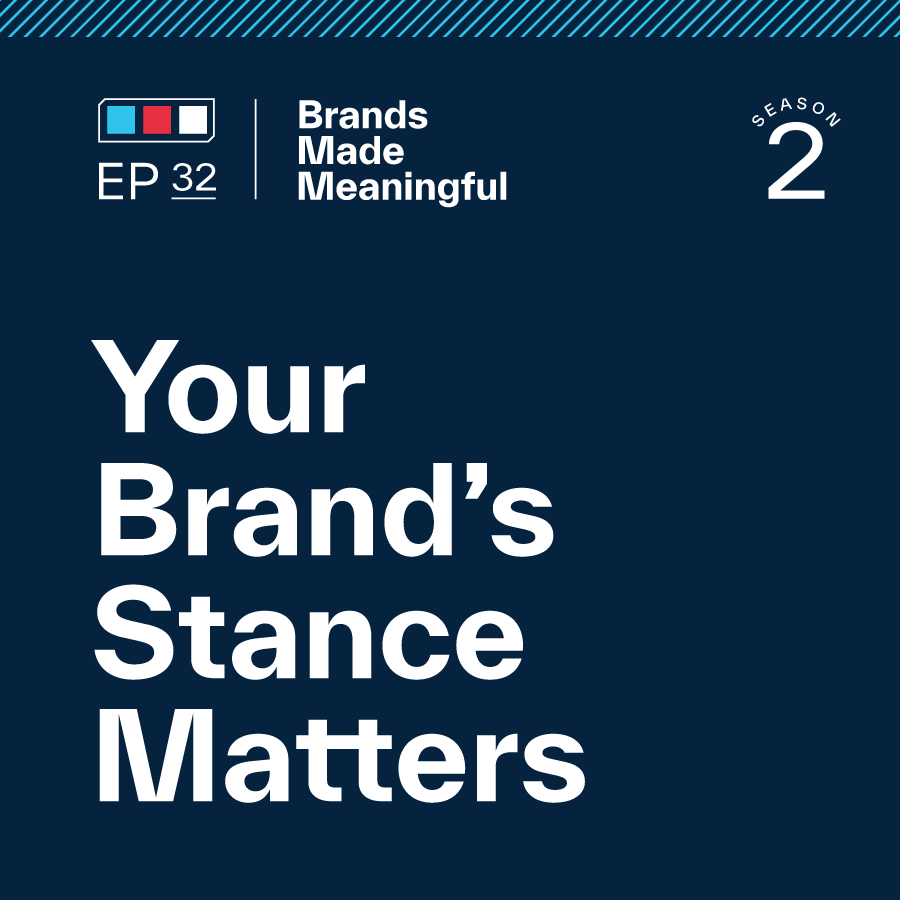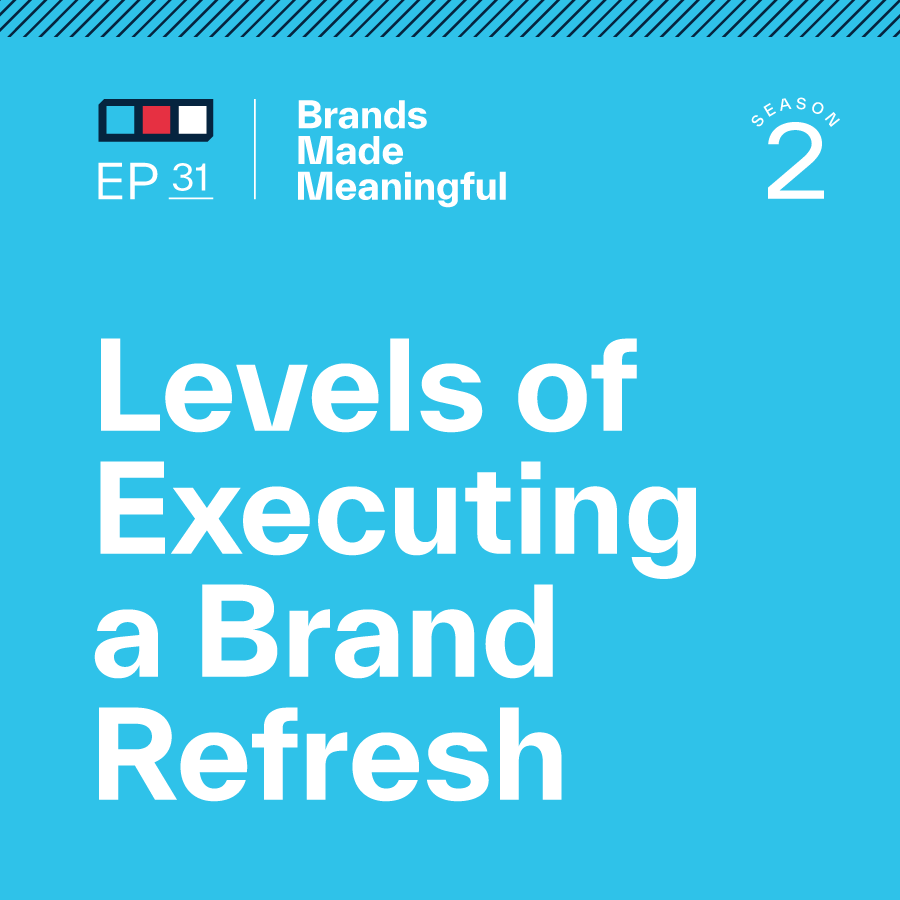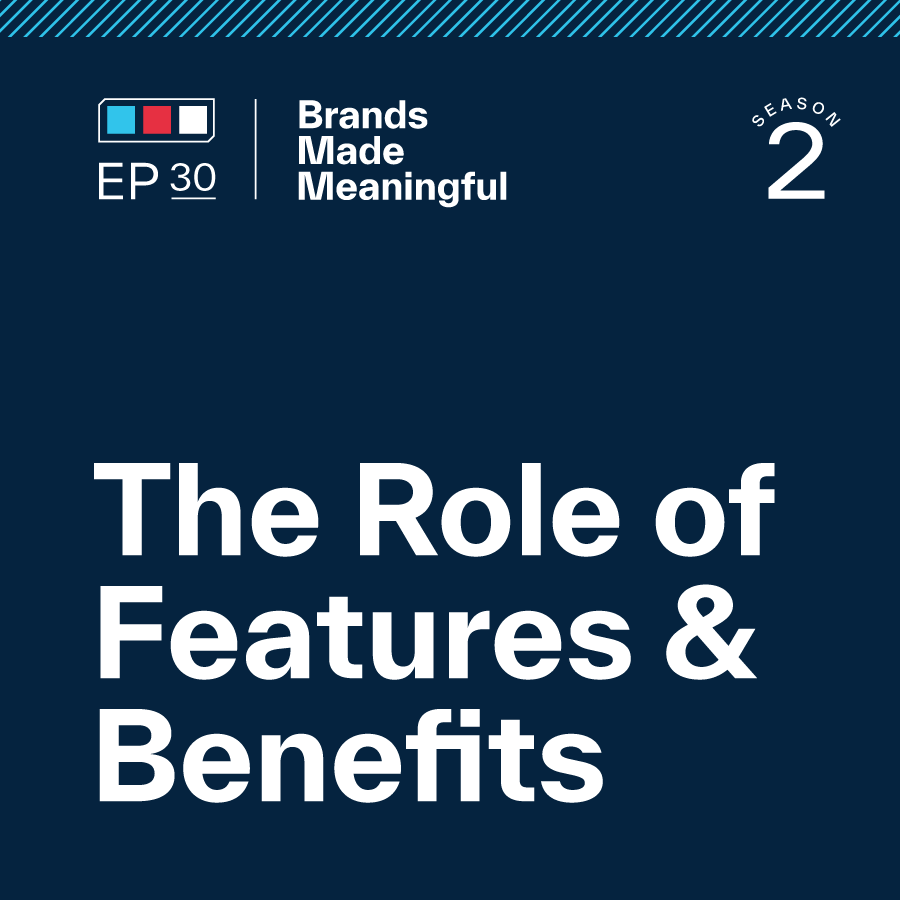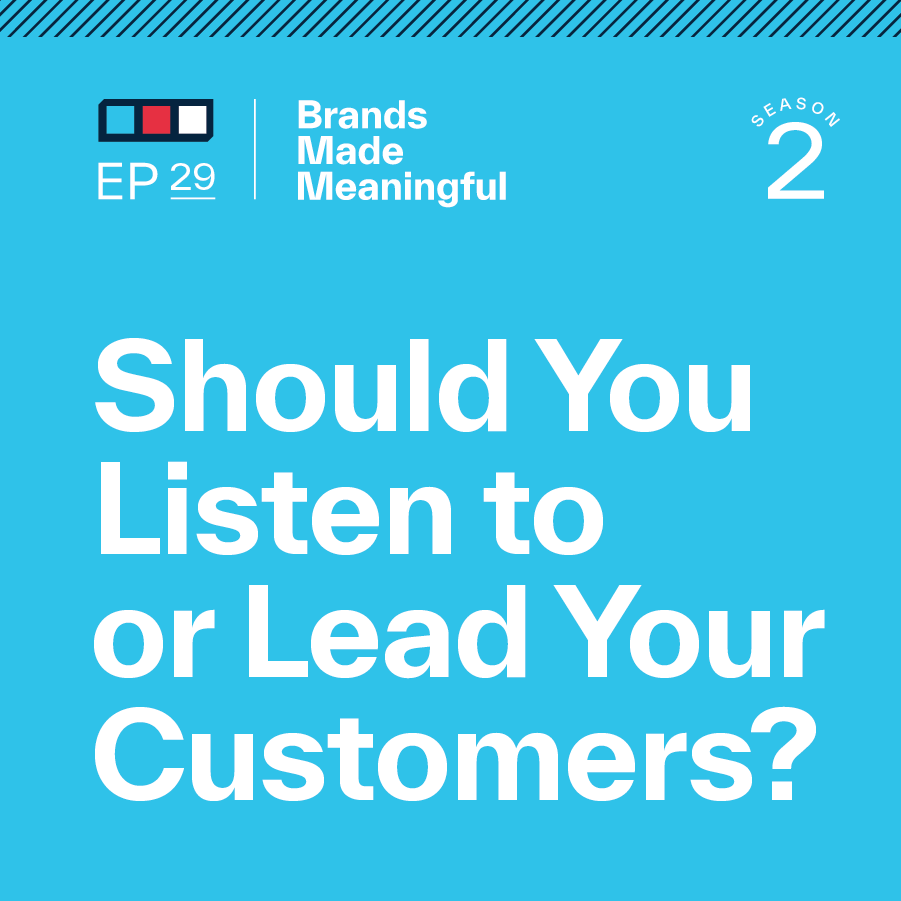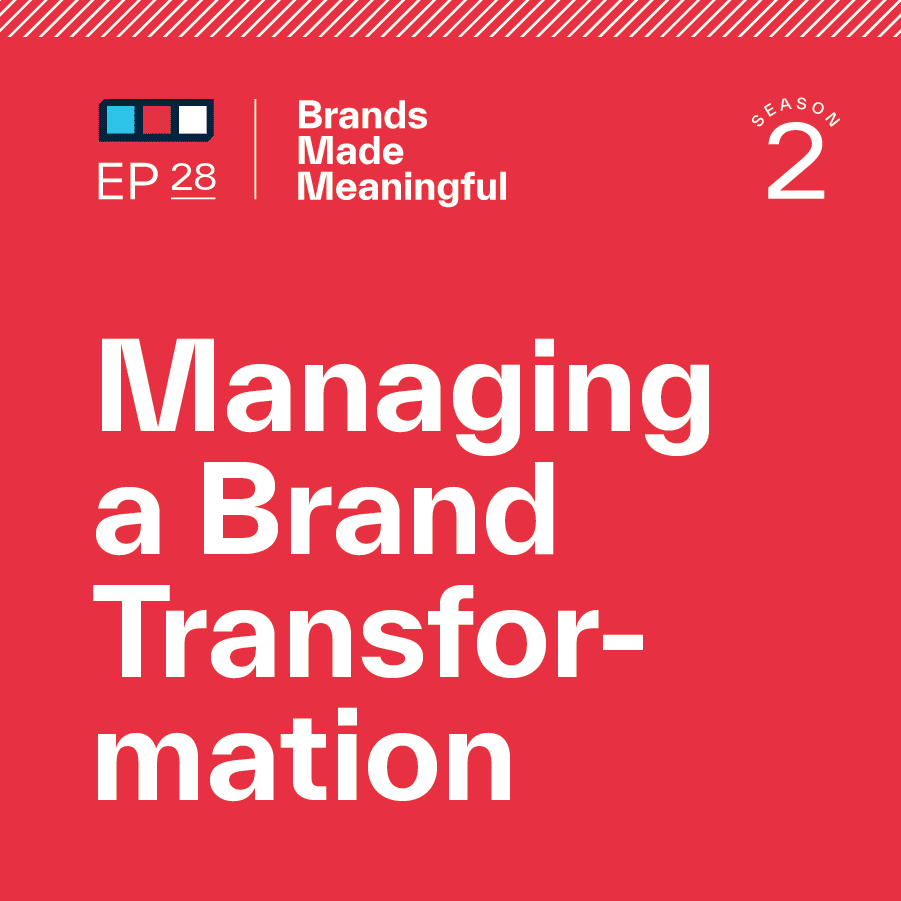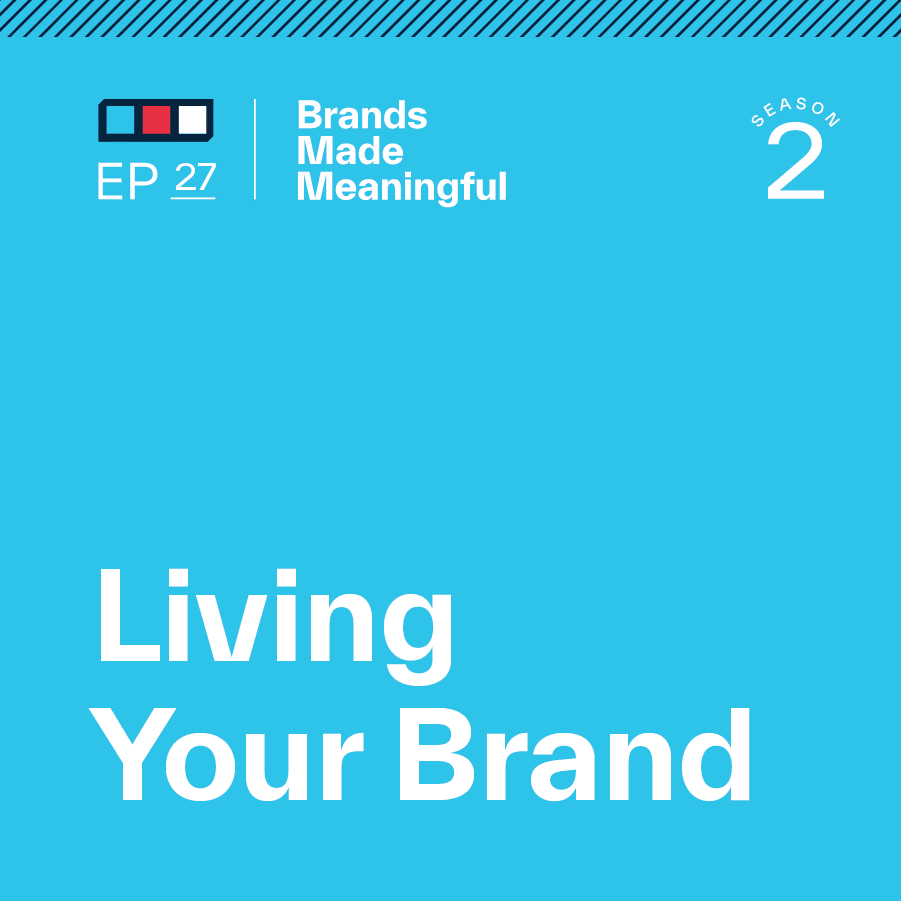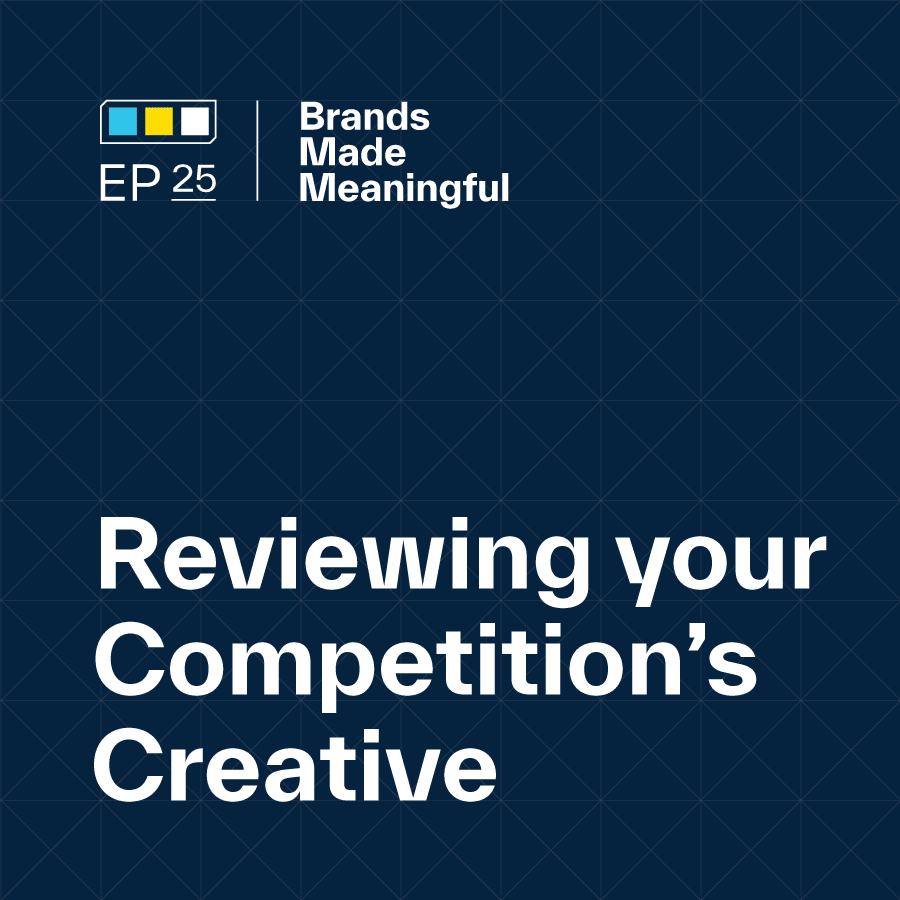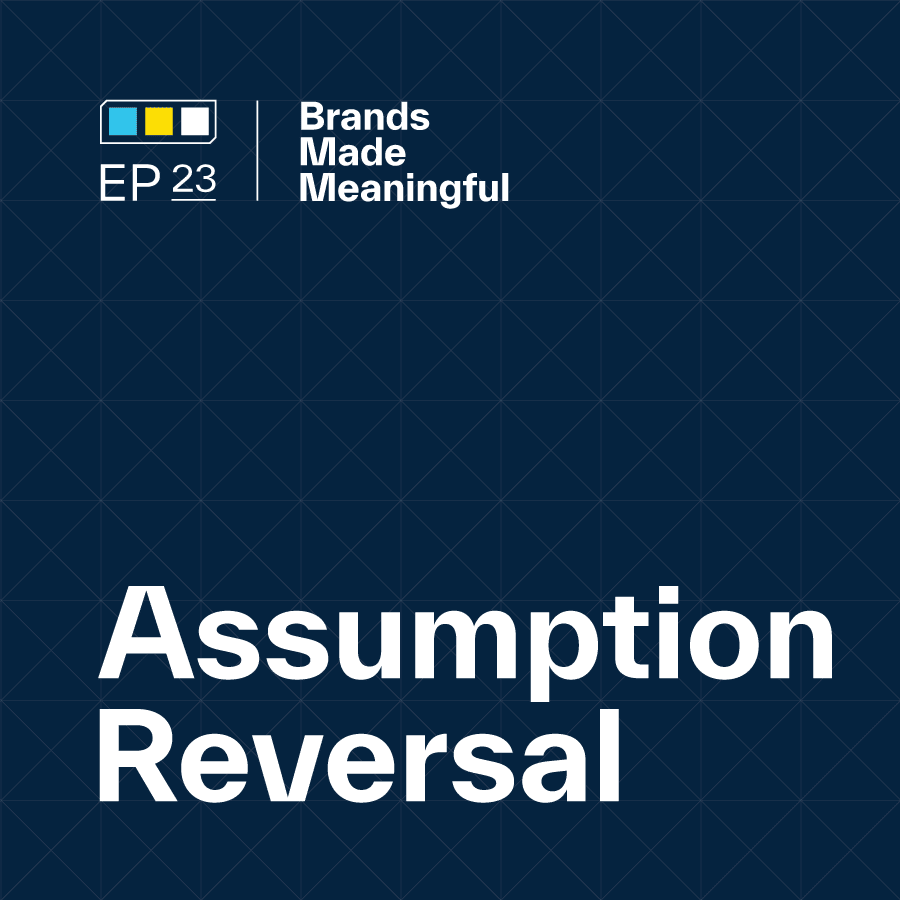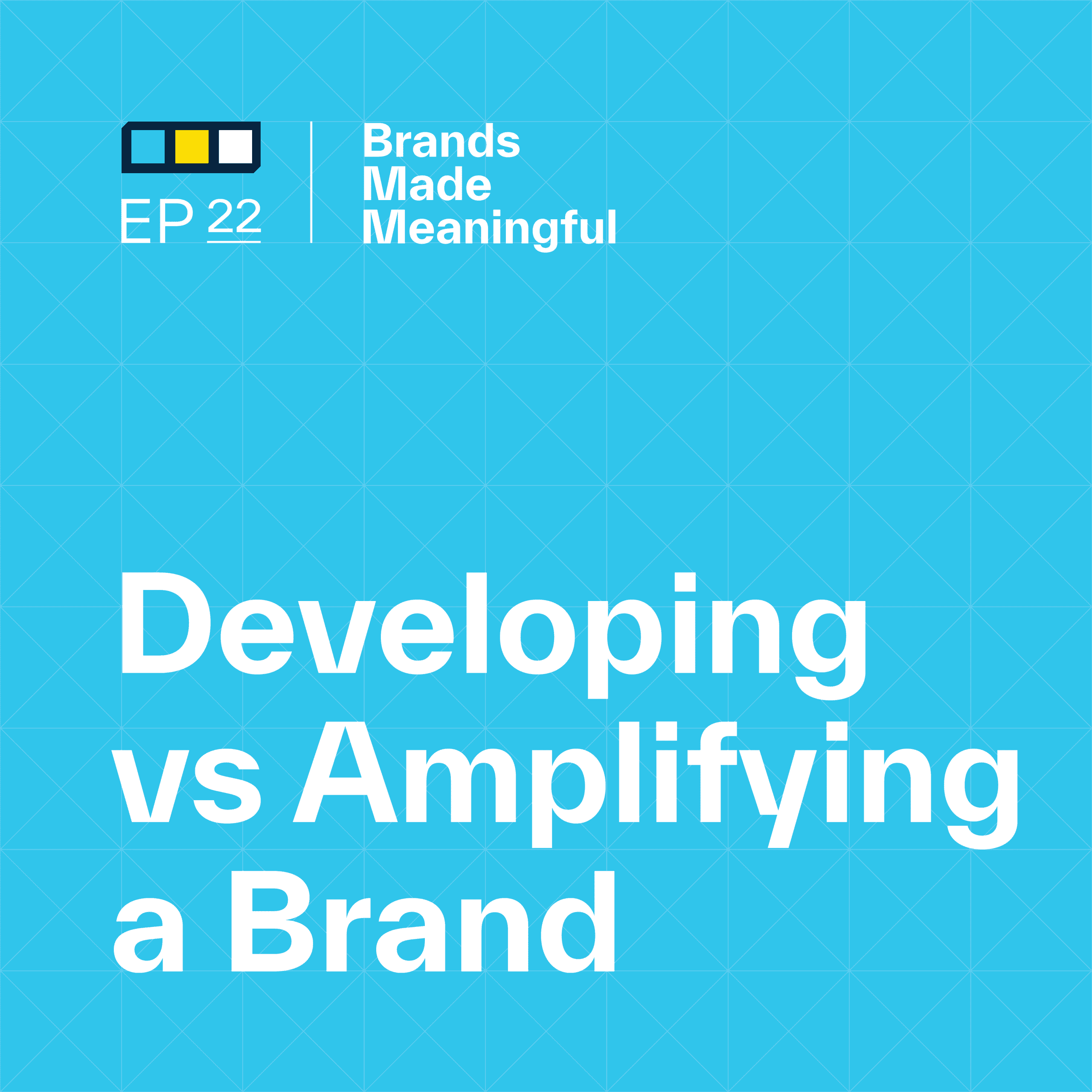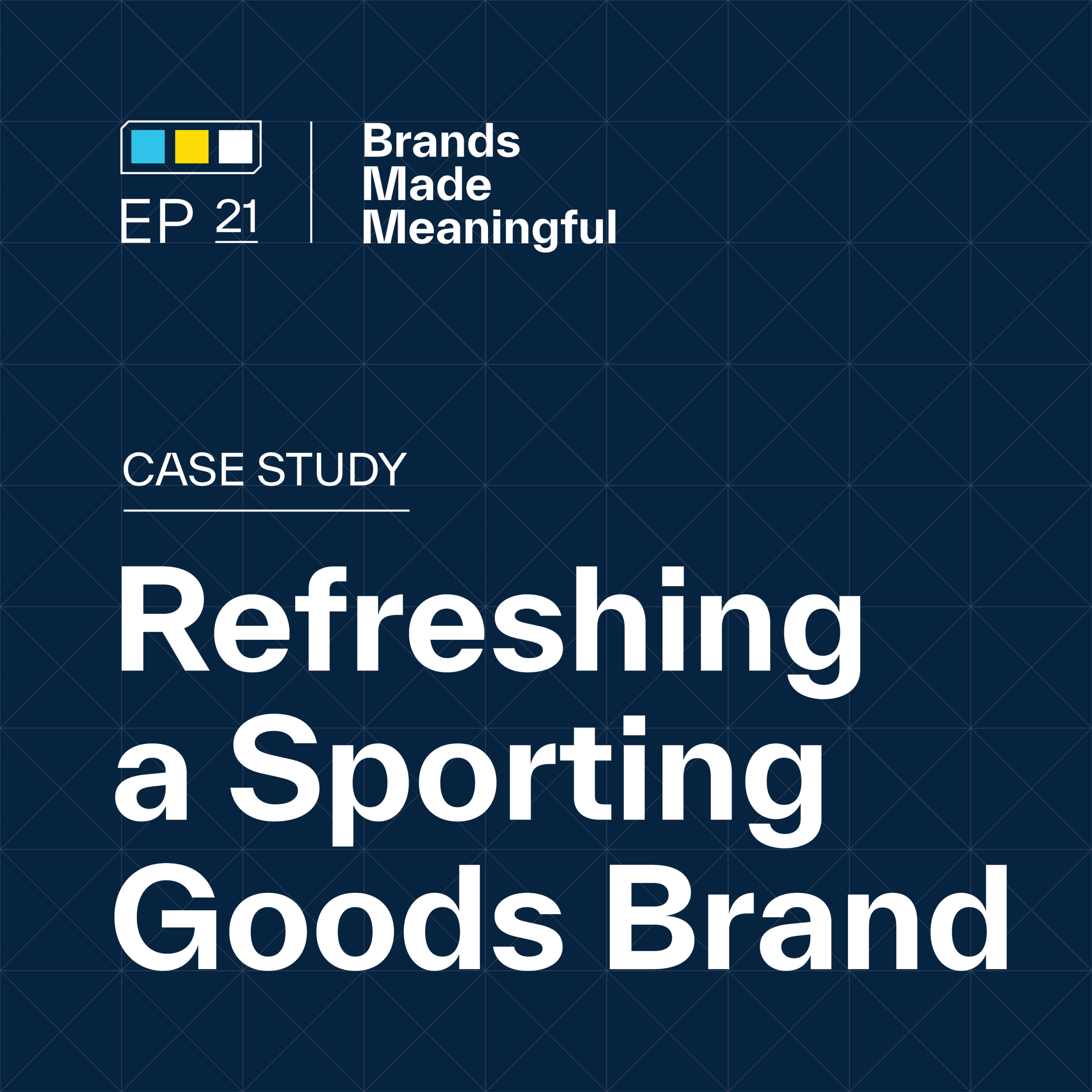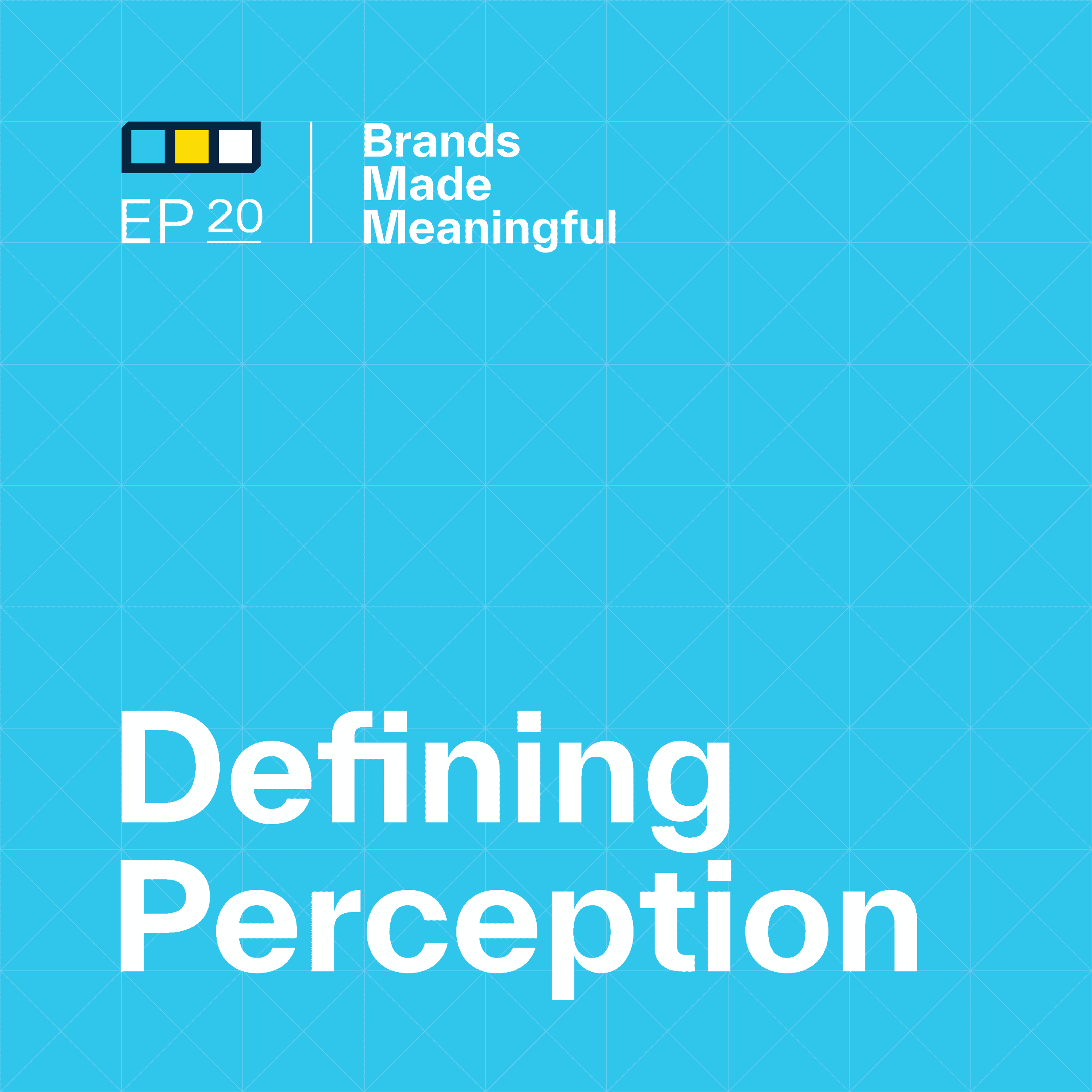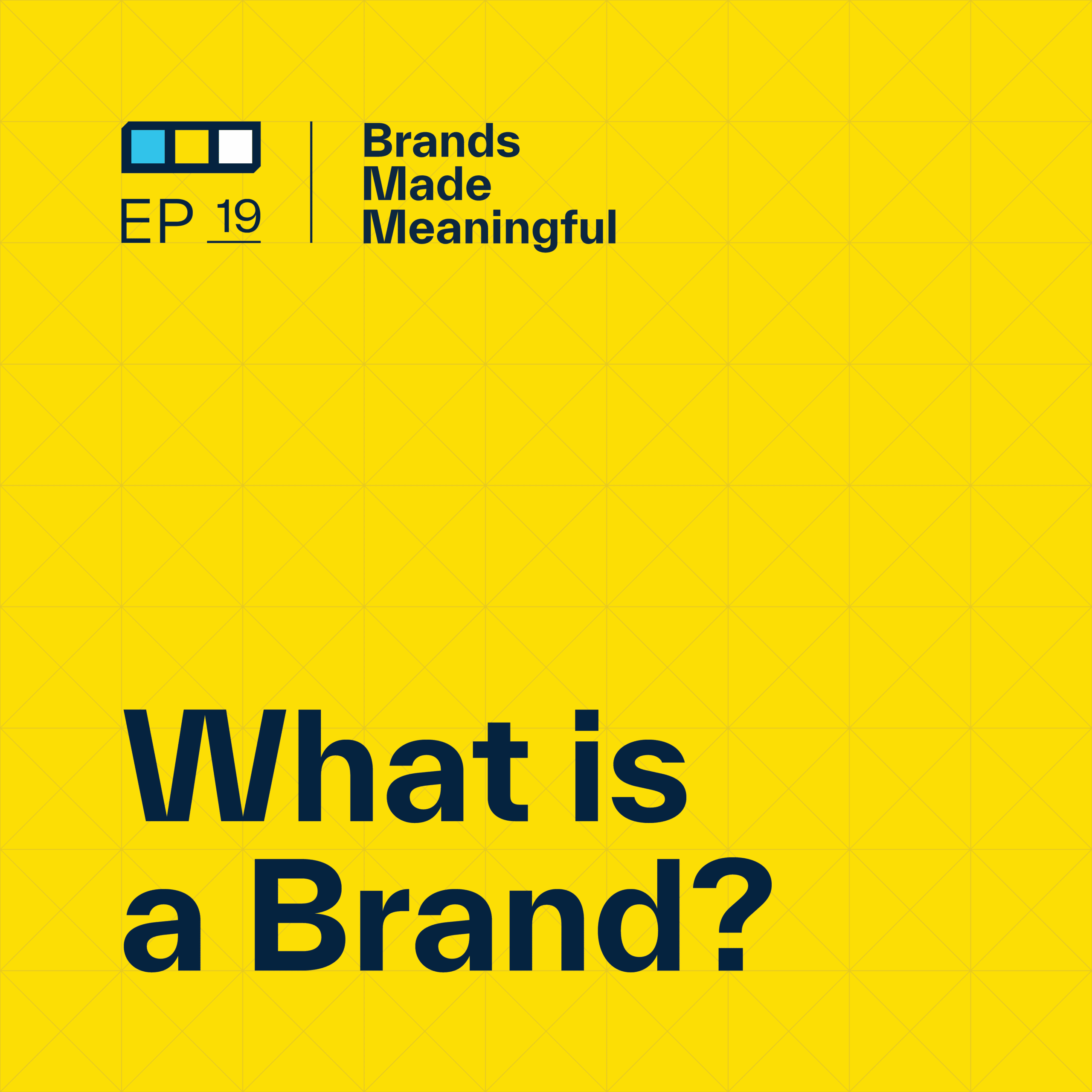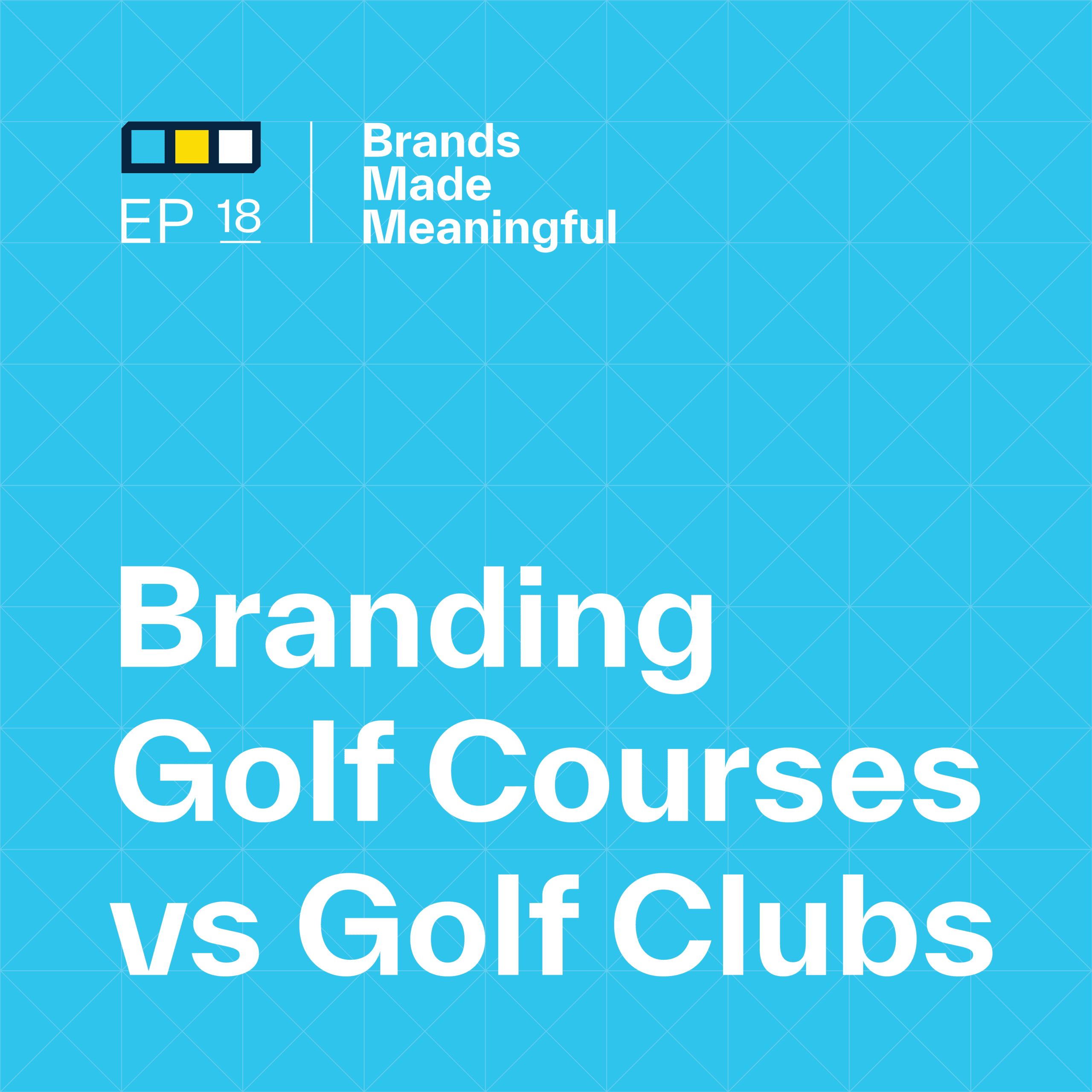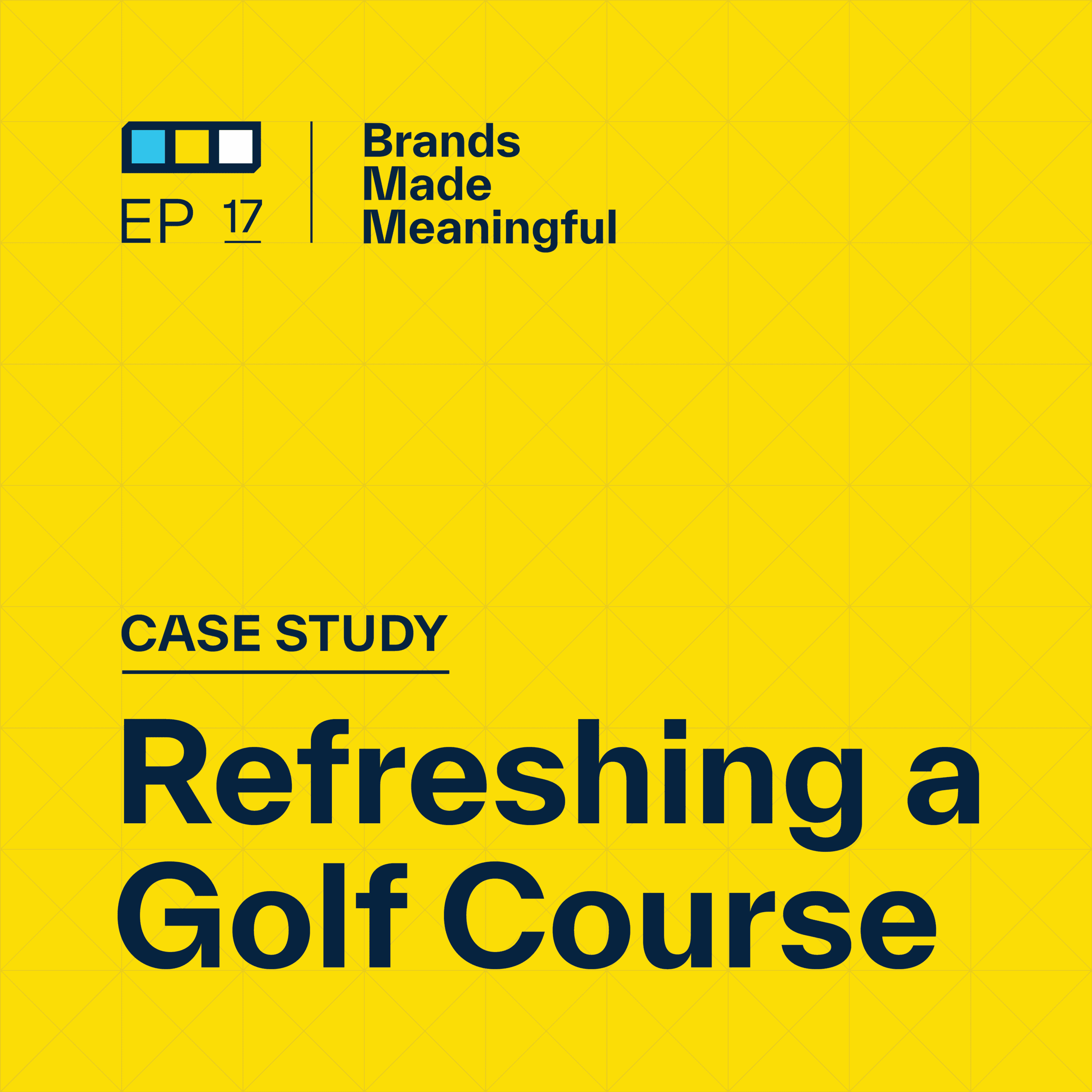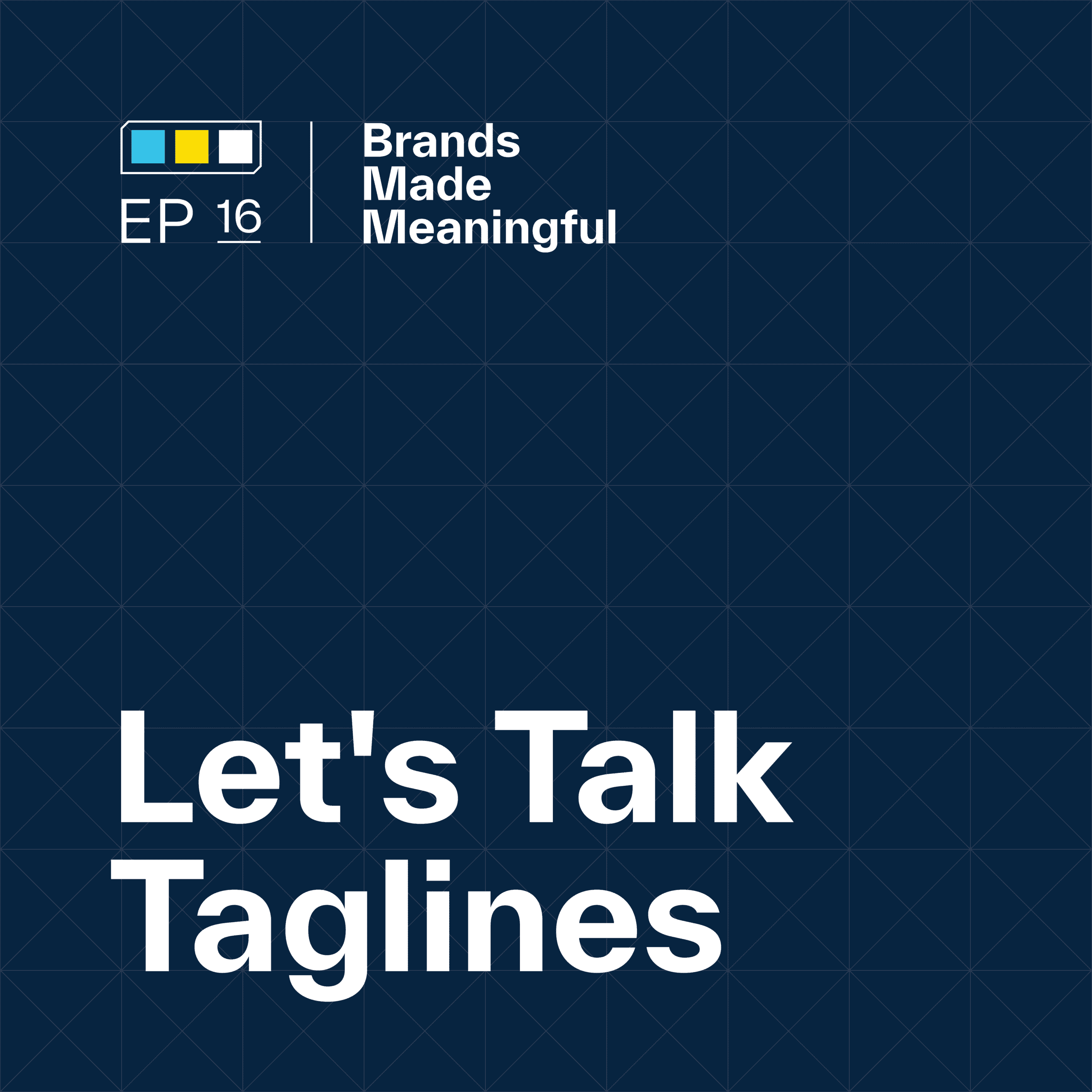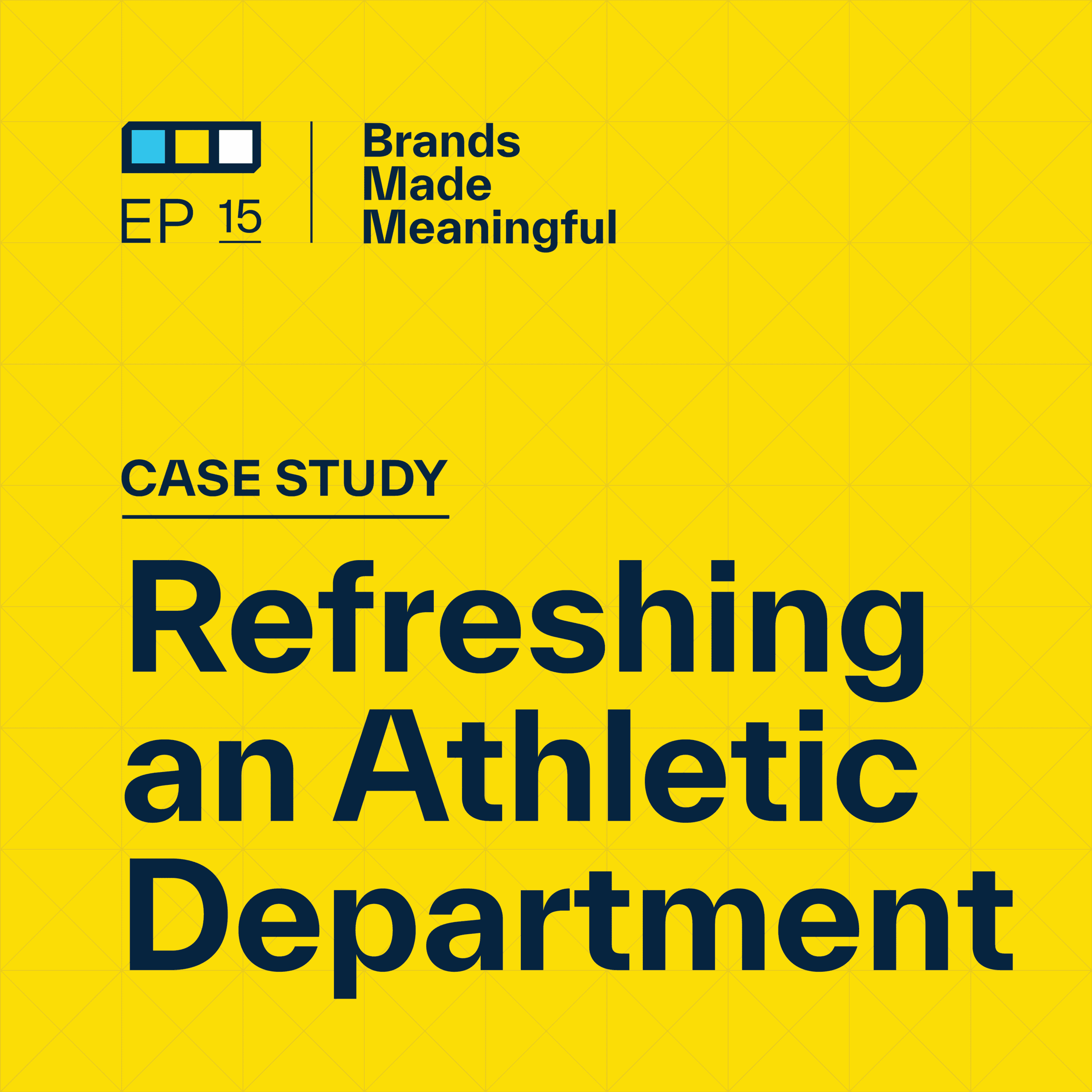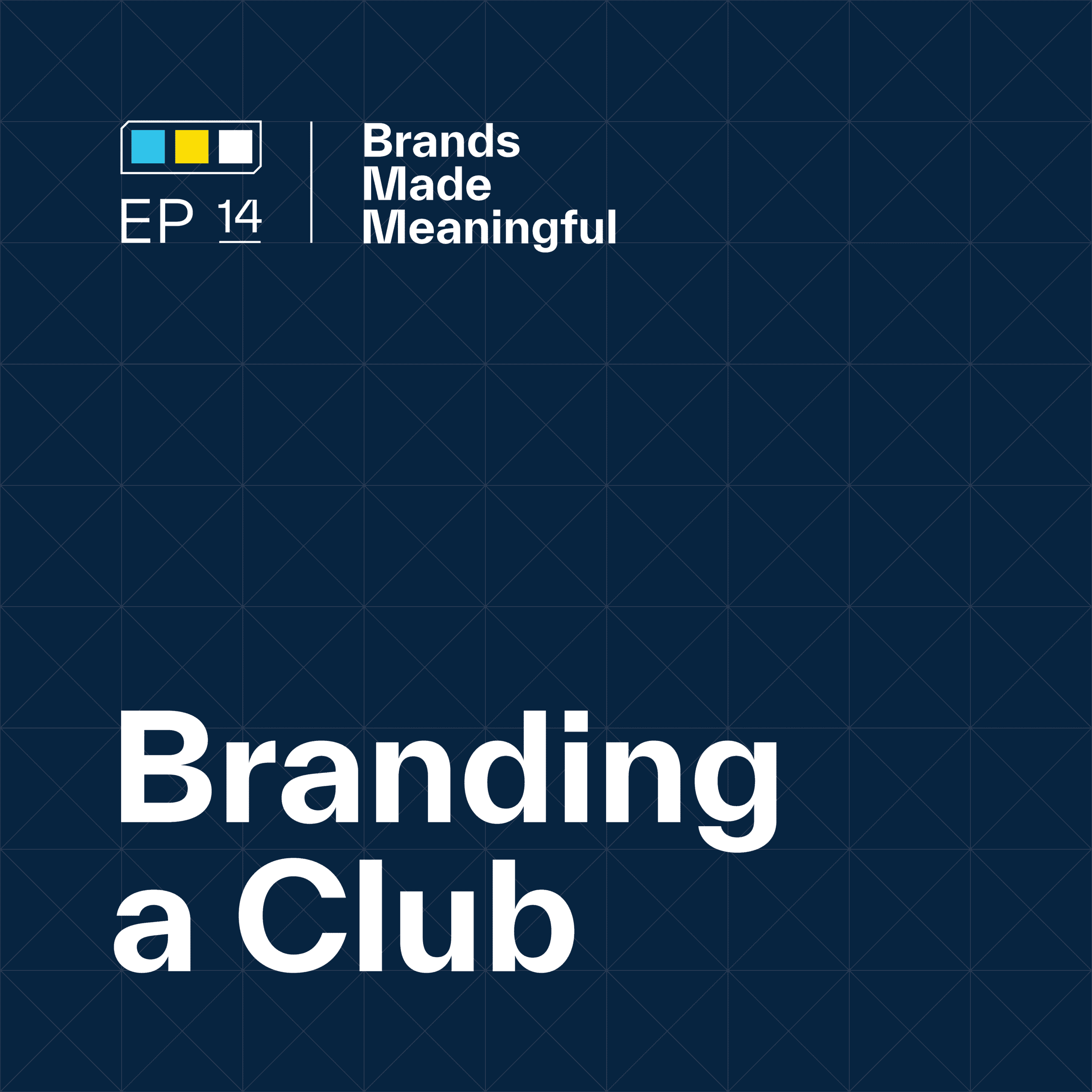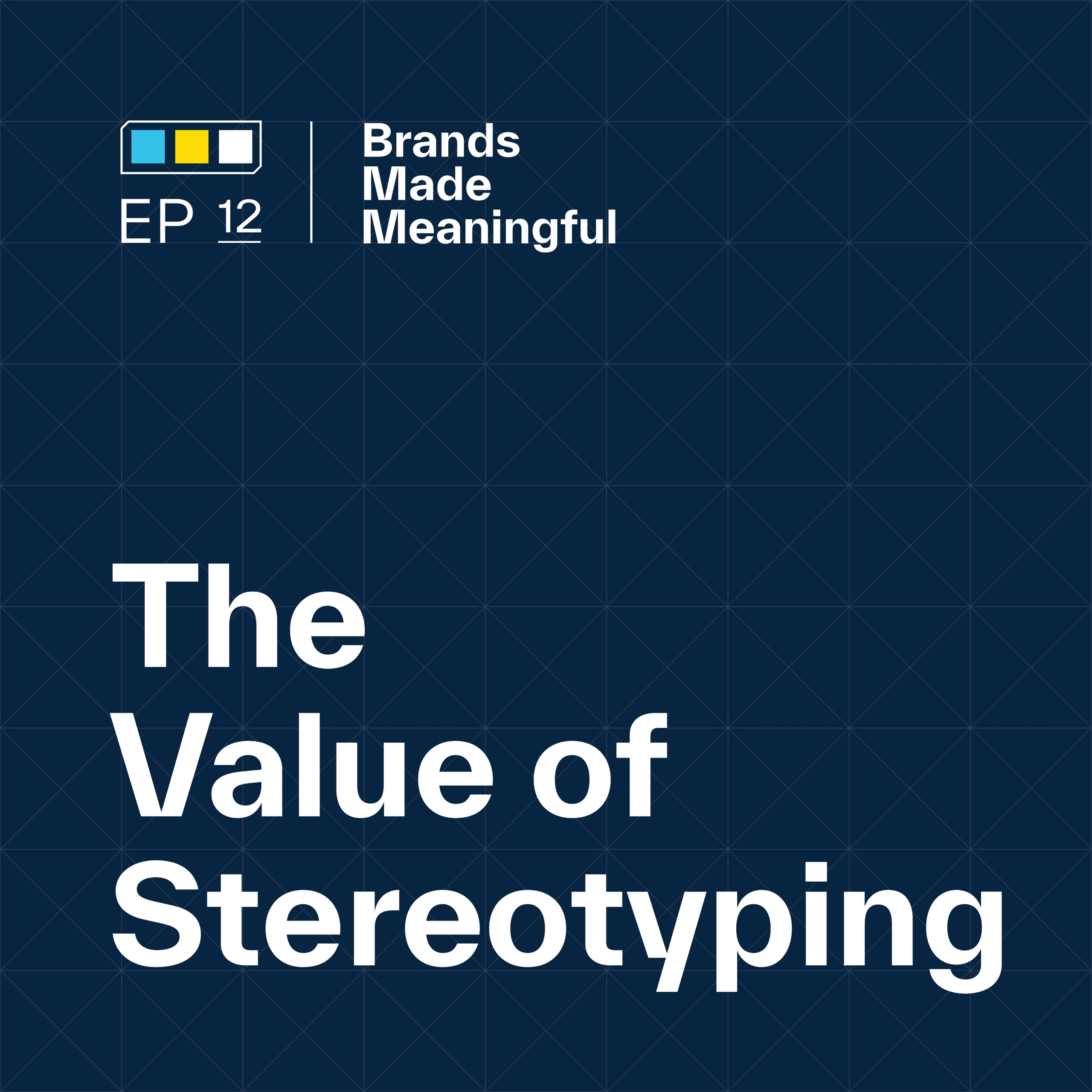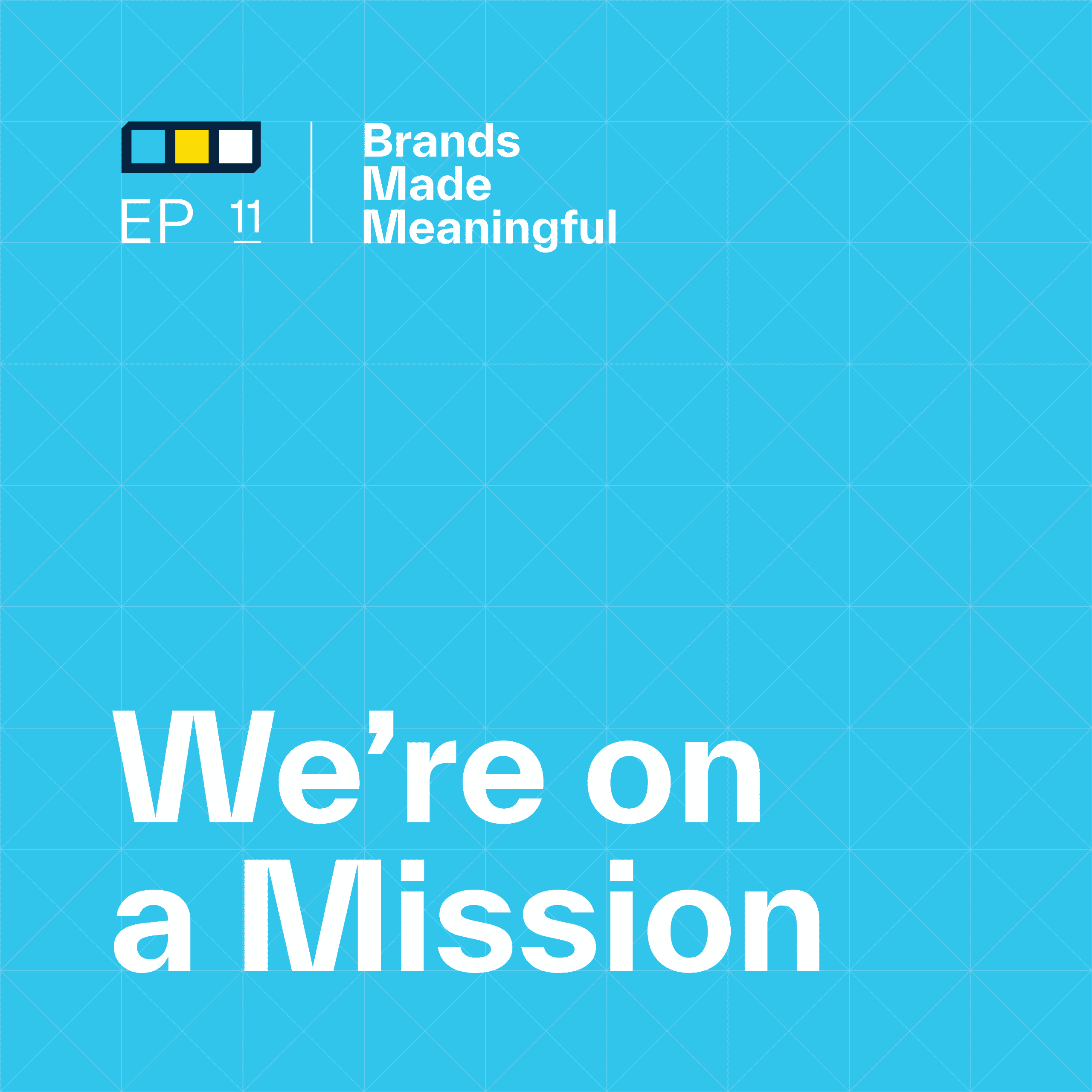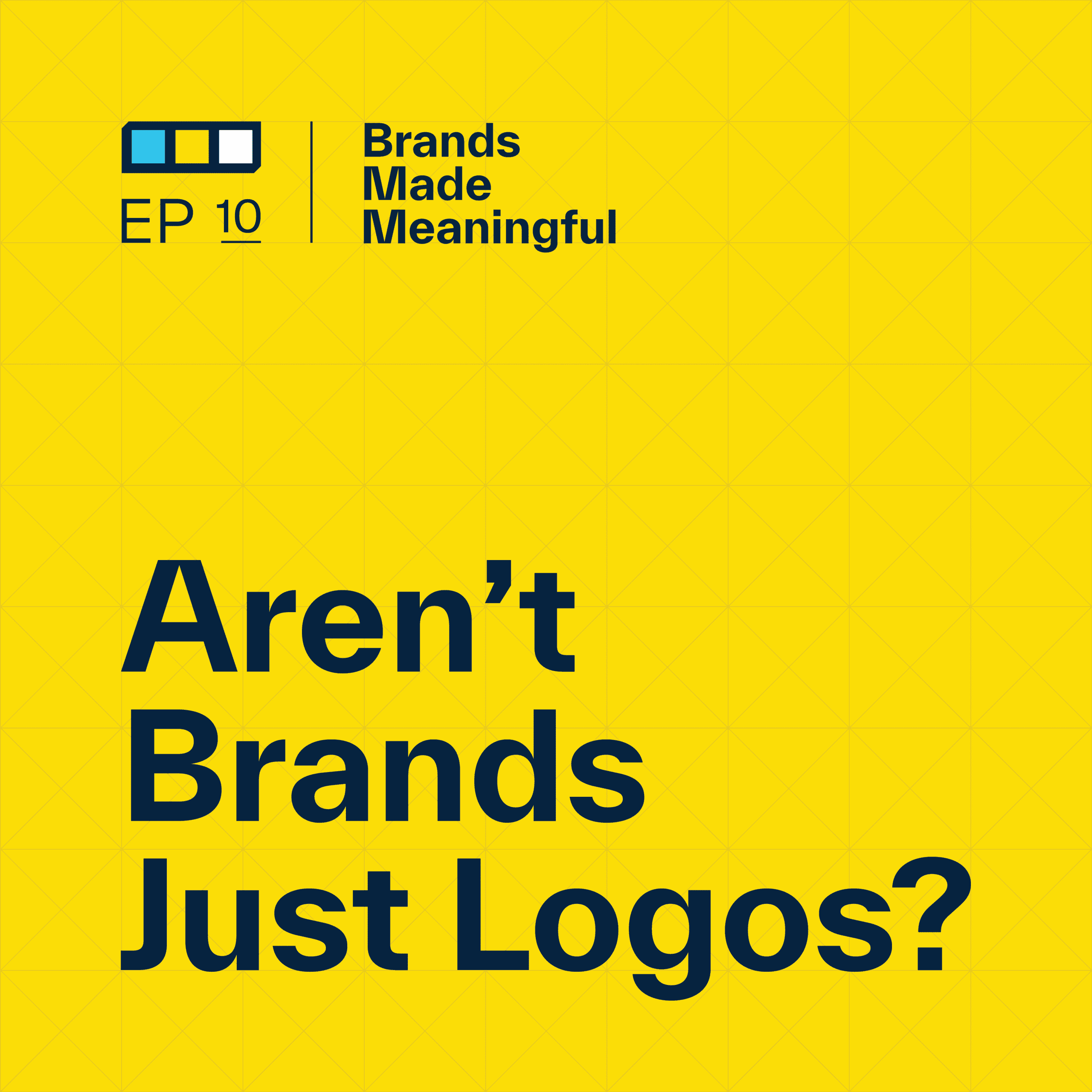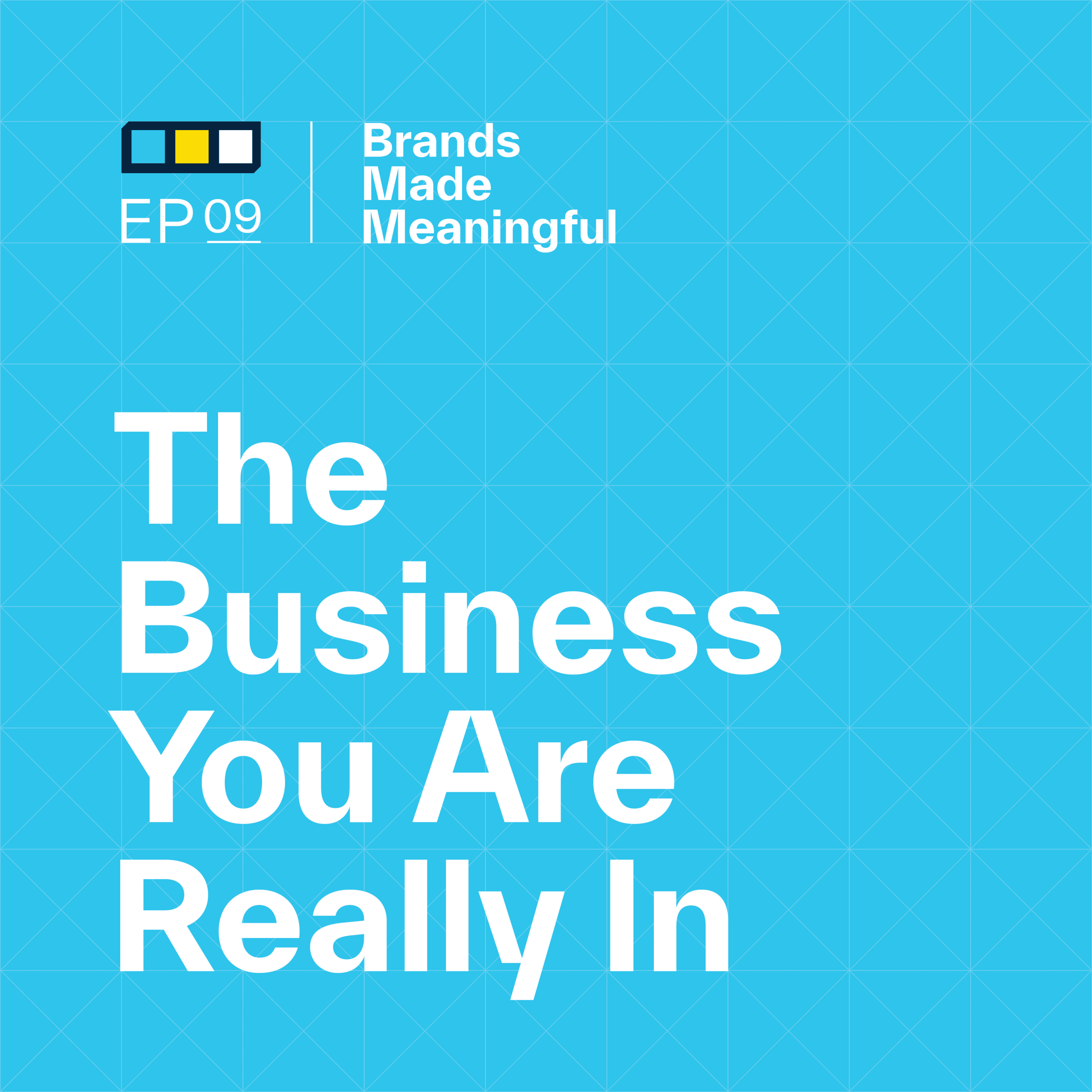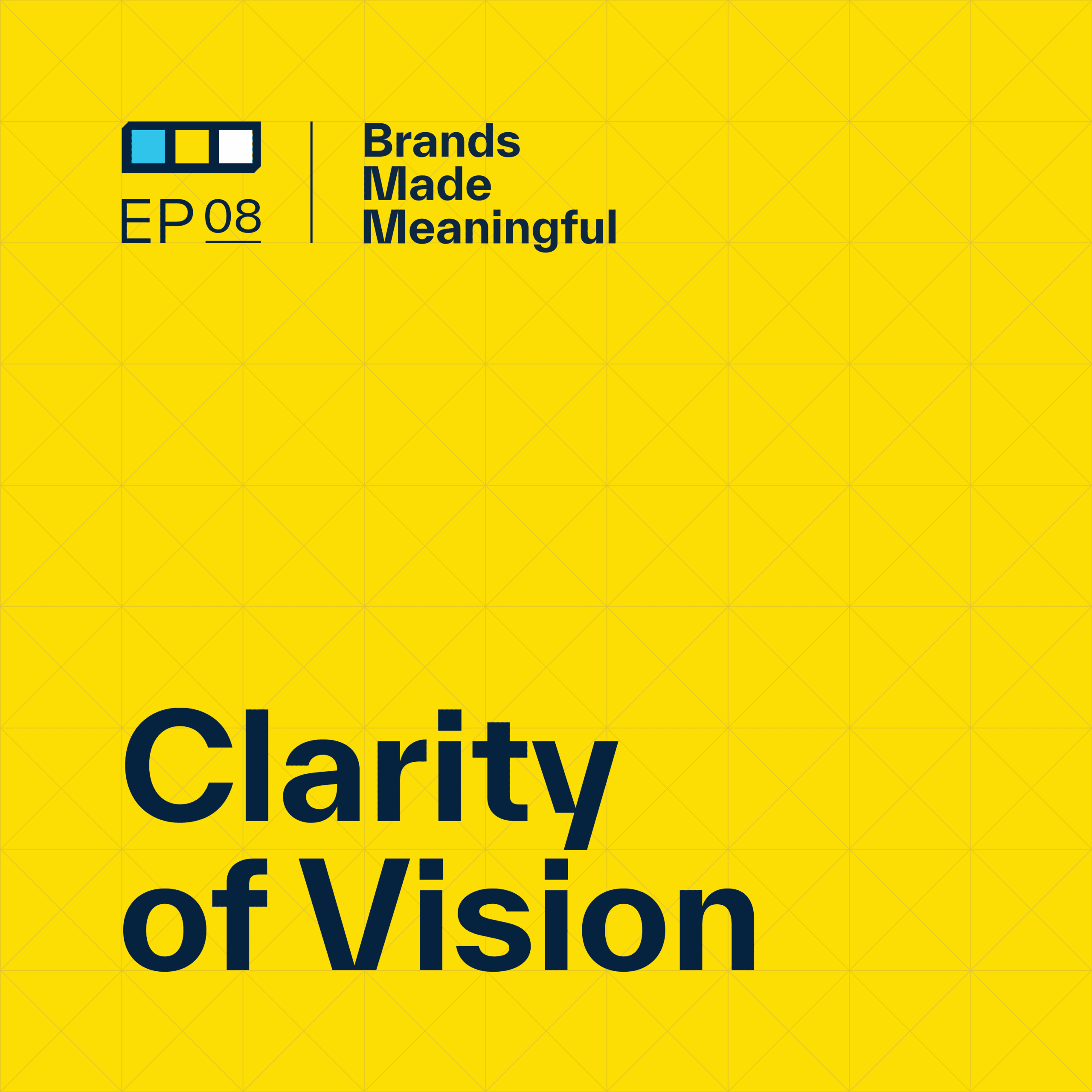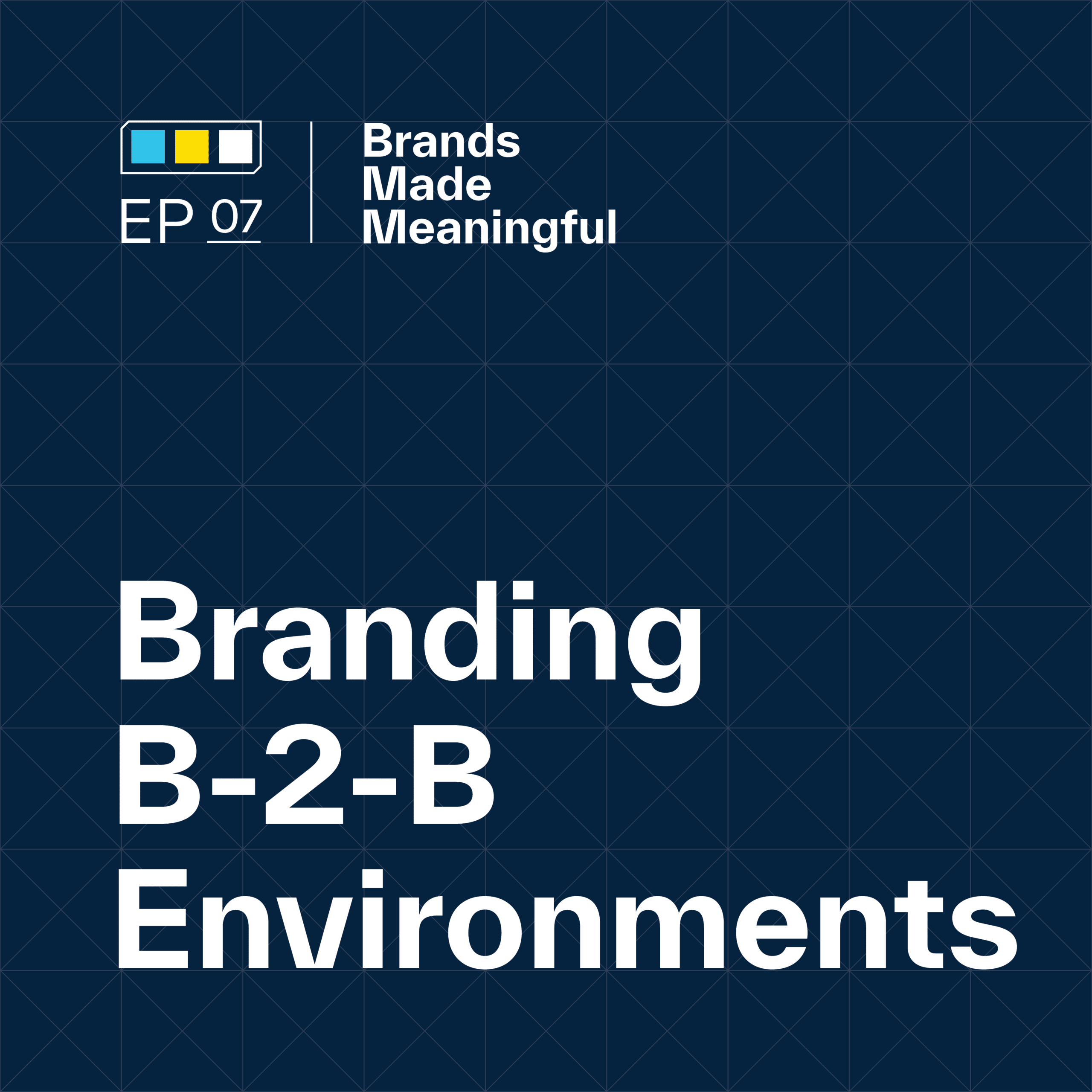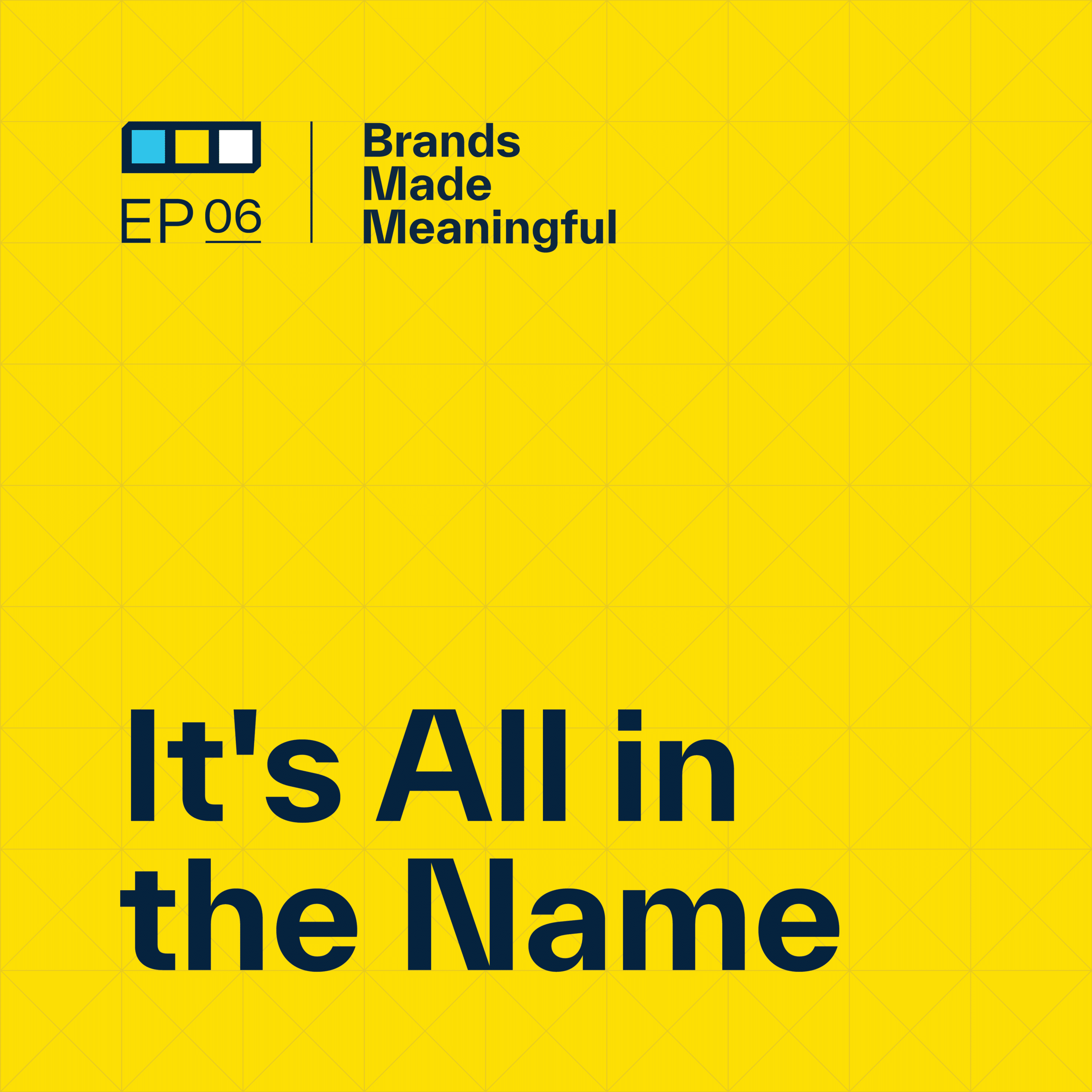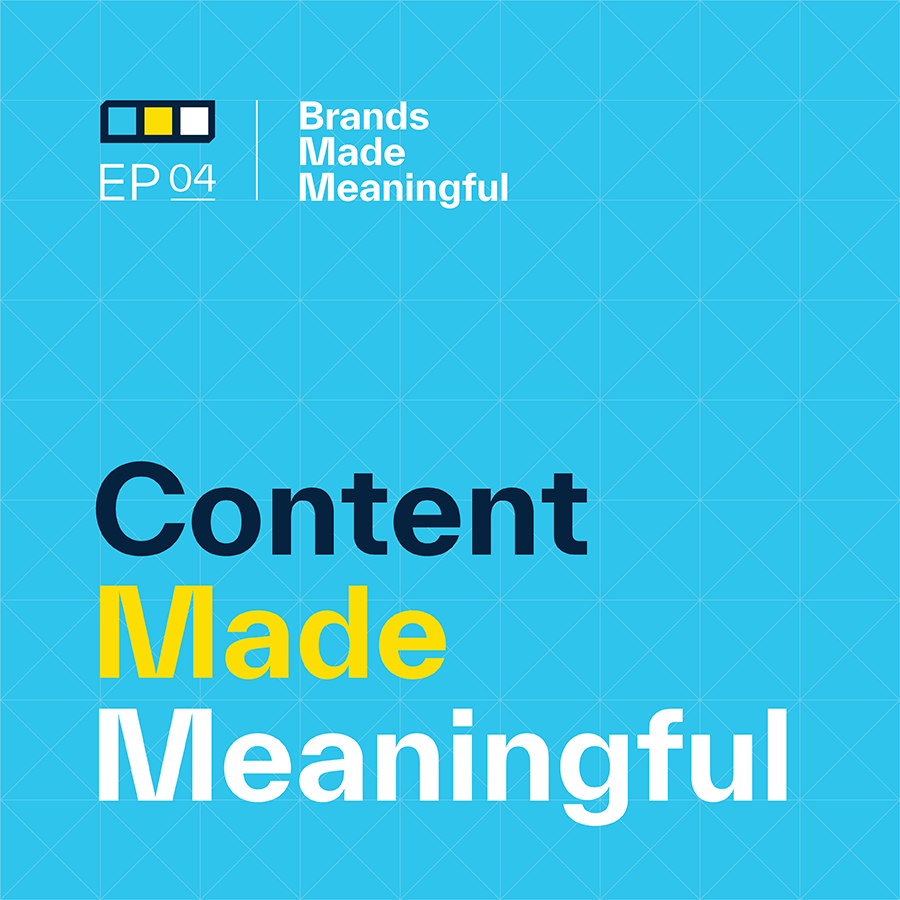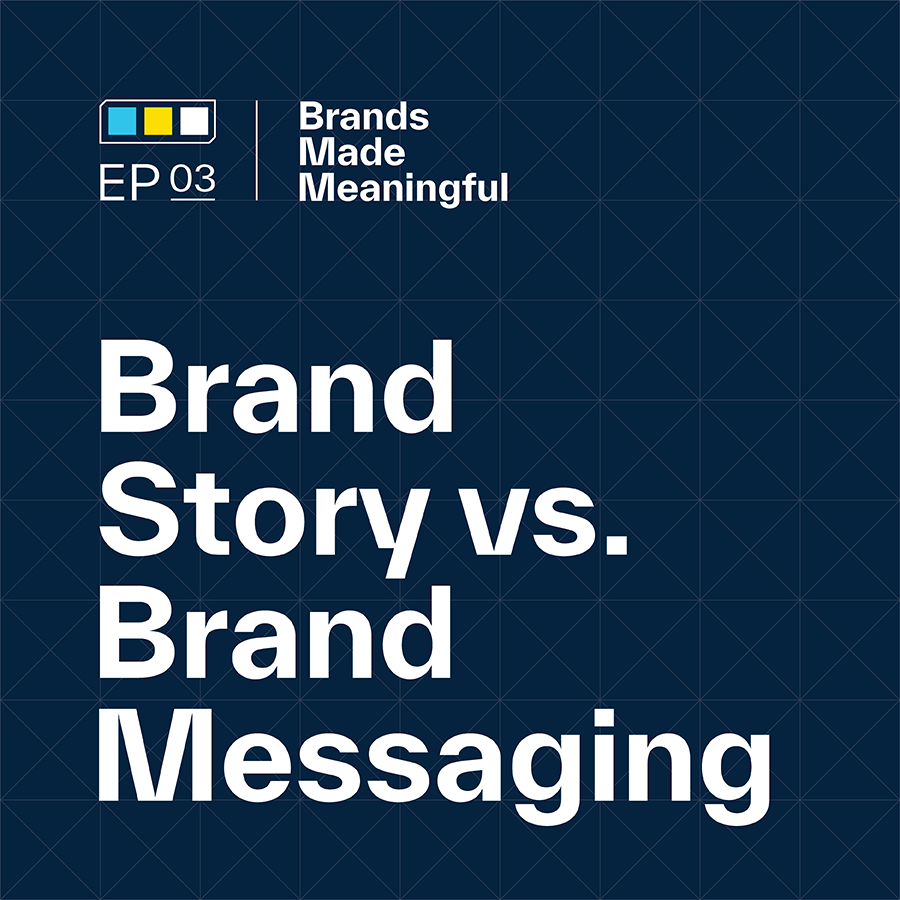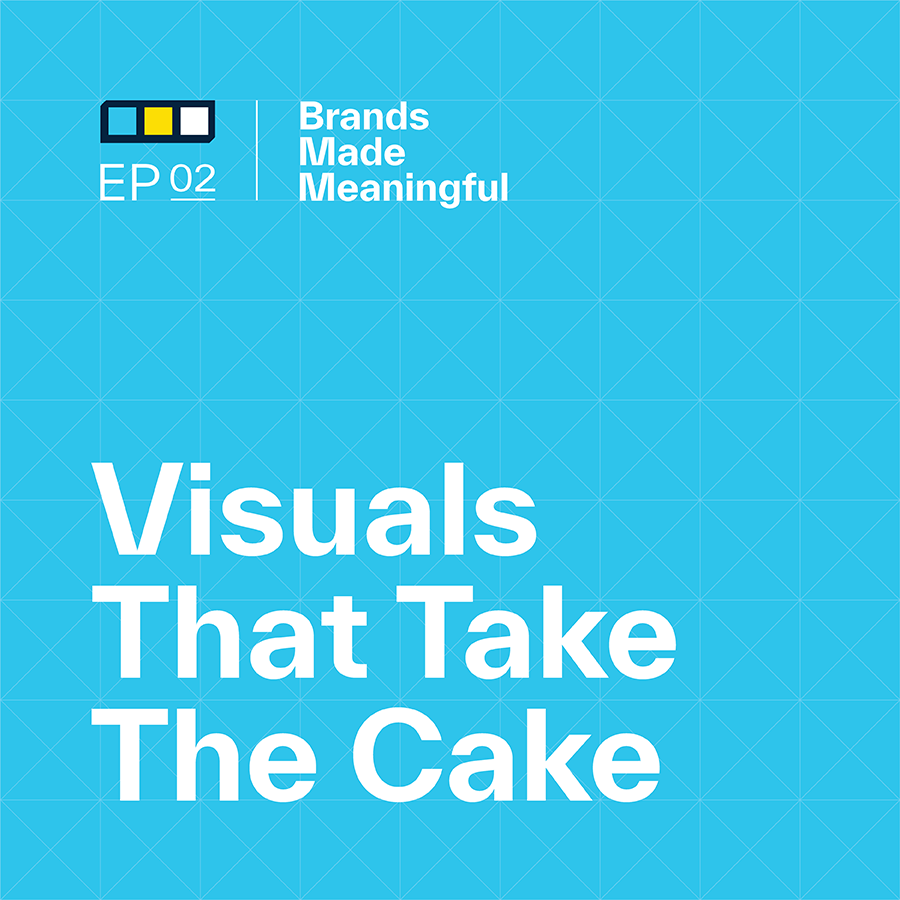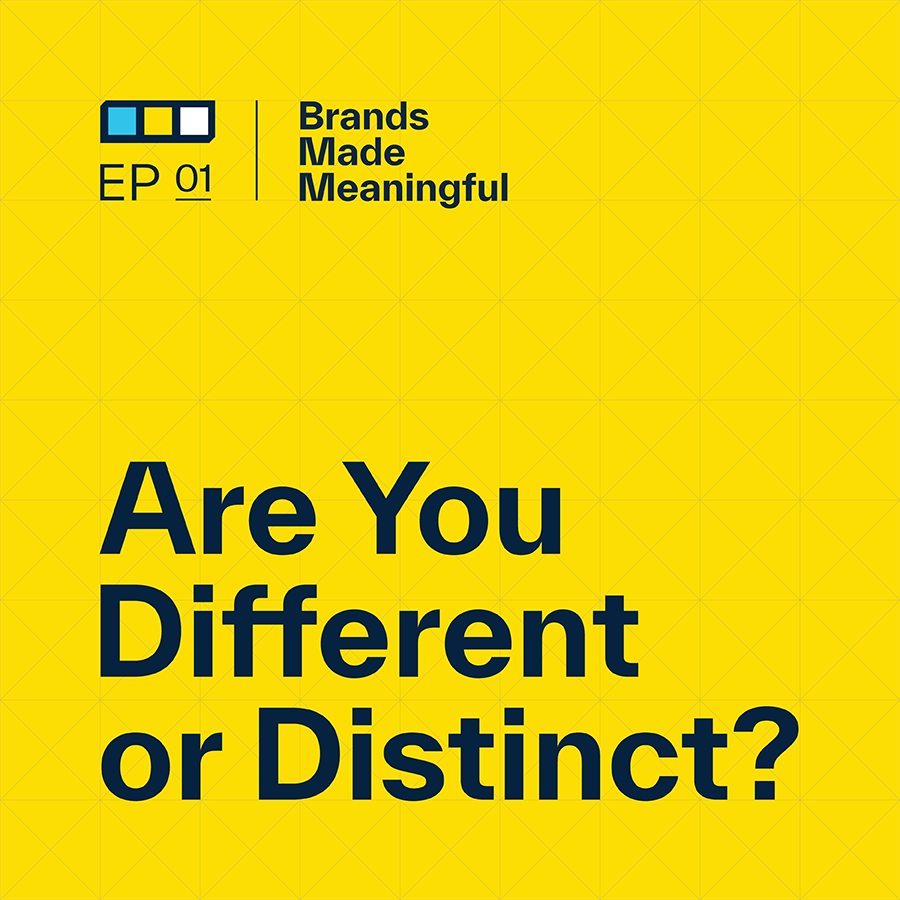EPISODE 05
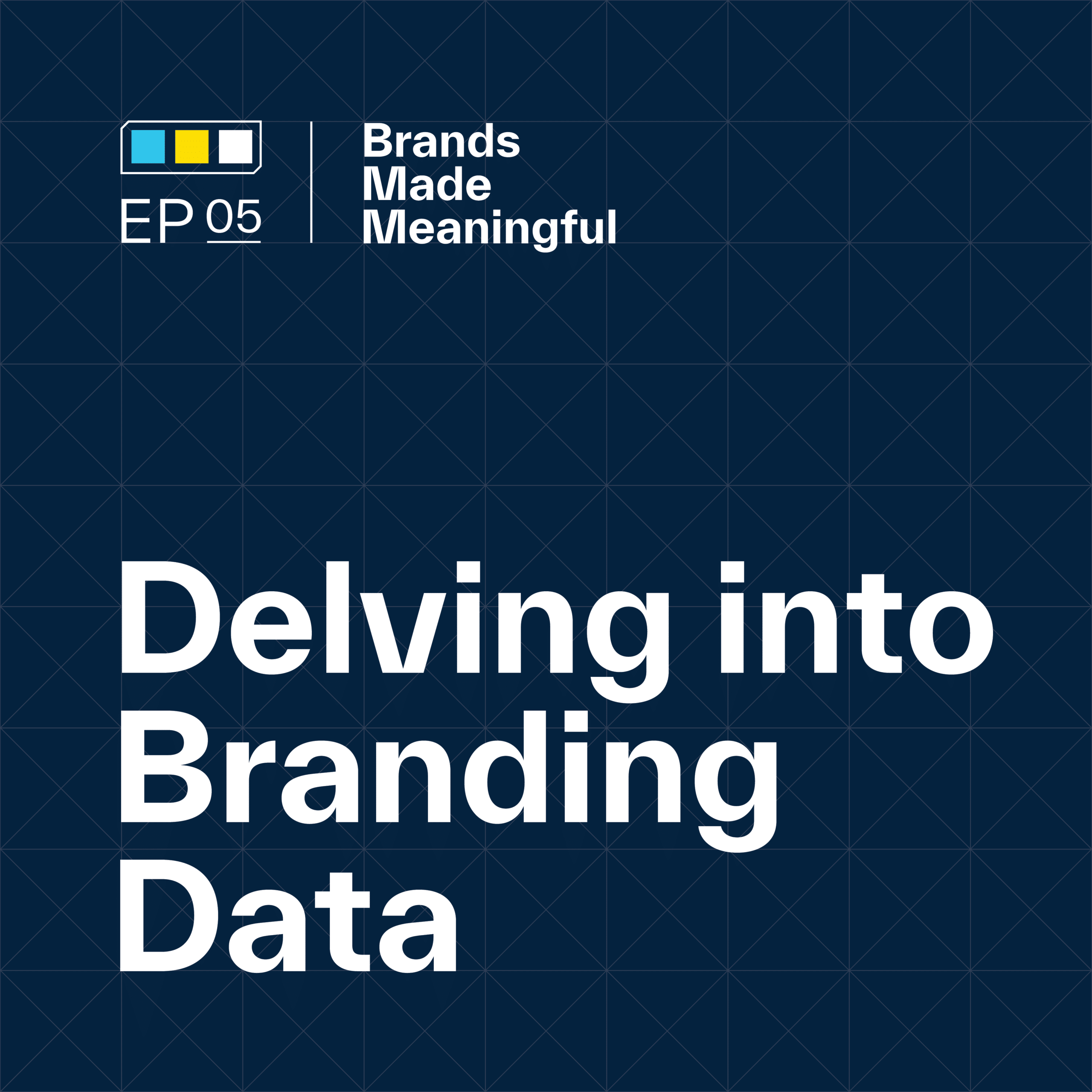
Delving Into Branding Data
Episode 05
Derek and Tucker jump into the discovery phase of branding before it hits the drawing board.
EPISODE TRANSCRIPTION
In today’s conversation, we’re going to talk about research and branding.
Derek
Tucker, I was sitting in my living room last night thinking ahead to today’s conversation and looking at a complete set of Encyclopedia Britannica’s that my parents gave me, a to Z. And in various efforts to declutter our house, they are something I just can’t get rid of even though all of that information is now available online.
Tucker
Do you ever see someone try to sell those? Not door to door, but there was someone in my neighborhood saying, “Free encyclopedias!” And I was kind of like, “Oh, no one’s going to take those.”
Expand Full Transcript
Derek
They have to be a collector’s item in certain circles. Just the volume of information that’s in there and you know, they’re all books. I mean, it’s more than one per letter too – so it might be a volume of 30 or 30 or 40 books. It’s Incredible.
Tucker
It’s incredible to think about, especially our topic today; research. How that used to be versus how it is now is so different because of the Internet. It’s crazy.
Derek
It’s different for all aspects of the various types of research that we do. It’s all completely changed. Well, let’s jump in. So in today’s conversation, Tucker and I are going to talk about research and branding.
Tucker
Yeah and why we do research, where it sits in the phase. So we always do research at the very beginning, which makes total sense.
Derek
Wait a minute, so when we take on a creative project, we don’t go immediately to the drawing board and to our sketch pads and jump on the computer and whip out Illustrator?
Tucker
Yeah, against popular opinion.
Derek
We don’t go straight to our brainstorming board and just start throwing ideas on the wall.
Tucker
No. Well, in movies, that’s what we do.
Derek
In Mad Men.
Tucker
Yeah, in Mad Men that’s how it works, actually. He just goes and spends time with his family or mistress and then just has an idea and moves on.
Derek
Right. So back on topic; research.
Tucker
So we do research in our discovery phase. That’s what we call it; it’s basically our research phase. All forms of research get done in this. It’s the very, very beginning. This is where we kick off the project to understand what we’re trying to do and also gain these deeper understandings. And so when we’re talking about research, we’re really talking about the investigation into the various sources and materials that someone or a brand has for us to dig into. And that helps us establish conclusions that will really help us down the road when we get down to the next phase, which would be strategy; that brand strategy part.
Derek
You know, the more we know upfront, the things that we can learn, understand, clarify; there are components of getting started with anybody within any different type of business that we have to get up to speed on. And interestingly, and oftentimes is the case, our client has to get up to speed on those things, too. They take for granted a lot of this background information based on their intuition and their daily lives. Even for us from time to time, to step back and to say, who is our competition? Who is our ideal customer? To ask some of those questions that we’ll dig into here, a lot of companies take them for granted and think that they know. And many do, but sometimes people are surprised because it’s evolved or changed.
Tucker
And there are times where we find things that people had a hunch or they had an intuition for it, and it was 100% correct, but I think that there’s this idea of validating it and making sure that, “Yep, that is correct. Now let’s move forward with an understanding so there’s no guesswork. We’re moving forward with the right facts and figures on our side.” So when we talk about research, there are two types of research that people normally do; quantitative and qualitative research. I’m going to let you define those in a second, but basically what we focus on is qualitative research. All of our research really hones into that qualitative, and then we have research partners that would help us do some of the quantitative; the market trends, understanding the different data that they pull. We’re not experts in data. I would never claim to be an expert in data, but that’s what we’d really hone our research partners and do.
Derek
I actually had to look this up. I went to my Encyclopedia Britannica, pulled out the Q. Because there really are two distinctly different types of research, and I even think I take for granted from time to time, what’s the difference and the value between a qualitative approach and a quantitative approach? So qualitative, which is the majority of the type of research that we do here when it comes to a branding project, is on the subjective side. It’s the words, it’s more about interpreting the information that we gather to help us understand the why, the how the what. It helps us understand oftentimes the emotional landscape in which our customers and their customers or consumers are.
Tucker
Which makes sense if that’s what we focus on, right? If that’s much more emotional-
Derek
Because branding is emotional.
Tucker
And branding is absolutely tailoring emotions to your products or your services to then utilize them. That makes total sense to me.
Derek
Versus certain marketing efforts like Google AdWords would be more aligned, the way that I understand it, on the quantitative side. Which is objective, numbers-based, measurable, it’s the things like how much, how many, how often? It does end up in hard data that then can be analyzed versus on the qualitative side, it’s interpreted. Does that make sense? Interpreted versus analyzed?
Tucker
Yeah, I would say that there’s similar definitions of those. I mean, the way that you said it. But basically like for me, quantitative is just volume. It’s that if we can get sheer numbers on it and utilize it in more of a mass research quality, that’s what we get quantitative. But for us, we really focus on the qualitative side.
Derek
So if research falls under maybe a scientific category, branding isn’t scientific. So why does research matter when it comes to building a brand, reinforcing a brand, refreshing a brand?
Tucker
From a high level? It’s all about awareness. I mean, it’s about getting a deeper understanding of those strengths, weaknesses, opportunities and threats.
Derek
That classic SWOT marketing.
Tucker
SWOT analysis, some people call it a marketing SWOT. We call it a brand SWOT because we look specifically at their brands strengths, weaknesses, opportunities and threats. But that kind of differs in the way that we look at things from in internal versus in external. We look at the perceptions and the influences of that brand either today or their opportunities moving forward and their threats moving forward in the future.
Derek
Talk us through what’s the difference between internal and external, specifically when it comes to the perceptions people have about our brand; what do you mean by what’s internal or what’s external?
Tucker
Internal would be leadership, employees, stakeholders that are inside that organization. External would then be customers or partners. That differs, and we see that a lot. When most people think they’re going to rebrand and they’re going to do all this stuff, they only think external. And that really hurts them down the road because then they’ll have pushback or they’ll completely feel unauthentic to the people internally. They struggle solving their hiring problems or recruiting problems. So it’s super important for us when we do research to not only look external, to talk to customers and to partners and who this organization is and who should they be, but also who are you from an internal perspective, from the employees that have been there for three, five, ten, 25 years?
Derek
Yeah, you could even, and we’ll do this a different day, but delve deeper into the difference between that partner or investor audience versus your customer or consumer audience. Even if you’re a B2B or a business-to-business category, what potential investors or industry partners might need from you or want from you can oftentimes be very different from what your customers and consumers want from you.
Tucker
Yeah, absolutely. And the idea isn’t to say we need to figure out every single thing that should be said to everyone and say it all at once. But to understand where the values are and to say, okay, so who out of the partners or the customers, who are we valuing more in this situation? And to have that open dialog with leadership as you find these things makes it really easy to put a certain value to those research components.
Derek
So back to the first definition of why this matters, which is awareness. The more you know, the better you can do, the more informed that we are about decisions. What are a couple of the key benefits that comes from doing a little bit of research?
Tucker
Well, the first one is definitely going to be effectiveness of the project. When we talk about something that went really well versus something that didn’t go very well, the flaw was probably in the research. We didn’t ask the right people the right questions or maybe there wasn’t any budget for research at all, or maybe that was skipped altogether. I think that’s something that doesn’t really get thought of as much as the effectiveness could be all at the very beginning instead of, “Maybe the design wasn’t right. Well, maybe the research wasn’t right.”
Derek
By way of an example, we’re working with an organization right now who had an intuition that a new product that they’re launching, could be really relevant to a very specific targeted market. And with a little bit (I say a little bit, it wasn’t a really robust research) but with a relatively small amount of research and surveying, we found out that audience had no interest in this particular product.
Tucker
At all, and that saved them so much money down the road, right? Where they said, “Okay, never mind, this product extension isn’t going to be right for us.” And what we’ve already developed may be right for a different audience, but it’s worth spending a couple thousand dollars upfront to do that research to understand (whether it’s focus groups, surveys in interviews or however it is) it’s better to spend that money upfront than to spend the money in the long run.
Derek
So totally validated the target market example. Or in this case invalidated.
Tucker
And that’s number two, right? If we’re saying that the effectiveness of something could be number one to the reason why research really matters, number two would be to validate what we’re doing and to give us the confidence that we’re putting money into the right resources.
Derek
Another one of my favorite outcomes, probably my all time favorite outcome out of research, are the golden nuggets that happen. When oftentimes, like if we have the opportunity to have a conversation with customers of the people that we’re working with and have the opportunity to ask them, “Hey, what do you guys want with respect to this brand that you’re working with? Or they wouldn’t necessarily think of them as a brand, but you’re currently buying this product or service from Organization X. What else could they be doing to serve you better?” And sometimes that organization X gets so focused on just doing what they do and doing it well that they don’t even realize that they could be doing more, doing better. Or heading down a whole nother avenue, not just from a brand perspective, but opens up opportunities for the entire business in its sales.
Tucker
And you were talking about when we interview customers, I think on the flip side, interviewing an employee who’s been there for ten years and they just haven’t had what it takes to come back and say, “Hey, why aren’t we doing this? Because this is a really good opportunity.” We just had this happen a couple of weeks ago in a project where someone goes, “Well, we serve this market, but this other market is right down that same avenue and they have the same problems and we already have the infrastructure to do that. Why aren’t we doing that and bringing that to the leadership? It makes total sense.” And they’re like, Absolutely. So yeah, we go in with the intent of solving brand problems, but some of these interviews come out where no one’s talked to these people ever and they just want to be heard. And so they’re like, “Hey, I was thinking about this.” And our job is to move the organization forward. So if we find those golden nuggets, we put them absolutely in our research and bring them to light and say, “Hey, you have a problem” or “Hey, you have an opportunity. We can’t do this for you, but it’s a great opportunity. You should explore it.” So the golden nuggets are by far the best thing. So I’m going to skip this last one here, but the biggest, biggest reason why we do research versus just hopping right into design is because we want to do everything with purpose over preference. Right? Helps us get out of the subjective and into the objective and to say we’re trying to accomplish this for these people and we know what that is. And that’s hard to do when you just hop right in. And if if someone’s working with a branding firm or a creative agency right now and they’re not doing research, that’s a big red flag. To say, “How do we know if this is going to be right? Because we’re just relying on our preferences as a leadership team and their preferences as a creative team.” And that’s scary because then you don’t have any kind of guardrails or guidelines there. You have nothing to hold on to. You have nothing to guide yourself. No fence post to follow.
Derek
Yep, so within qualitative and quantitative, depending on a product or project that we’re working on, there are a variety of different things that we would do, but let’s let’s cover the most common five.
Tucker
Yes. So we wrote down five that at a high level, we do more than this. Sometimes we have projects that push us outside these boundaries that say, hey, these aren’t going to get it done. We’re going to have to do something else. Like I said earlier, focus groups, but we don’t normally do focus groups. That’s something that when someone is innovating a product and asks us to come aboard, we rely on focus groups, but that’s not on our top five. So our top five that we always, always do when budget allows is visual research, verbal research, market trend research, interviews and surveys. And those five usually cover the broad net of internal-external. We’re using these differently. So how about we get into those at a super high level? We can talk about each one of those and maybe wrap up. So how about you go with interviews first?
Derek
Which is perfect because that’s what we were just talking about. So we see interviews as a great opportunity (and it depends on how many with each specific project or opportunity that’s going on) to talk to people, and in an ideal way to people on our client’s team and people that our clients have worked with. Oftentimes that third party, like our clients, customers say vendor or partner or investor, they have a different perspective on what that organization provides to people, maybe a different point of view. And it gets outside of those internal organizational walls where a lot of times you inherently get used to thinking the same things, doing the same things. So love to get an outsider’s perspective, a connected outsider’s perspective. And sometimes we’ll even talk to prospective customers. So people who shop, buy, live are looking for a service that’s in that category to get a little bit of their take.
Tucker
I think interviews are my favorite. They are the most time-consuming, absolutely. They take a lot of energy to conduct them, we usually do somewhere between a half an hour, 45-minute interviews. And we can gather a lot of insights on somebody then, but when we talk about golden nuggets on the why we do this, why we do that, when we take things back to the leadership and like here’s a couple of golden nuggets, almost always they come from interviews. Because they’re just a knee-jerk reaction. I like this as well because it’s really reactive. They’re not ready for the questions every time we send the questions, usually beforehand. But when we’re just having a conversation and it seems lighthearted, they’re not quite thinking deep about this. So we get the most reaction –
Derek
Intuitive.
Tucker
Yep – and just, “This is what I think.” And that’s where you get just this gold.
Derek
And that intuitive reaction is the way that brands are reacted to. When your brand shows up someplace in whatever way, shape or form on an ad, on a website, on a shelf, you have two, three, 4 seconds to capture somebody’s attention. So you have to have an initial intuitive input to make that type of short timeframe experience effective.
Tucker
So if we’re talking about how it takes a long time doing all that other stuff, how about let’s talk about the flip side of that. For surveys, when we survey people, what does that kind of look like?
Derek
Well, great question. So sometimes we’ll survey people because the project parameters, timeline, and availability just don’t let us sit down with a certain number of people. We had an organization that we’re working with that has over 100 employees and the budget and the timeframe just didn’t allow for us to calendar and schedule with 100 individuals and ask each of them, you know, half an hour or 45 minutes a question. So there’s a logistics aspect to it. There’s also you get the benefit of allowing people to reply or fill out that survey under anonymity. Where sometimes if you’re talking to somebody one on one, there are certain things that they’re not comfortable saying for obvious reasons, that if you give them the option to reply anonymously, (I think we have to do a better job of vetting anonymous responses, especially if it’s a paid type of survey that we’re sending out to make sure we’re doing due diligence) but you may oftentimes get more honest answers also.
Tucker
Yeah, I think so. But the idea of sitting down and writing something is a little bit more thought-provoking where they could say, “Hey, that’s the question. I thought about it a little bit and here’s my answer.” Instead of like an interview, as we said, it’s just reactionary. It’s, “This is what I think.” So it’s coming at it from both sides. When we could do surveys and interviews to get these kind of conflicting things where someone has time to think about it versus when somebody has knee-jerk reactions, that’s where we get to the really interesting part. But the thing I like about surveys that we don’t necessarily talk about when we do interviews is that one interview can really skew your perception. With a survey of 100 people, you have a much broader sense of, okay, so what are we really hearing here? Maybe three people complained about this, but 97 didn’t.
Derek
So the survey almost gets into the quantitative aspects because you’re gathering potentially more data.
Tucker
But it’s long-form, so it’s still qualitative. But surveys could be quantitative to say there might be questions on there that are just like, rank this from here to here and get some data on it. Or what’s your demographic? Or some of those answers could absolutely be a part of that. But what I’m really talking about is in an interview, if you have 35 interviews and in two interviews, somebody says something specifically negative about something, right? And I can’t think of an example right now, but then if we go into a survey and there’s only two people out of 100, then it’s like, okay, maybe it’s not that big of a deal. Or maybe that’s a specific event that’s happened to them, but that doesn’t happen a ton. That’s just a one-off or something like that. That’s where we get the less skewed data; on a survey.
Derek
Yeah, and we can save this for another day when we get into tactics, but there are a variety of tools that we use. There are things that need to be incentivized to help. How do you get people to respond? What’s the best format, electronic or otherwise? We can talk about that when we get into tactics sometime, but surveying is incredibly helpful. How about number three? We talked about the analysis and gathering and researching of market trends.
Tucker
Yeah. So we work with some people, some great people that help us look at some of these things, which would basically fall under the category of market trends. And that’s really quantitative from an understanding of how much money is in this market, where is it moving, where are the trends, are we seeing growth? Are we seeing a decline in this or are we seeing a difference in the way that people are shopping? The behavior is really interesting to see from a numbers perspective. I know we had a project not too far back here where we had our partner come back to us and they were like, “Hey, we’re seeing 40% year-over-year growth in this category versus this other category. This is a great opportunity to start getting in at this level.” And that really validated for them that, this is correct.
Derek
Yeah, we had another one that did market trends on a certain age and demographic that confirm that that customer consumer base is already buying a comparable product four times a week in this consumable market. So that’s enough for us to say, okay, this product people are actively buying and looking for and consuming this product.
Tucker
Exactly and like I said, that’s the validation that I think gives everyone on the team, whether it’s client versus creative team – doesn’t matter, everyone on the project then gets a little bit more validation and a little bit more confidence in what we’re doing. And it also gives us a better understanding from a demographic perspective on who we’re going after. When we can get those numbers to say, “Nope. Females that are 24 to 18 years old are loving this product versus males that are 35 to 45.” That gives us a really great understanding from a creative perspective, saying, “Okay, now we understand who we’re going after,” makes it a lot easier to tailor that creative.
Derek
And depending on what industry you’re in, markets can be changing and evolving constantly. So this isn’t necessarily a one-and-done thing. It’s a pretty good idea to be evaluating the trends in your market on some sort of consistent basis.
Tucker
Yeah, and I think that when innovation happens, I think it’s easy for everyone to just rely on intuition. But there is so much great data that people can go poll that help us uncover these blind spots that before that we didn’t have. But I think the overarching goal for research is to uncover blind spots, but I feel like we get it a lot with these quantitative market trends to say, “Hey, by the way, this is the way the market’s moving. Just so you know.” We can make a decision based on if that’s the way we want to go or not, but at least we know.
Derek
So for somebody like you, Tucker, who focuses on the brand strategy side of building this amazing brand. The next two are the ones that I get most excited about, as a creative director, the visual and the verbal. Having all that strategy now in place, having it validated, having objectives and guidelines to then go into the visual side, which can be incredibly subjective. But to use that data to influence the choices that we make in what the images look like ultimately is critical.
Tucker
And when we look at it from a strategy point-of-view, if the five are interviews, surveys, market trends, visual and verbal research, the interviews, surveys, market trends, those are really what we’re doing to gather this deep rooted strategy. And then the verbal and the visual research really helps us then say, okay, on top of that, a top of the golden nuggets that we’ve found and the markets going this certain way, and we’re going to go this way and we’re going to be positioned like this. If we’re positioned by X, how are we going to look and how are we going to sound versus how everyone else looks and sounds? And that’s very, very interesting. Like you said, coming back to a visual perspective and you’re creative director here on this, this is where you’re really digging in, right?
Derek
Yeah, it’s. It’s amazingly helpful as a step in the process to research what your competition looks like. And when I get to visual and verbal, I can almost combine them. We’re going to go look at (and it depends on how many are in your space) the top three, the top five or the top 20 competitors in your space. What do they look like? What are their visuals? What color palettes are they using? What does their logo symbolize, if anything? What are the types and styles of photography that they’re using to tell their story? What’s the overall look and feel of that brand? Understanding that landscape is a really great step. Then self-auditing and saying, how does my current branding fit within that? But before we get to that audit piece, it’s the collection and the review of what everybody else is looking like.
Tucker
Yeah, and I think a part of visual and verbal, we’re kind of combining four and five here into visual and verbal research, but that still is internal-external, right? Internally, we need to gather every single asset we possibly have so that we understand what we have today and what can be utilized moving forward. I think a lot of people assume when we do rebrands that we throw stuff away and we absolutely do not. If it’s still relevant to the strategy, then we keep it. Because there’s equity in what’s been used in the past. Or we tweak it, which is a common thing when we say we can either refine it, refresh it, or completely redo it. That’s an easy way for us to explain that the process isn’t just like, “Hey, you don’t like what you have, let’s just destroy it and start over.” It’s, “Nope, there’s something here.” You’re successful enough to keep this going and people still buy from you, but let’s figure out what needs to be either added or tweaked to keep it moving.
Derek
Yep. In addition to looking at what your competition looks like, if your research has helped you hone in on a demographic (like a specific gender and age group) then it also can be really helpful in this process of looking at other brands that are completely outside of your market that have that same demographic. Back to your 20, 18 to 24-year-old female audience, there are probably countless numbers of brands who have also targeted that exact same audience that aren’t in your industry. So I love to go look at the ways that other companies that in our perception, are doing a successful job of marketing and designing for that audience to see what kind of messages and visuals they’re using too.
Tucker
For sure, and what’s working and what’s not working and just learn from other people’s attempts at it. I think we’ve had great success with saying, Hey, this product is for this type of person. And maybe that person, let’s say it’s an 18-year-old male, maybe that person really likes playing video games. Let’s look into the video game market and see what they look like. What are they saying to them? Is there anything in there that we could be intrigued by or maybe even utilize on our own?
Derek
You’ll see that come to life a lot of times in advertising. You’ll see that whatever company X has determined that their target audience is one that watches golf on TV. That’s why you see that company’s products advertised. That’s why they believe that that’s a viable place for them to advertise, because they’re sure they’re aligning with those similar, like-minded demographics.
Tucker
And if you just take that and say, “No, we’re going to take it into not where they sit, but other brands that they consume and then really pick those apart.” Then it makes it really easy to then pull the things or the items that really resonate with your current customer. And it also helps us look at trends a little bit. To say, “Okay, we’re moving in this direction visually or moving in this direction verbally. How can we either get in front of that or how can we utilize that to our knowledge moving forward?” So anything else on those before we move on here?
Derek
Yeah, you mentioned focus groups before. And while that isn’t something that we do all the time, there have been a couple occasions where focus groups are relevant, especially in that validation help when it comes to the visuals and potentially the words too. There are times when it can become a component that gives our customer peace of mind by serving 100 people on packaging design A or B. And getting some data that validates that option A is indeed the one that we should move forward with.
Tucker
I think the thing I like the most about focus groups is when you sit down with a group of, let’s say, 20 people and you ask one question and somebody gives an answer, and another person kind of goes, “Well, I don’t know about that.” And they start talking among themselves; this is where you get that collaboration of thoughts that really helps you understand the way that people are thinking and what sets off other people. So it’s super interesting. I know we don’t use it a lot, but I love when we can.
Derek
Oh, and one other word on verbal; any sort of research that you should do is to make sure that if your product or language gets translated to other languages, if there are any unintended consequences of what those words might translate to in another language.
Tucker
And that’s something people don’t think about ever. Especially if you’re a global brand or you have the aspirations to become a global brand, that’s something that you have to 100% think about.
Derek
We were working with a company and brainstorming names for a product line, and one of the product lines translated to something completely different in Spanish. Which was a very similar wave of the word that we were reading in English, but it had a completely different word and a connotation that would not have worked us.
Tucker
It was no bueno. All right, so those are the top five that we use, plus a little kind of add-on there with focus groups but what happens if we don’t do research? And we’ll make this quick because we’re already over time here. But if we don’t do research, what could happen? Or maybe we haven’t done research and we’ve finished a project or maybe someone listening has finished a project and something has gone wrong and they don’t know what it is. What is a symptom of not doing good research?
Derek
One, especially when it comes to the creative process, might be a lack of confidence in ultimately where your time and resources are being focused and invested. If you’re feeling like you’re spinning your wheels and internally people aren’t on board with why you’re going after some certain market because that market’s not responding in the way that you anticipated because you were acting on a hunch or intuition instead of on some facts. That’s a really common one.
Tucker
Yeah. I mean, when you don’t have the internal buy-in, it’s really hard to justify something that’s gone wrong. And I think this even is another point off of yours, but to say there’s no internal buy-in, maybe because it has gone wrong and there’s really no reason that’s gone right. They didn’t have any rationale for why they did it.
Derek
If it’s three different conflicting opinions on what is the right way to move forward and it’s apples to apples to apples without a little bit of data or research to have supported one of them, to at least say, “Okay, we have enough information to go forward with this one, let’s give it a shot.” If you don’t do that, then it’s like, “Oh, well, I told you so. I thought the other way.”
Tucker
Yep, that’s brutal. What about number two?
Derek
Lack of marketing success. You launch a brand, you launch a product; if it’s not accepted by that market, you might have targeted accidentally the wrong audience.
Tucker
We have plenty of people that we talk to about this stuff, but one time we had a conversation where someone said, “Oh, it’s not working for me.” And the other person in the group said, “Well, maybe it’s because the market didn’t need it.”
Derek
Yeah.
Tucker
And that was almost like a slap in the face, but it was 100% true. It was. Maybe it just didn’t need that product, or maybe it didn’t need that solution that you’re trying to sell. Instead of trying to fit the solution into your market, understand what that market’s problem is, then provide your solution.
Derek
And what’s our final one specifically when it comes to what that bottom line is looking for?
Tucker
The lack of ROI. And the only reason why this is the last one is because everyone cares about it. Lack of ROI is 100% a part of not doing research. If you spend $100,000 on a rebrand and you don’t get that and way more out of it than whoever you did that with did not do enough research. Because it has great upside for most organizations and if and if there is not much upside, they should find that in the research and then come back and say, you know what, this isn’t right. You’re not going to get much out of this because you’re already doing all these things great. And so I think the lack of ROI is a really great symptom to look for and say, “Oh, we didn’t have as much impact on either our goals that we set out to achieve, or we didn’t have an impact from that bottom line like we thought we would.”
Derek
So research is a key step in making your brand effective so your marketing works so that you can grow your business.
Tucker
Yeah, well, and I think that’s what it comes down to. Is we don’t brand because we want it to look pretty and we do all this work and do all the research because if it’s not meaningful and it’s not going to make a difference for you, then this shouldn’t be done. And I think we stand by that pretty strong.
Derek
Sounds good. So if anybody is looking for a set of Encyclopedia Britannica’s DM me.
Tucker
I think you’re going to have to hold onto those for a couple of decades then sell them at like a thrift store or something.
Derek
Well, in the meantime, if I can help do a little research and find out what they’re worth, that would be great.
Tucker
You know, the year is on them.
Derek
I don’t. But it’s going to be in the early seventies.
Tucker
Oh cool. Interesting.
Derek
So I’m sure that some information would have changed by then.
Tucker
High value. You should put them in your office.
Derek
I’ll think about it. Okay. Let me do some research and see if I have some space.
Tucker
All right. Thank you.
Derek
Till next time.
More Episodes Like This
Changing a Club’s Membership ModelEpisode 83
Derek and Tucker discuss key considerations and challenges when changing your club’s membership model.
Connecting a Club with its Story with Jackie CarpenterEpisode 82
Derek and Tucker are joined today by Jackie Carpenter, author of People First.
Branding a Club AnniversaryEpisode 81
Derek and Tucker discuss the unique opportunity presented by milestone and anniversary dates for private clubs.
Private Club Storytelling with Ricky L. Potts, Jr., CCMEpisode 80
Derek and Tucker have the pleasure to speak with Ricky L. Potts Jr. about how powerful storytelling can be for your club members.
Opportunity in Club Facility RenovationEpisode 79
Derek and Tucker discuss pivotal key moments in your legacy and how to transform your story through renovation.
The Evolution of Club Members with Jon LastEpisode 78
Derek and Tucker are joined by Jon Last from Sports & Leisure Research Group to discuss the evolution of club members.
Member Branding vs. Product BrandingEpisode 77
Derek and Tucker discuss the challenges their client's have moved through when approaching differing styles of branding.
The Role of a Private Club's LogoEpisode 76
Derek and Tucker take a look back on private club logos they've designed over the years and explain the strategic reasons behind their choices.
Club Brand GovernanceEpisode 75
Derek and Tucker divulge the steps to evolving your brand while retaining your core values.
Seasonal Member MerchandiseEpisode 74
Derek and Tucker take a look at crafting specific merch to celebrate landmarks and special times of the year.
Who is Sussner?Episode 73
Derek and Tucker take a break from talking shop to talk about who they are and what they stand for.
Club Identities Beyond AmenitiesEpisode 72
Derek and Tucker discuss what it takes to stand out in unique ways for your club.
Little Things Mean EverythingEpisode 71
Derek and Tucker take a look at the often missed and easy to overlook.
Build Flexible Brand SystemsEpisode 70
Derek and Tucker break down the building blocks for long lasting branding.
The Club at Golden ValleyEpisode 69
Derek and Tucker take a close look at one of their recent rebrands.
When to Launch a Club RebrandEpisode 68
Derek and Tucker break down how to find the perfect timing when launching a club rebrand.
Steps to Launching a Club RebrandEpisode 67
Derek and Tucker break down the steps to take and the reasons why you should consider a club rebranding.
Brand Marketing vs. Brand DesignEpisode 66
Derek and Tucker define the line between marketing and design and how they intersect to inform one another.
Building Brand GuidelinesEpisode 65
Derek and Tucker show us how to build infrastructure guidelines to unify your brand experience across the board.
Club Identity SystemsEpisode 64
Derek and Tucker cover what Identity Systems entail and how to discern between internal and external methodologies.
Navigating Branding With a BoardEpisode 63
Derek and Tucker bring clarity to uniting your company under one cohesive vision.
Putting a Committee TogetherEpisode 62
Derek and Tucker assemble your need-to-know facts when putting together your committee.
The Guiding Principles of Private ClubsEpisode 61
Derek and Tucker go over the top ways private clubs can find the balance between pleasing old members while attracting new ones, all while making moves towards the future.
How Color Affects PerceptionEpisode 60
Derek and Tucker cover how to best convey your business with color.
Brand EcosystemsEpisode 59
Derek and Tucker break down how to craft effortless experiences when considering your brand as a whole.
6 Types of Brand TransformationEpisode 58
Derek and Tucker dive into 6 distinct types of transformations for a wide range of brands.
Tournament Branding For ClubsEpisode 57
Derek and Tucker discuss designing and delighting your club members with tailored events.
Brand Promoters & DetractorsEpisode 56
Derek and Tucker discuss how high level promoters increase your NPS and how to turn the tides on your detractors.
The Loudest Voices in the RoomEpisode 55
Derek and Tucker talk about gathering feedback while prioritizing every voice.
Determining A Primary AudienceEpisode 54
Derek and Tucker discuss if and when you should be honing in on your audience vs. casting as wide a net as possible.
Branding For ExclusivityEpisode 53
Derek and Tucker discuss the intricate process of naming your brand.
Measuring Brand SuccessEpisode 52
Derek and Tucker discuss how we measure our success in branding and a few key KPIs that help us understand our impact.
Branding For ExclusivityEpisode 51
Derek and Tucker breakdown how brands can create the perception that they are exclusive and only for a certain type of consumer.
What Makes A Brand SurprisingEpisode 50
Derek and Tucker break down the Sussner formula that we believe leads to a surprising brand.
Breathe Life Into Brand TraditionEpisode 49
Derek and Tucker discuss the intricacies and common pitfalls of branding for Private Golf Clubs.
They Key of Visual DifferentiationEpisode 48
Derek and Tucker break down the importance of differentiating your brand on a visual level.
Branding For Private GolfEpisode 47
Derek and Tucker discuss the intricacies and common pitfalls of branding for Private Golf Clubs.
Dealing With An Identity CrisisEpisode 46
Derek and Tucker breakdown how to identify and remedy a brand's identity crisis throughout thoughtful and intentional brand management.
Branding vs MarketingEpisode 45
Derek and Tucker discuss the differences between Branding and Marketing and how to make the two compliment each other.
Build Your Brand's FoundationEpisode 44
A brand's foundation is a critical element in being successful in the long-term.
Building a Constructive Branding ProcessEpisode 43
Derek and Tucker break down the steps required to build the most constructive and meaningful branding process.
What Makes a Brand Relevant?Episode 42
Relevance is a key piece of a brand's identity for creating clarity and connection.
Your Right to WinEpisode 41
Derek and Tucker discuss the “Right to Win” and the odds of your brand's success within your target market.
An Intro to Sub BrandingEpisode 40
Derek and Tucker discuss the nuances of developing sub-branding and strategies.
Conquer Branding FearsEpisode 39
Derek and Tucker dive into how to overcome the fear of change and the nature of constant refinement of your brand.
Balancing Strategy & DesignEpisode 38
Great strategy is a necessary foundation for great design—and great design brings great strategy to life.
Branding PrioritiesEpisode 37
Branding priorities are the actions and initiatives that shape or enhance a brand's identity, perception, and market position.
Invest in Your BrandEpisode 36
Investing in your brand benefits your company as a competitor in the marketplace, builds trust with customers, increases perception of quality, and drives employee engagement.
Why is Positioning Scary?Episode 35
Narrowing the brand's position is really a strategic decision to focus the brand's offerings, messaging and target audience on a specific niche or segment within the market.
What Are Brand Consultants?Episode 34
Derek and Tucker discuss the importance of hiring expertise with a wider breadth of knowledge than just visuals.
Hire for Brand FitEpisode 33
Hiring people that fit your brand is key in order to maintain brand authenticity, positive culture, and consistent messaging.
Your Brand’s Stance MattersEpisode 32
Your stance can help define your brand from a core level and make branding, hiring, and marketing not only easier, but more meaningful.
Levels of Executing a Brand RefreshEpisode 31
If you have a brand strategy in place, how do you execute it?
The Role of Features & BenefitsEpisode 30
Derek and Tucker discuss the importance of features and benefits within the context of branding, selling, and marketing your products and services.
Should You Listen To or Lead Your Customers?Episode 29
Within the challenge of any rebrand is the challenge of managing customers' perception of change.
Managing a Brand TransformationEpisode 28
Episode 28 discusses the highlights and challenges of rolling out a new brand, both internally and externally.
Living Your BrandEpisode 27
Your brand is not this shiny trophy on the shelf. It is something that you are molding every single day.
What Makes a Brand Authentic?Episode 26
Season 2 starts off with a discussion about building authentic brand experiences, both internally and externally.
Reviewing your Competition's CreativeEpisode 25
Derek and Tucker discuss the process of reviewing your competitors' creative strategy to better position your brand within the market.
Interviewing your Audience for InsightsEpisode 24
This episode details the process and benefits of interviewing your audience as part of the branding process.
Assumption ReversalEpisode 23
Derek and Tucker discuss how we change our thoughts and get into a different mindset to refine and revise our branding.
Developing vs. Amplifying a BrandEpisode 22
Another way to say it is, development is building and crafting your brand story, and amplification is then telling it.
Refreshing a Sporting Goods BrandEpisode 21
This episode shares the steps behind Sussner’s work in refining the Shock Doctor brand.
Defining PerceptionEpisode 20
Derek and Tucker discuss the positive and negative impacts of brand perception.
What is a Brand?Episode 19
Derek and Tucker discuss what defines a brand and what makes them successful.
Branding Golf Courses vs Golf ClubsEpisode 18
Derek and Tucker further hone in on golf course design.
Refreshing a Golf CourseEpisode 17
Derek and Tucker discuss the bar for golf course design – and how to push past it.
Let’s Talk Taglines Episode 16
Derek and Tucker talk taglines in today's episode.
Refreshing an Athletic DepartmentEpisode 15
Derek and Tucker sit down today to discuss what logos mean within branding.
Branding a Club Episode 14
Derek and Tucker discuss how to brainstorm branding a club.
An Intro to Internal Branding Episode 13
Derek and Tucker discuss the power behind internal branding.
The Value of Stereotyping Episode 12
Derek and Tucker sit down today to discuss the meaning of stereotyping within the branding world.
We’re on a Mission Episode 11
This episode digs into the rallying cry for the greatness your team is going to accomplish.
Aren’t Brands Just Logos? Episode 10
Derek and Tucker sit down today to discuss what logos mean within branding.
The Business You Are Really In Episode 09
Derek and Tucker sit down today to discuss how to discover what business you are really in to better understand your mission statement.
Clarity of Vision Episode 08
Derek and Tucker discuss the importance of looking ahead towards the big picture to better hone the purpose behind what we do in the now.
Branding B-2-B Environments Episode 07
Derek and Tucker discuss the Branding of Spaces.
It’s All in the Name Episode 06
Derek and Tucker discuss what a name can say - and not - about your company.
Delving Into Branding Data Episode 05
Derek and Tucker jump into the discovery phase of branding before it hits the drawing board.
Content Made Meaningful Episode 04
Today Derek and Tucker discuss the concepts within content and its common misconceptions such as the phrase "Content is King."
Brand Story vs. Brand Messaging Episode 03
Your story matters.
Visuals That Take The Cake Episode 02
Derek and Tucker sit down to discuss visual impact and what that could mean for your brand.
Are You Different or Distinct? Episode 01
It's not about being the only option, it's about being the right option. Join Derek and Tucker as they discuss Differentiation & Distinction.



